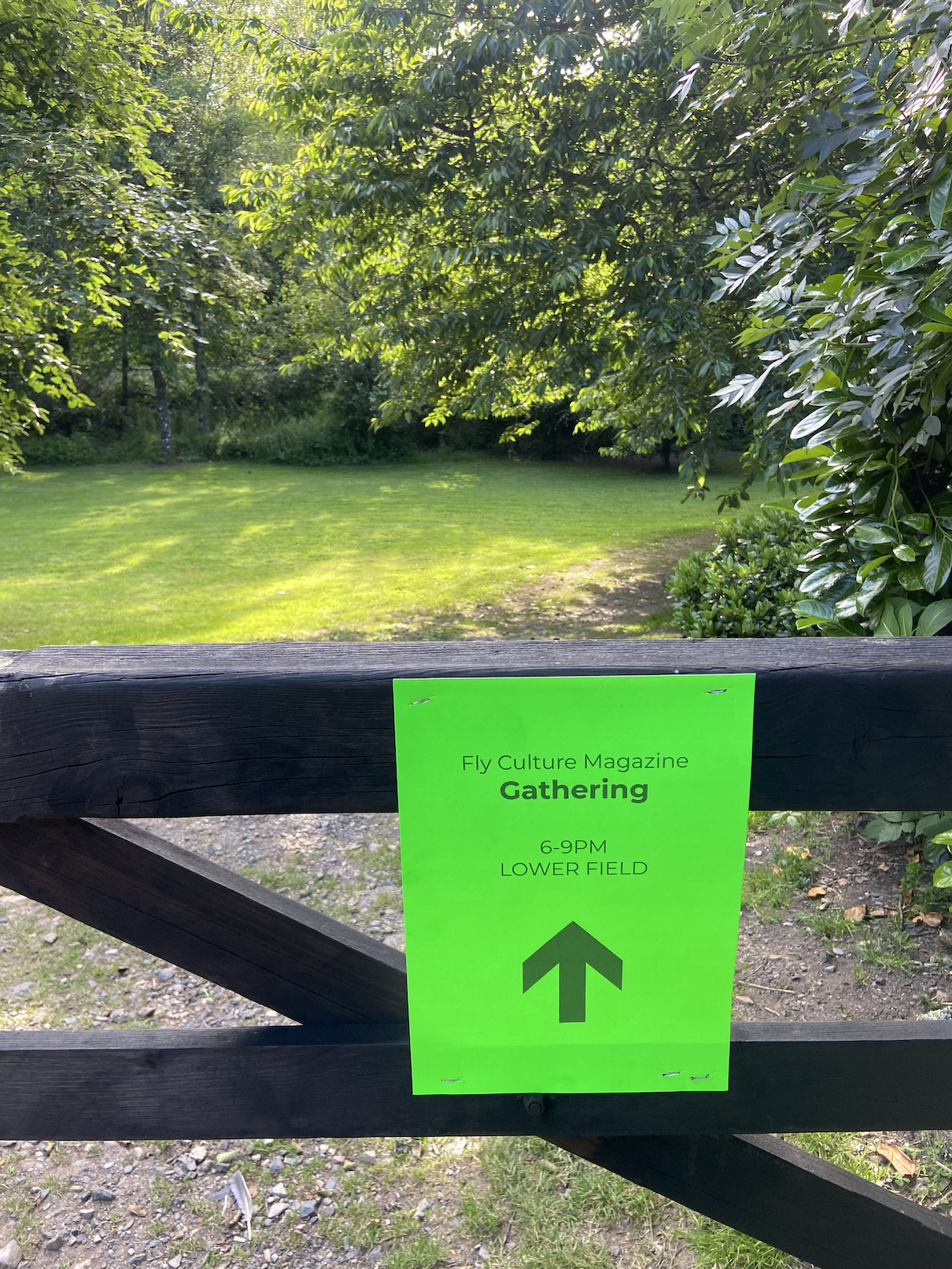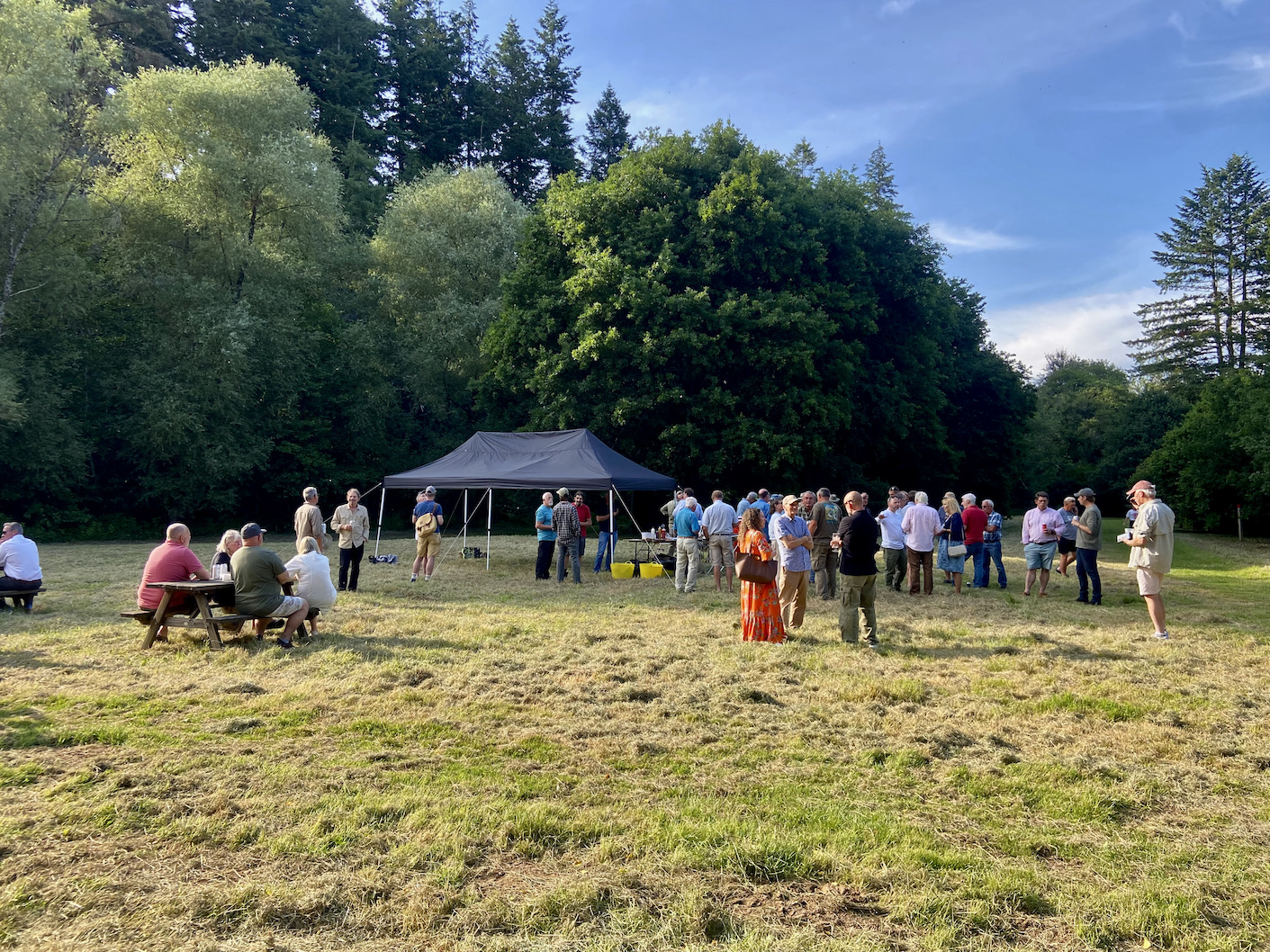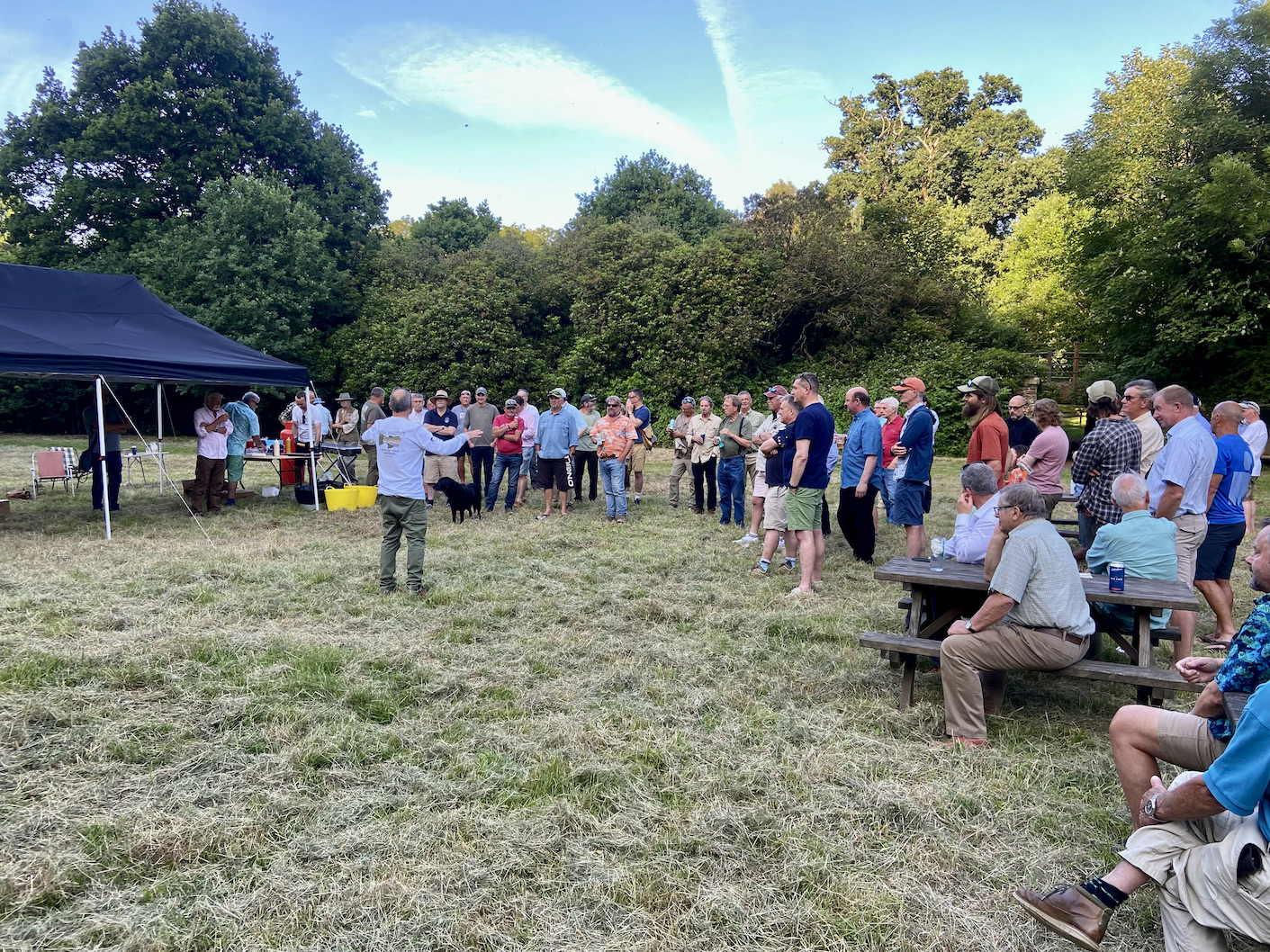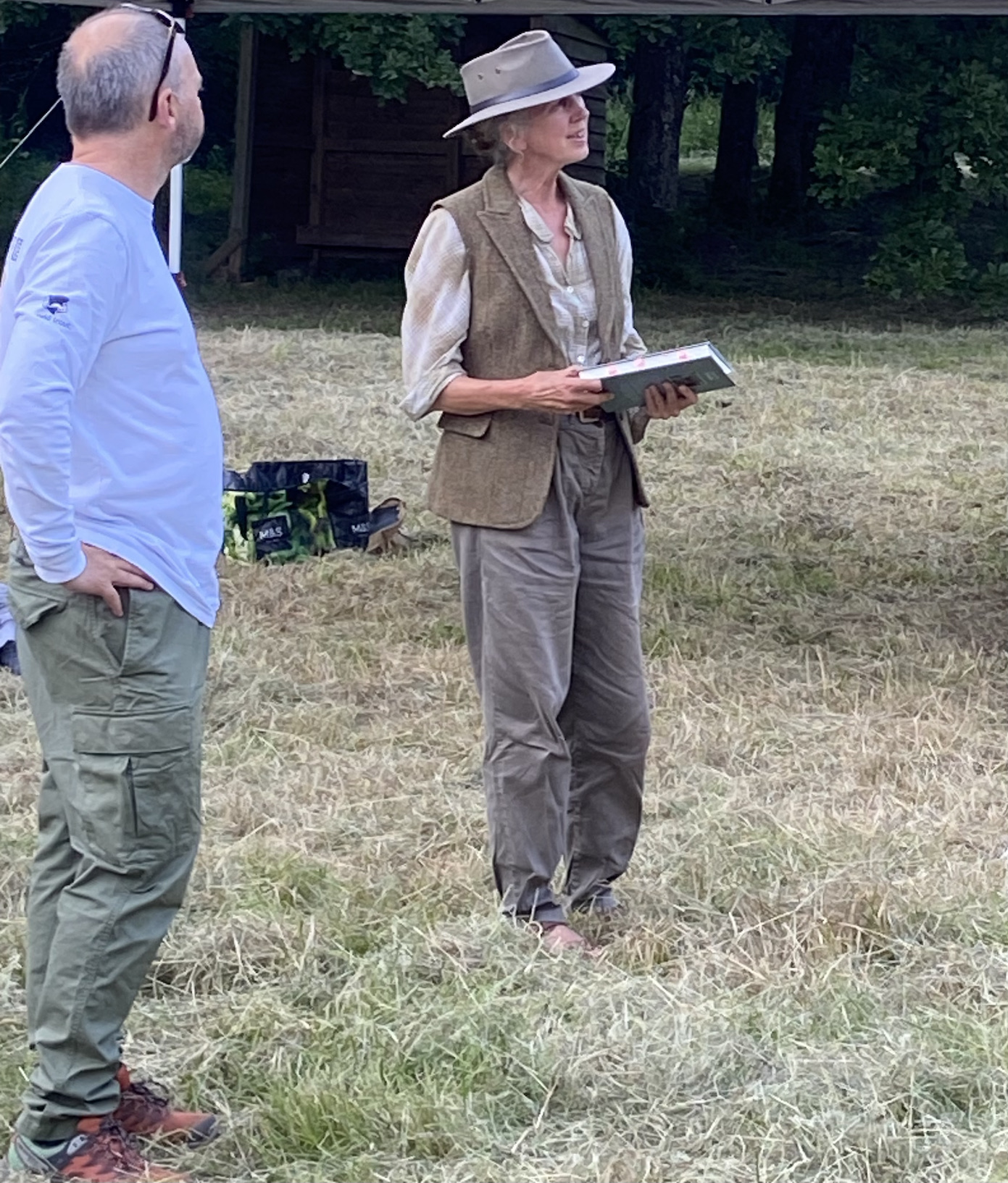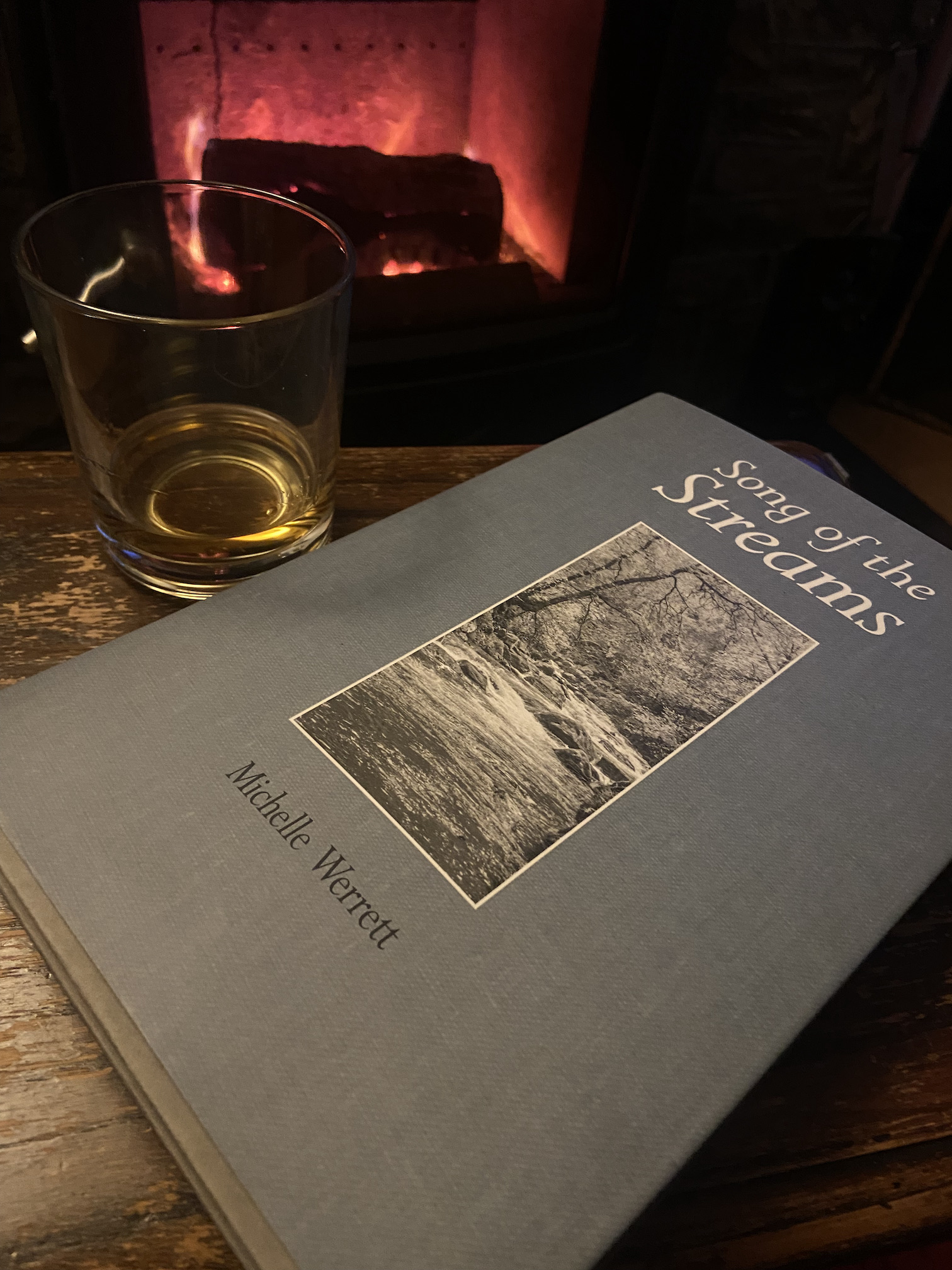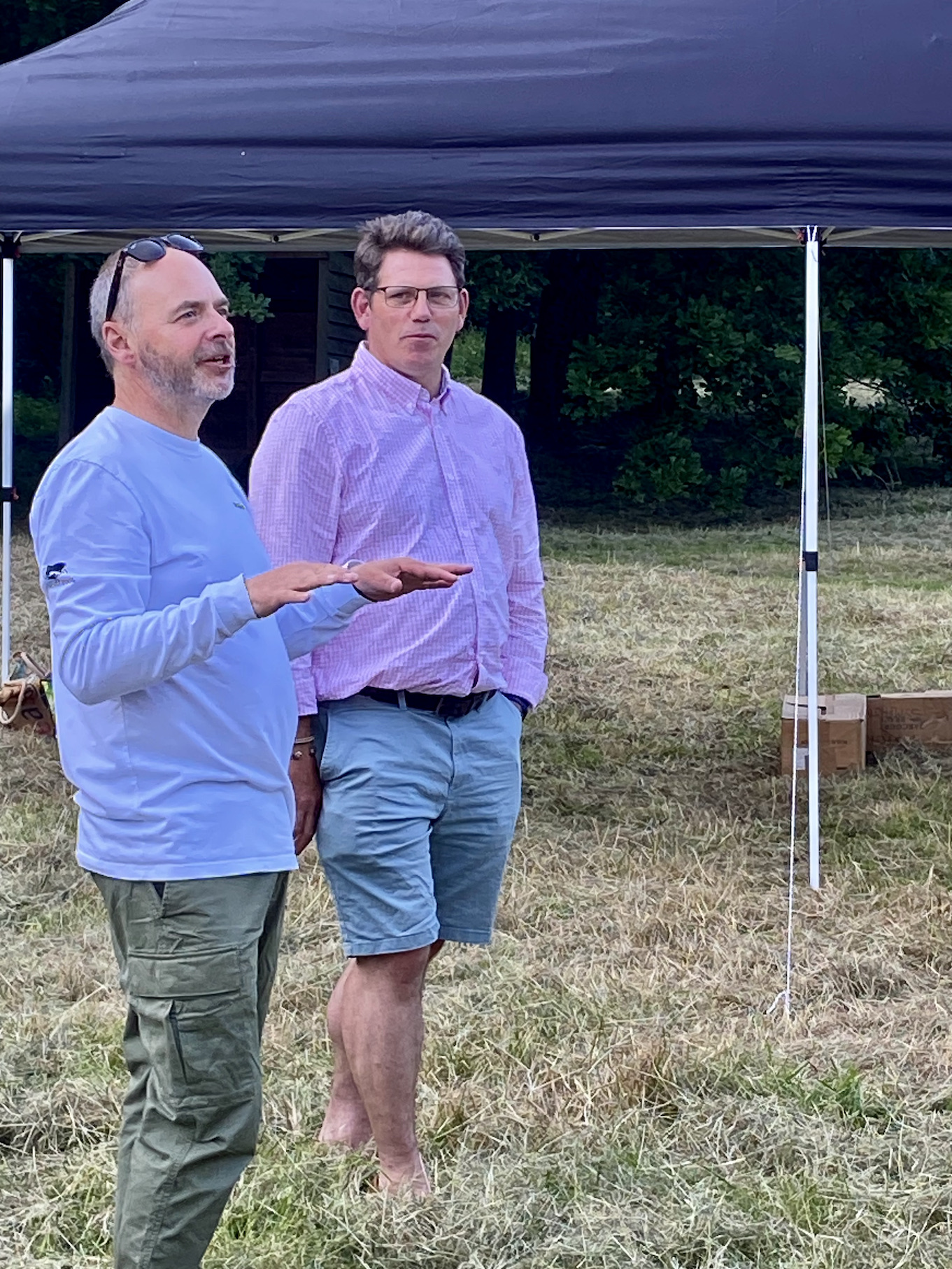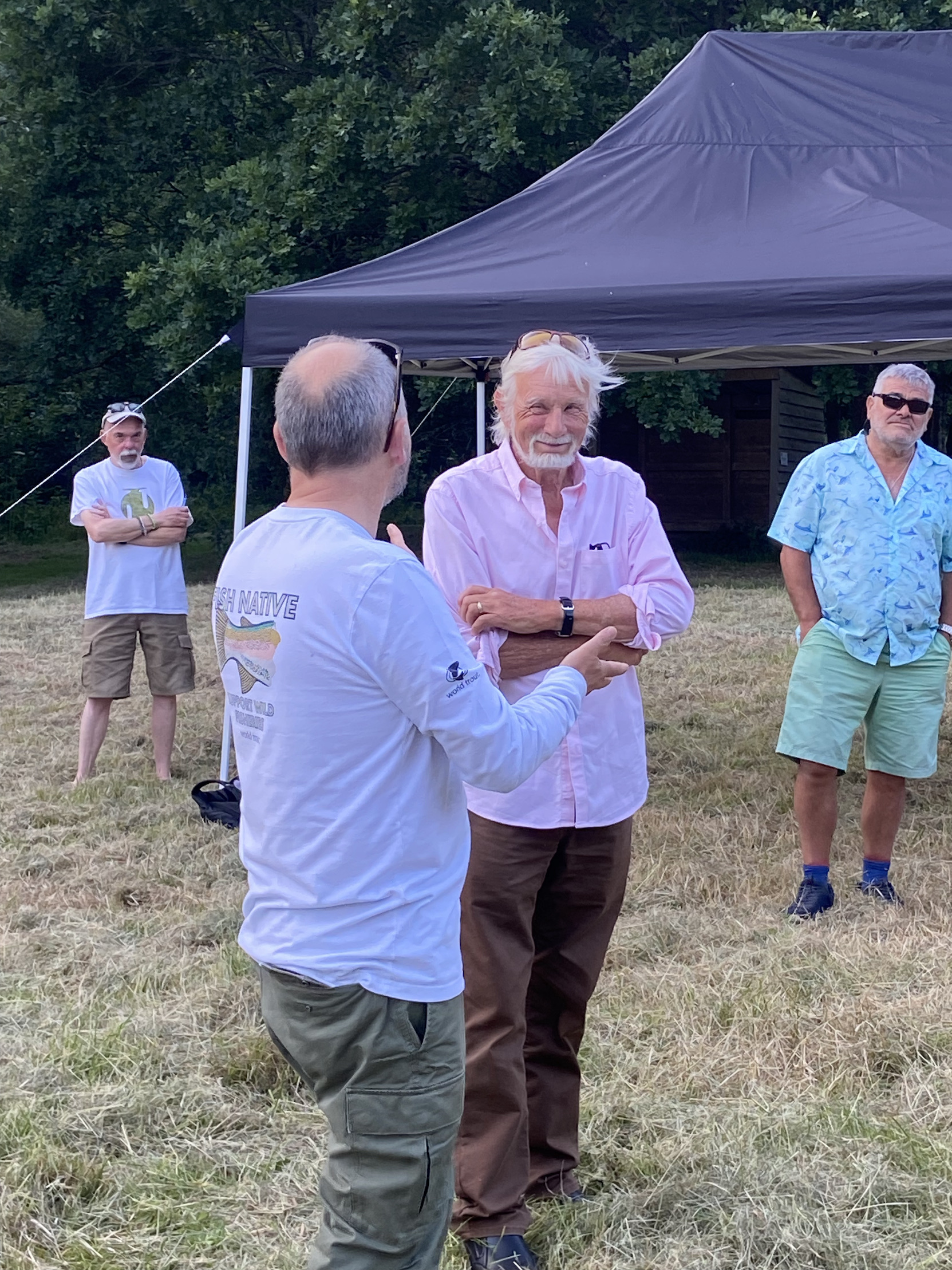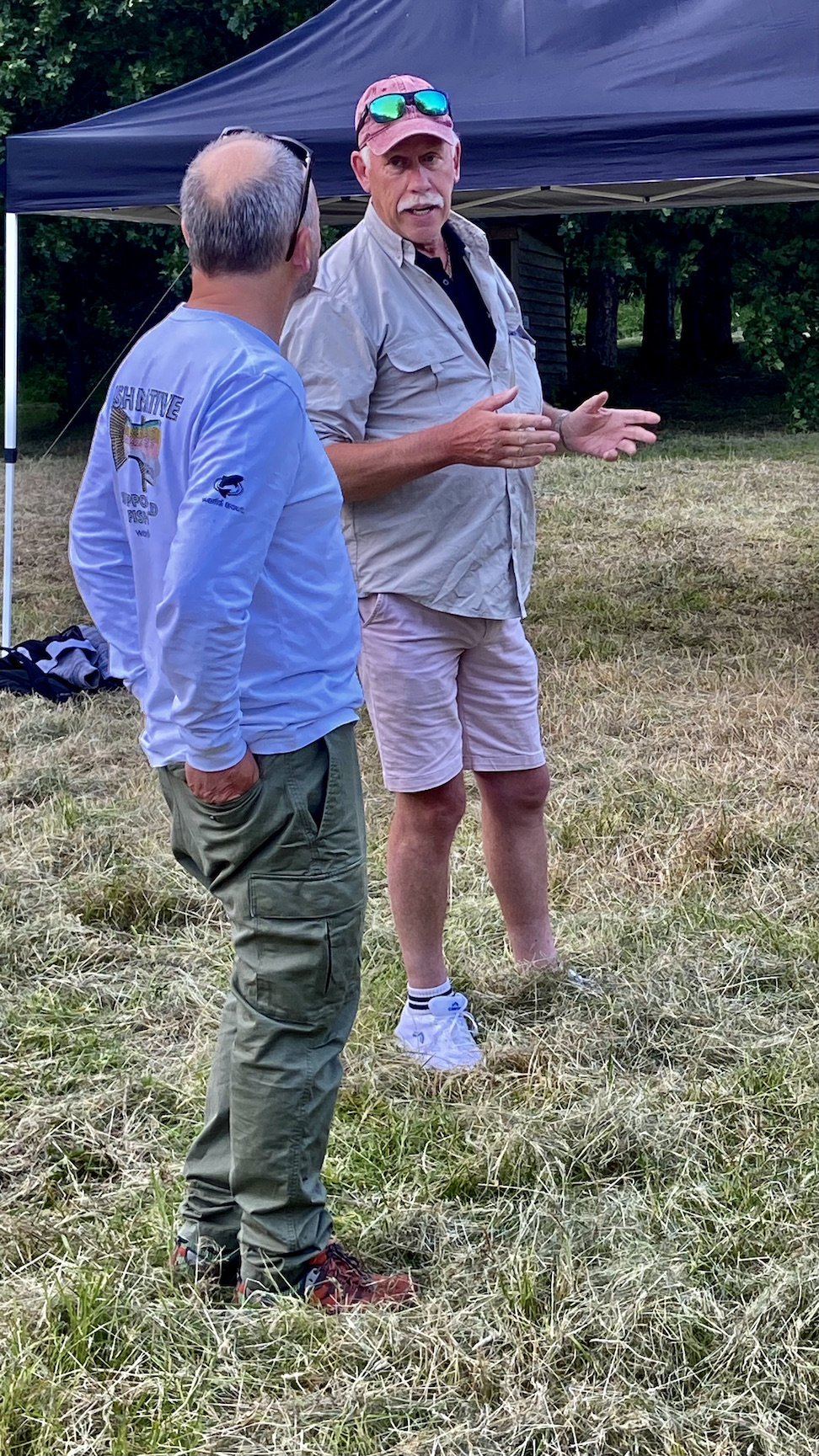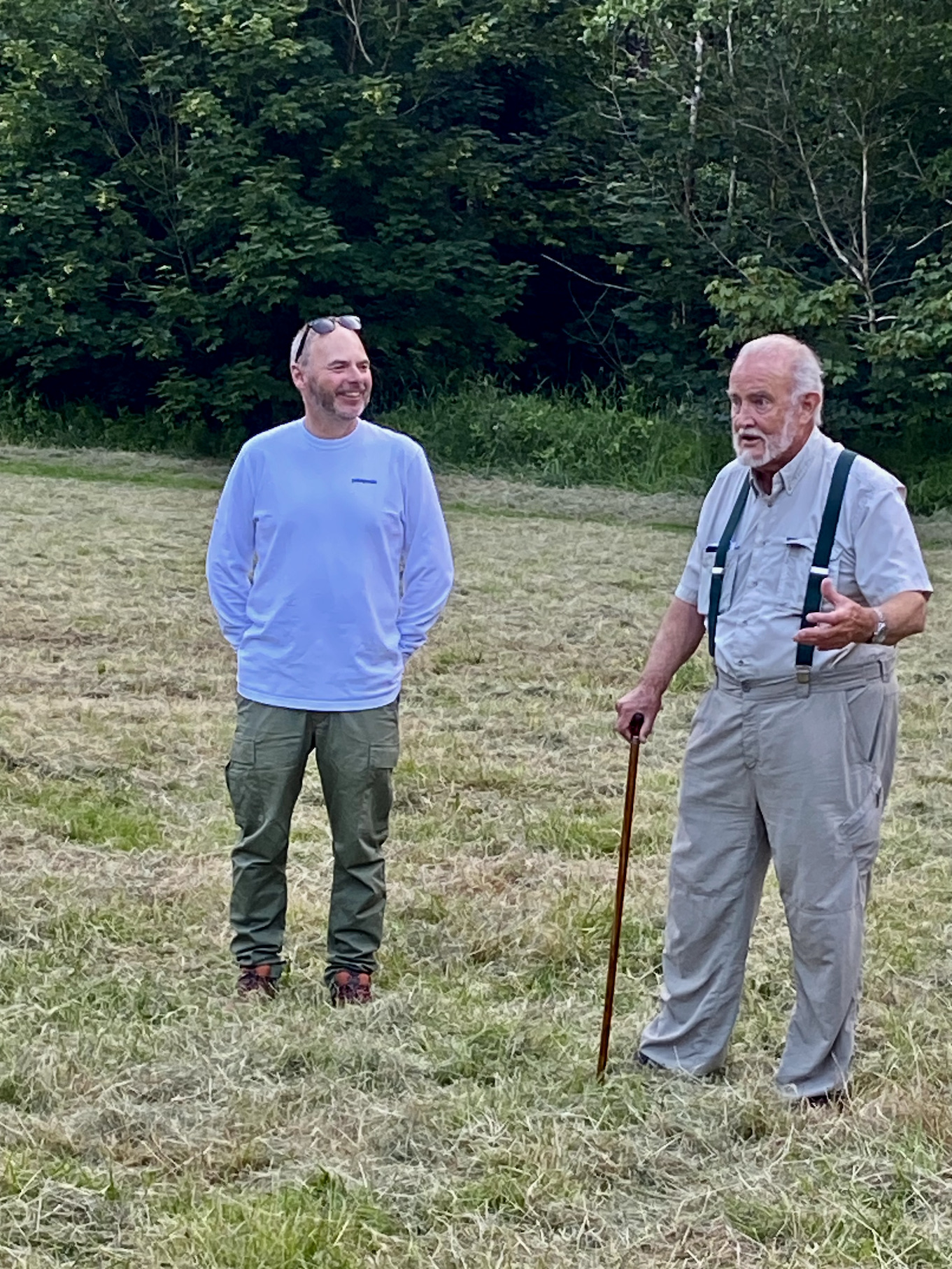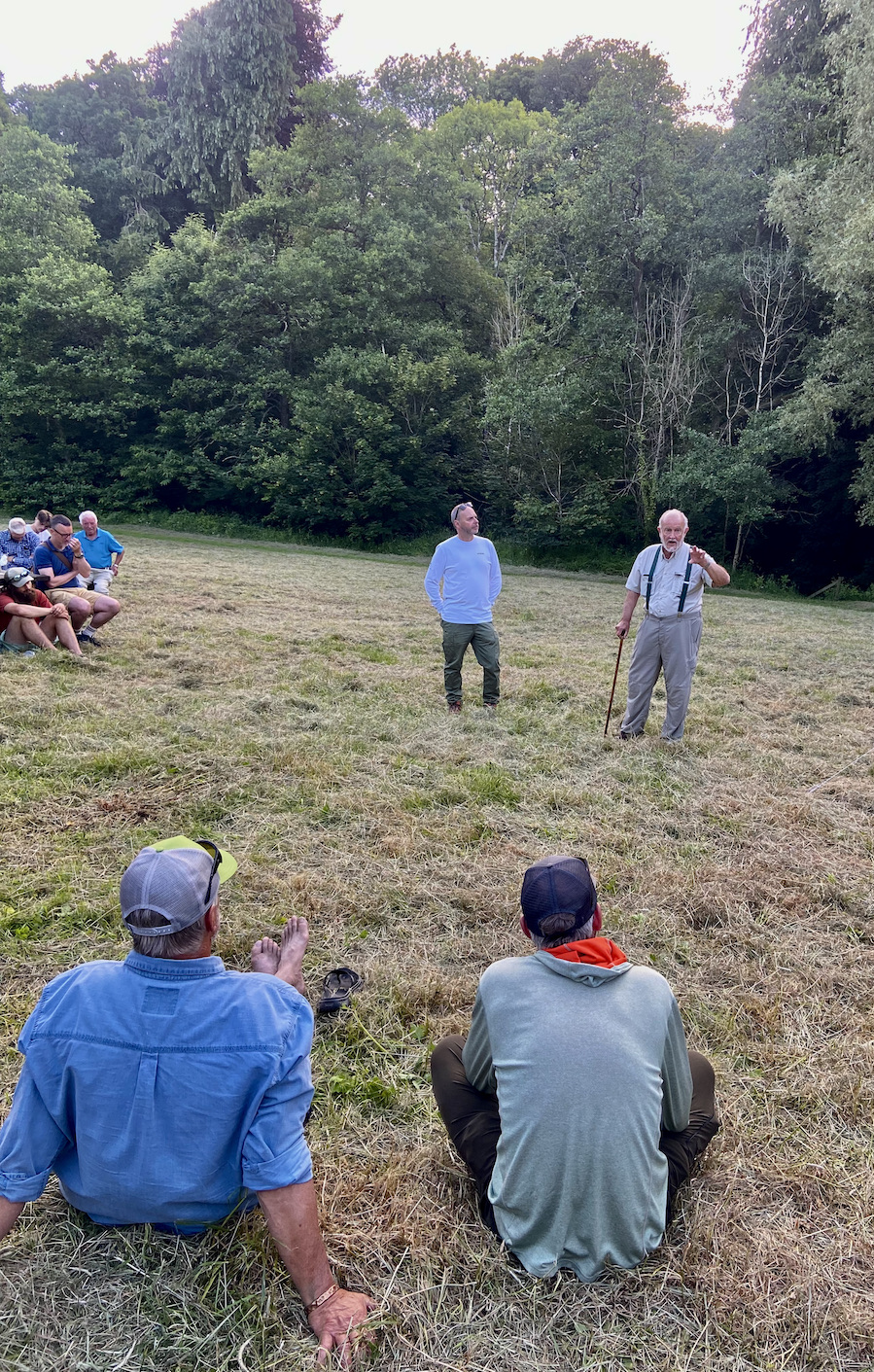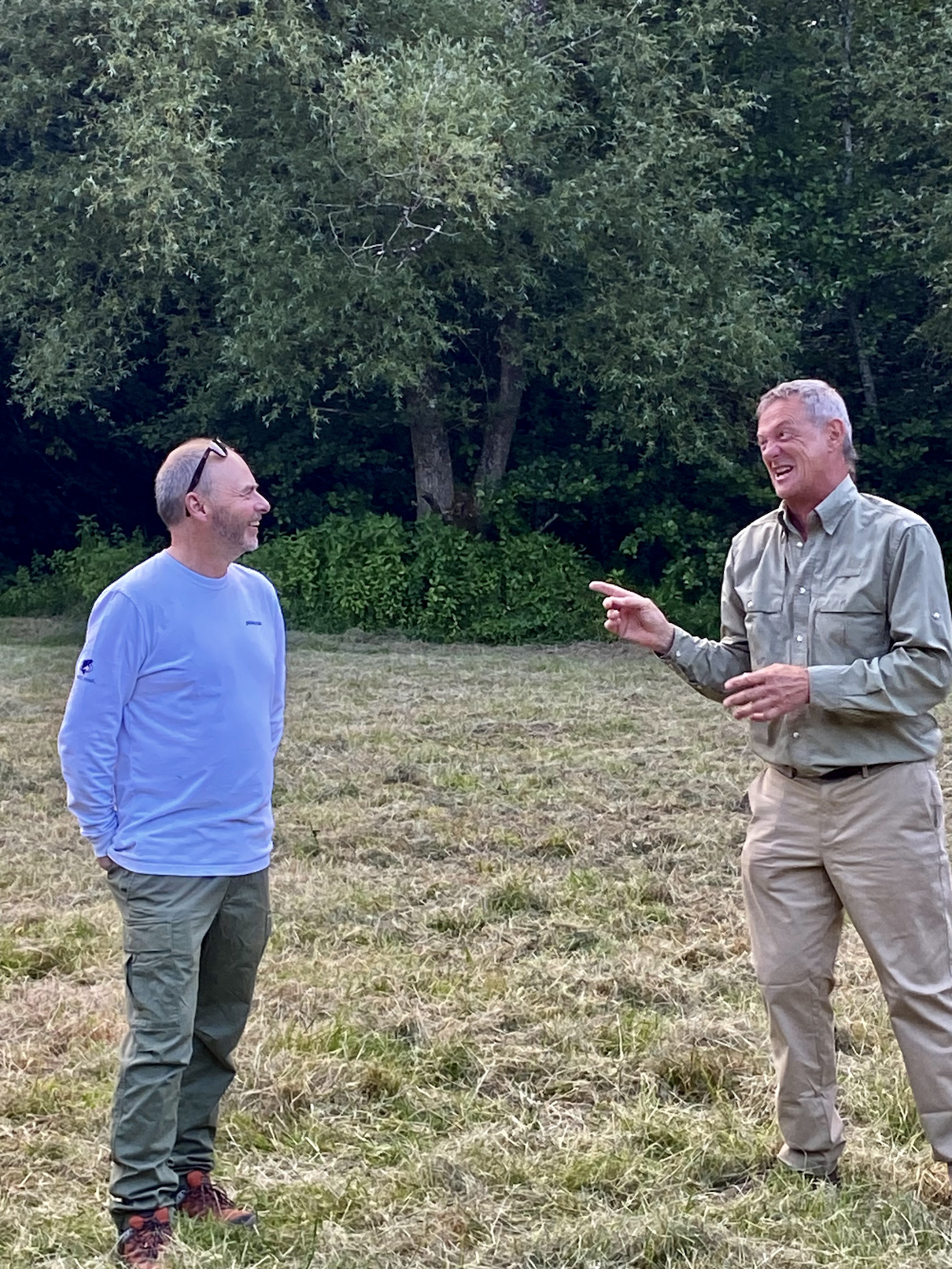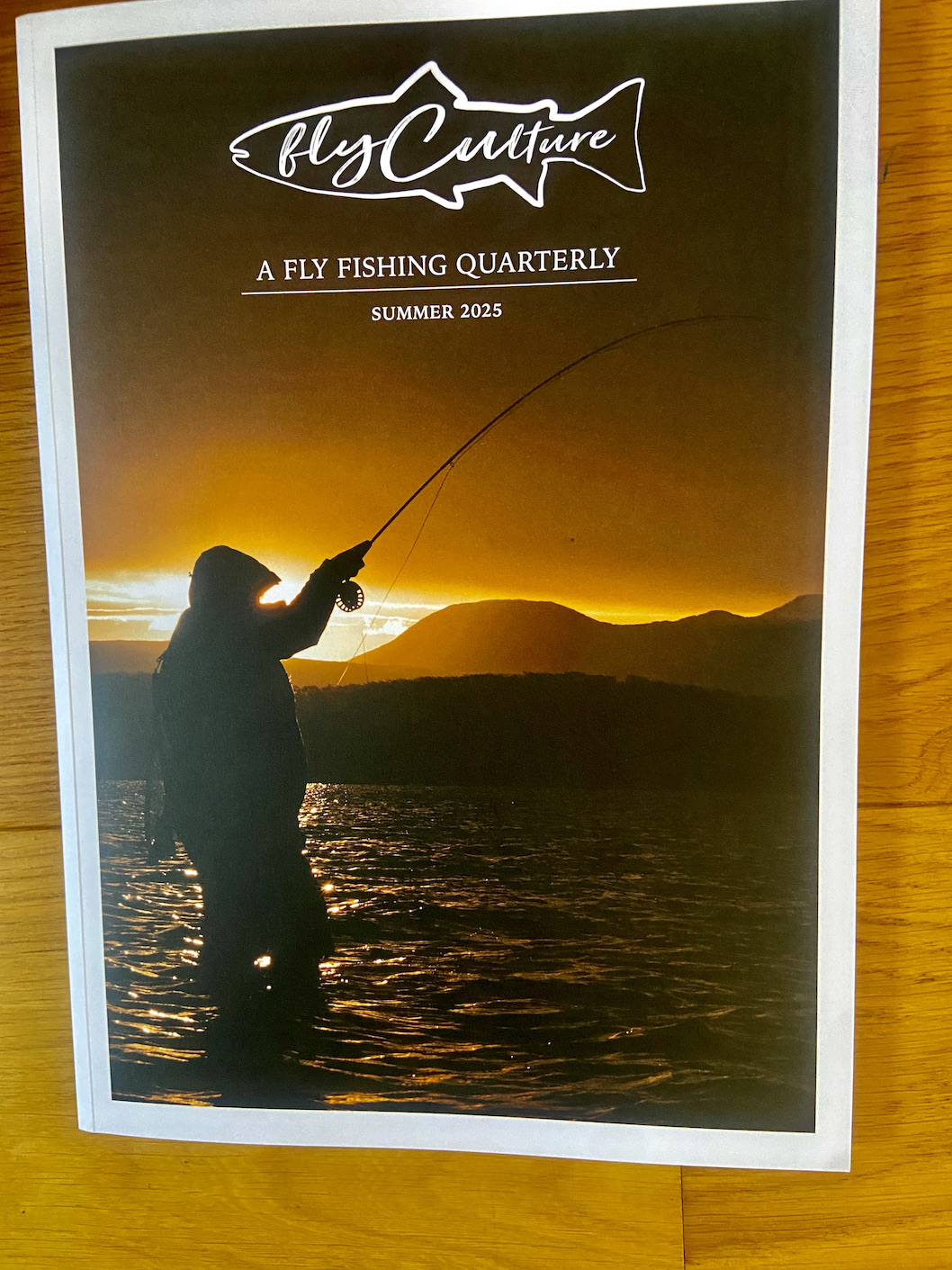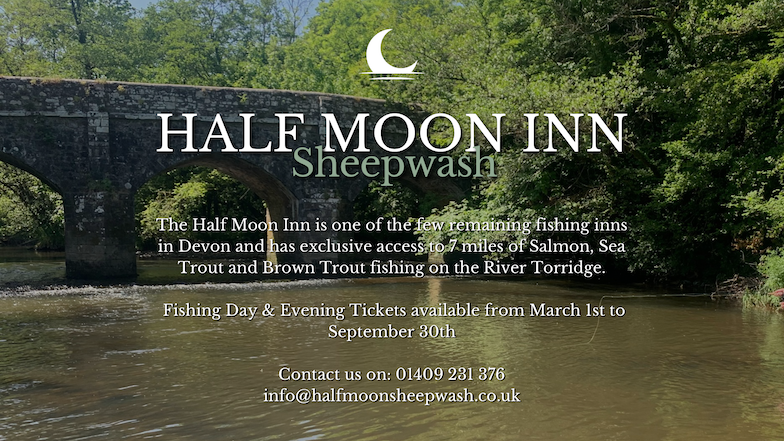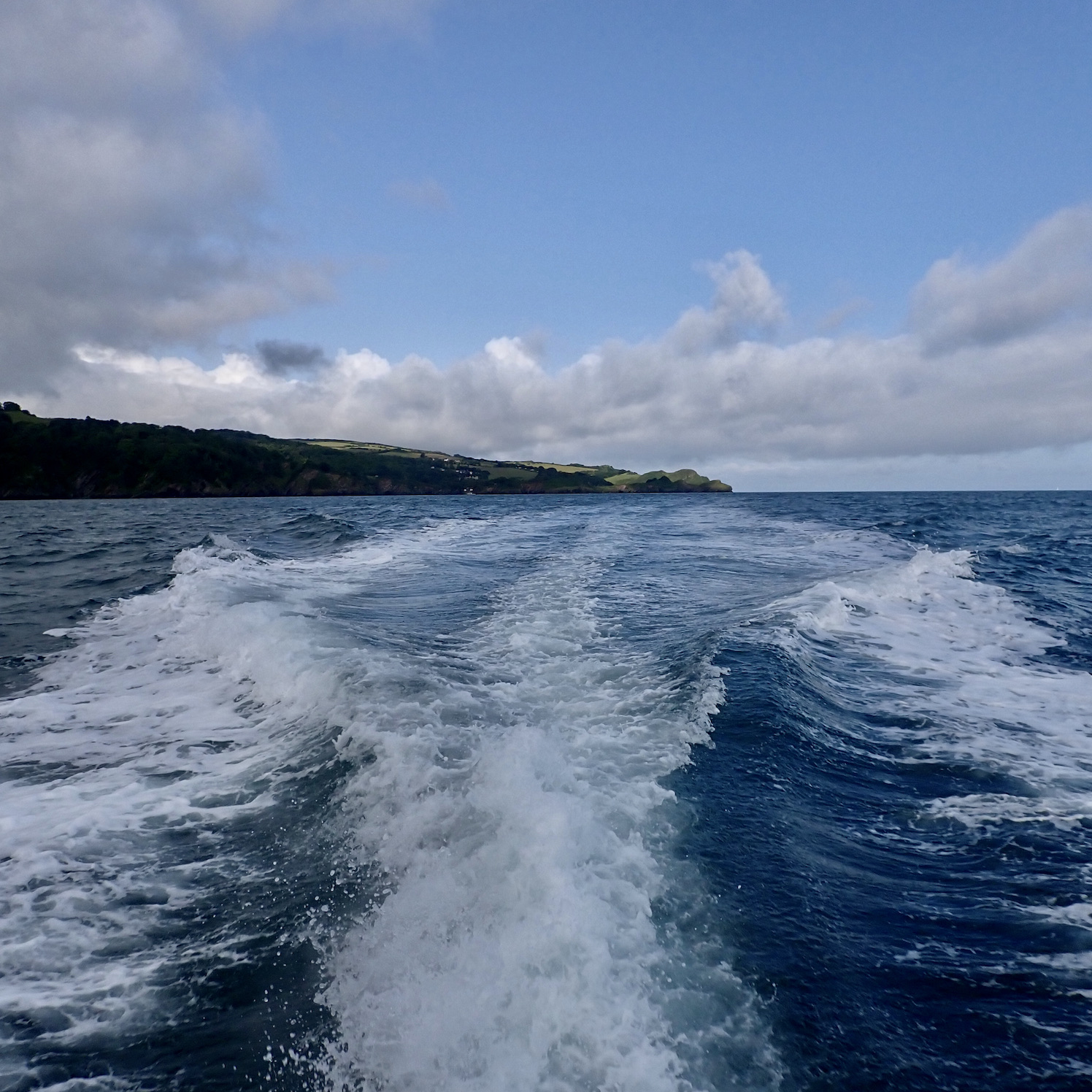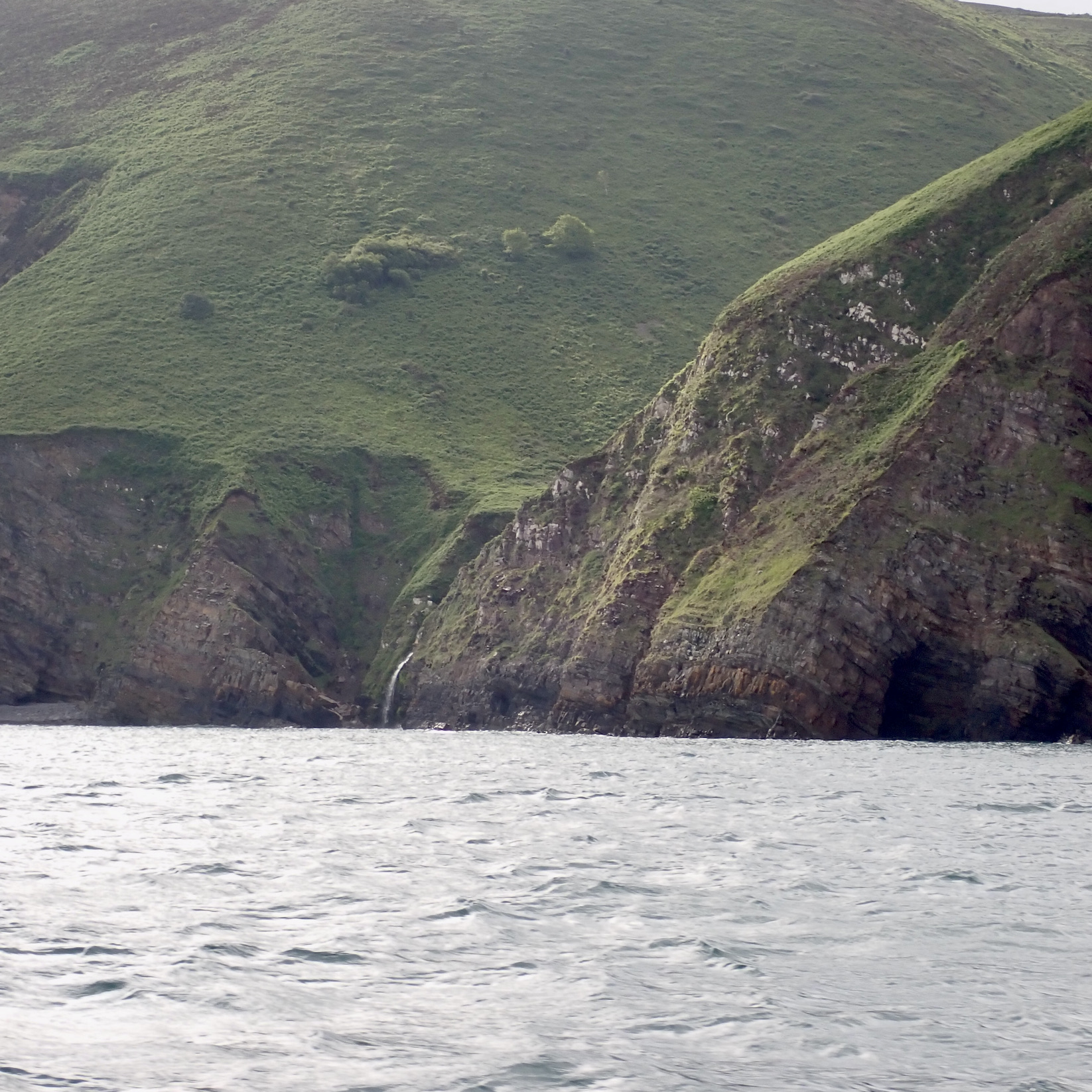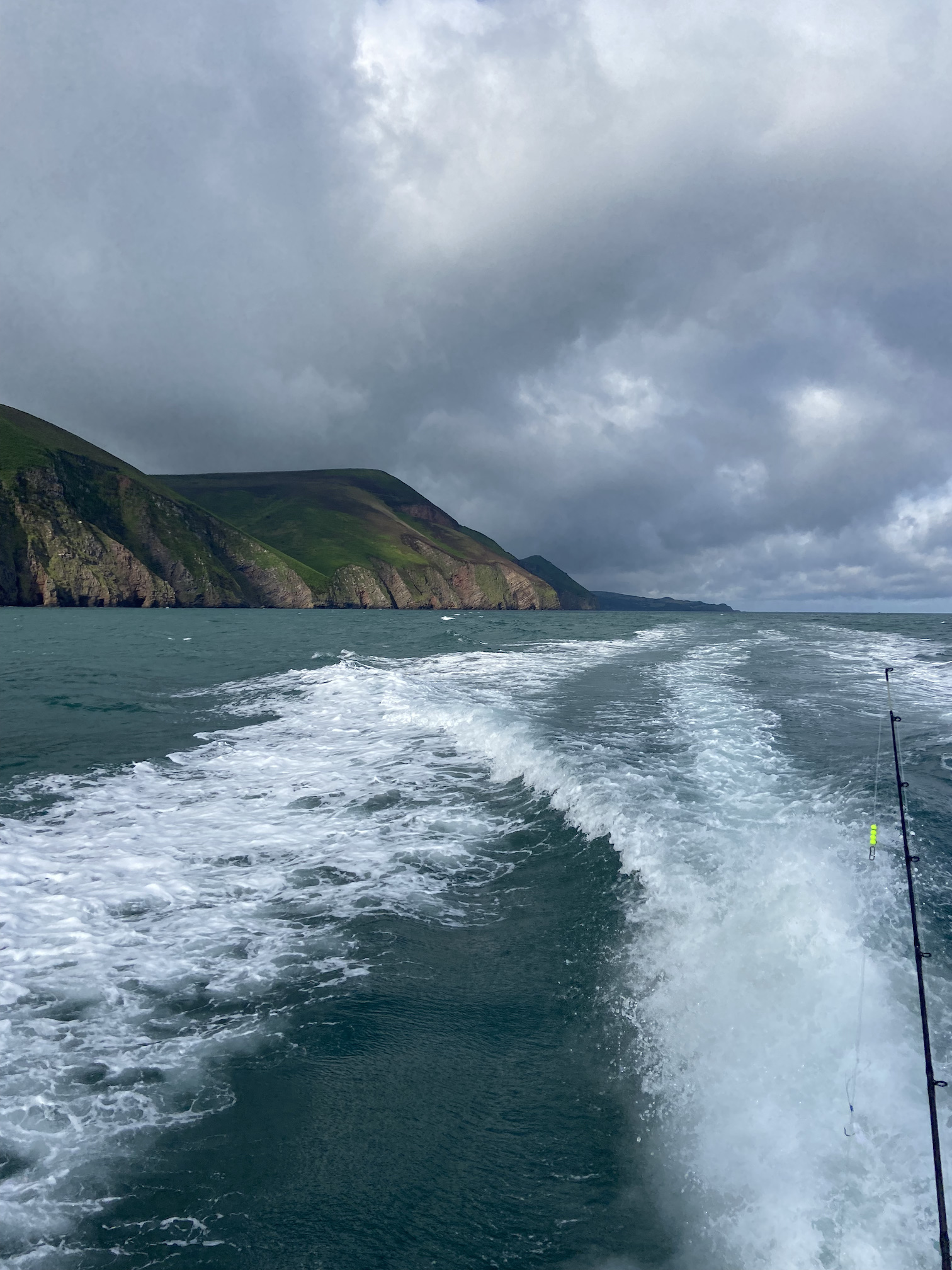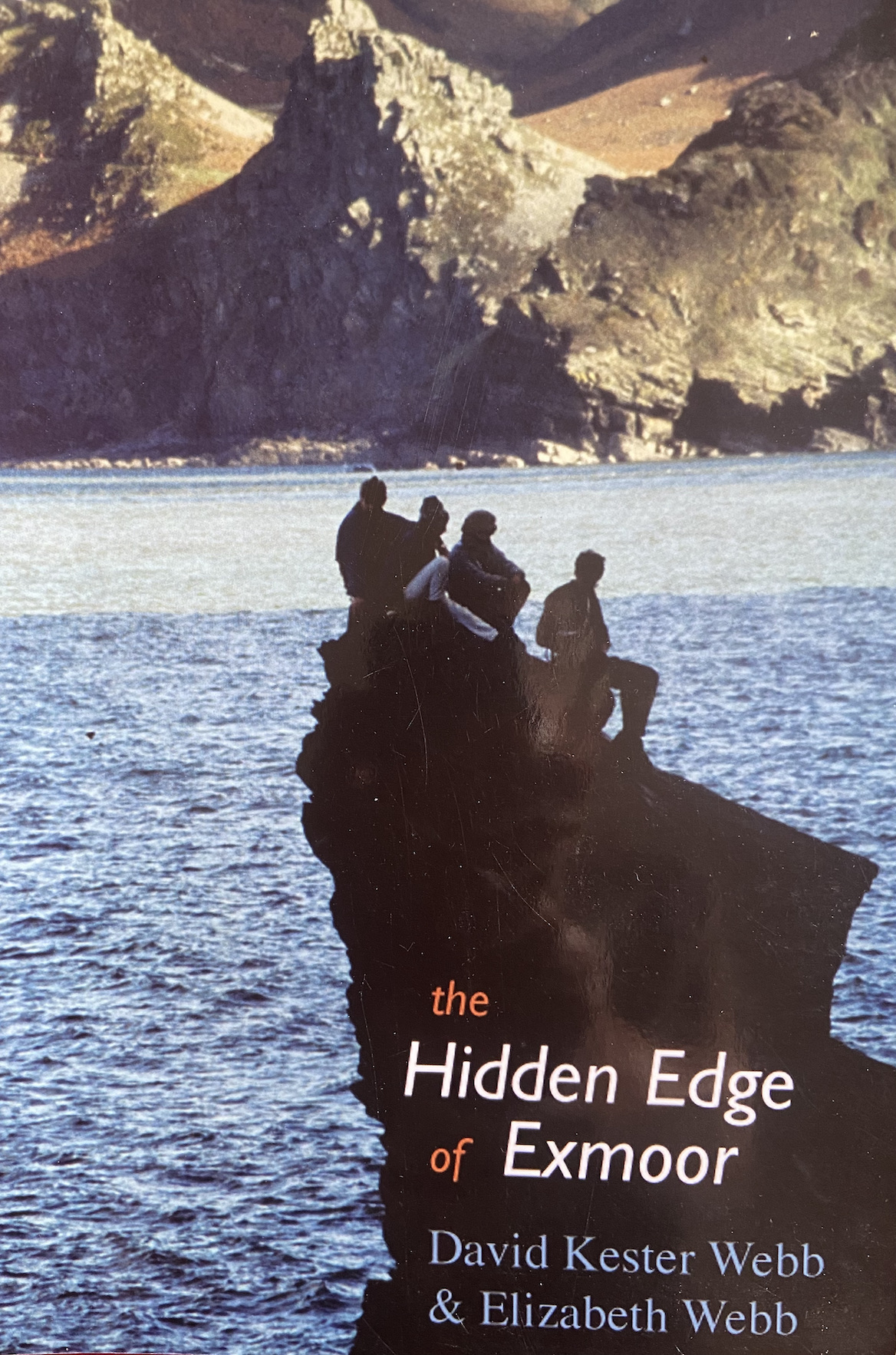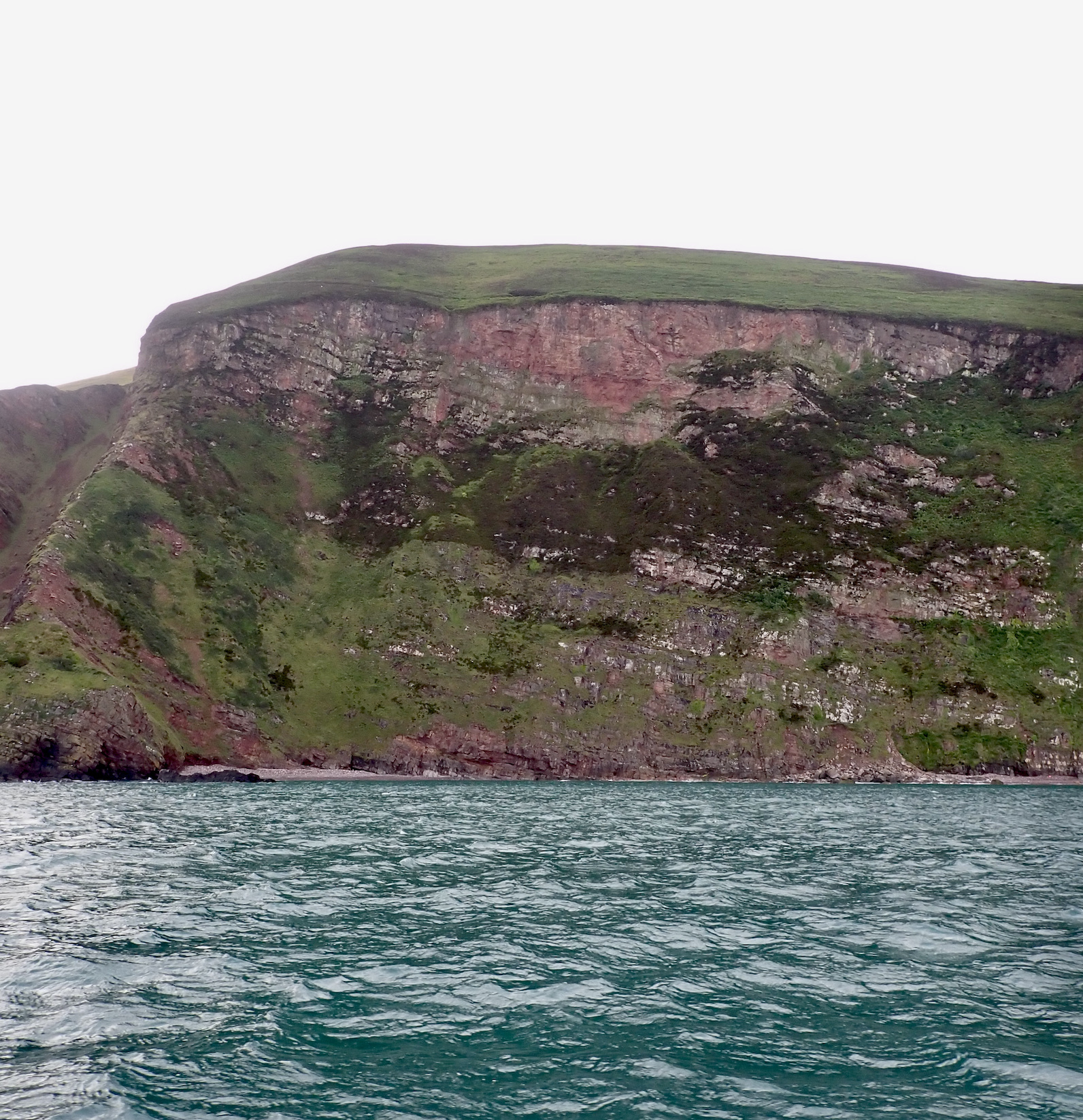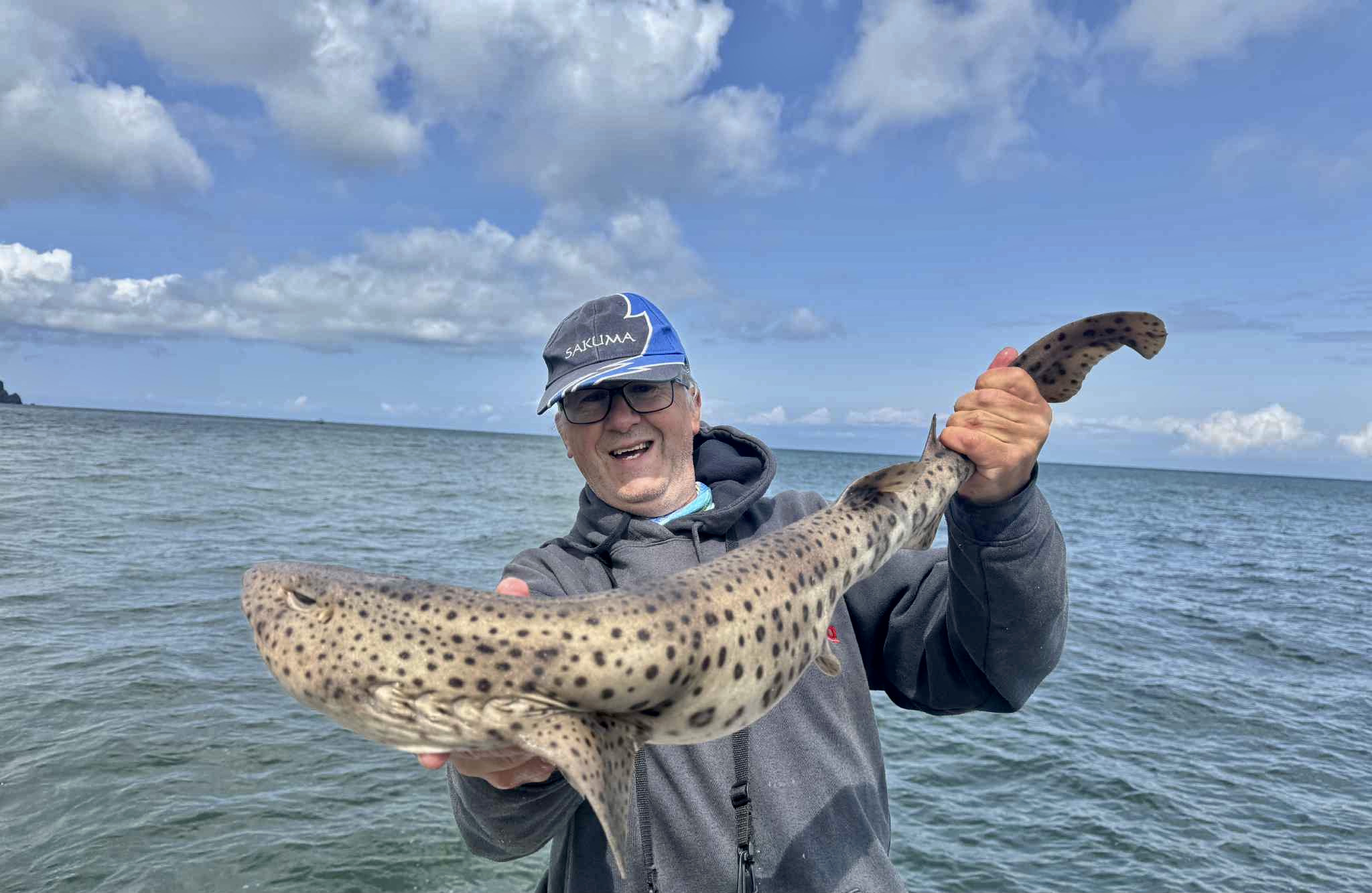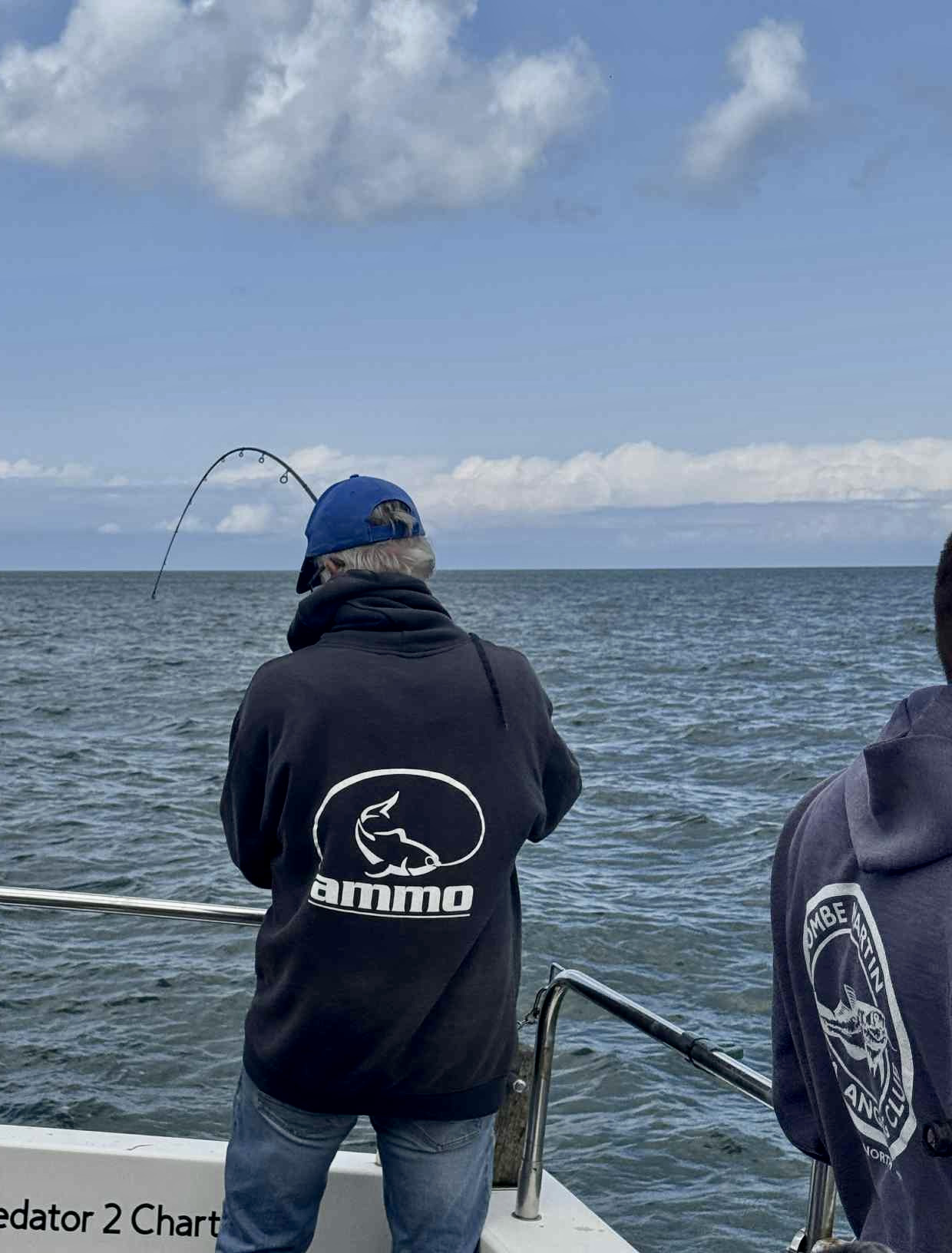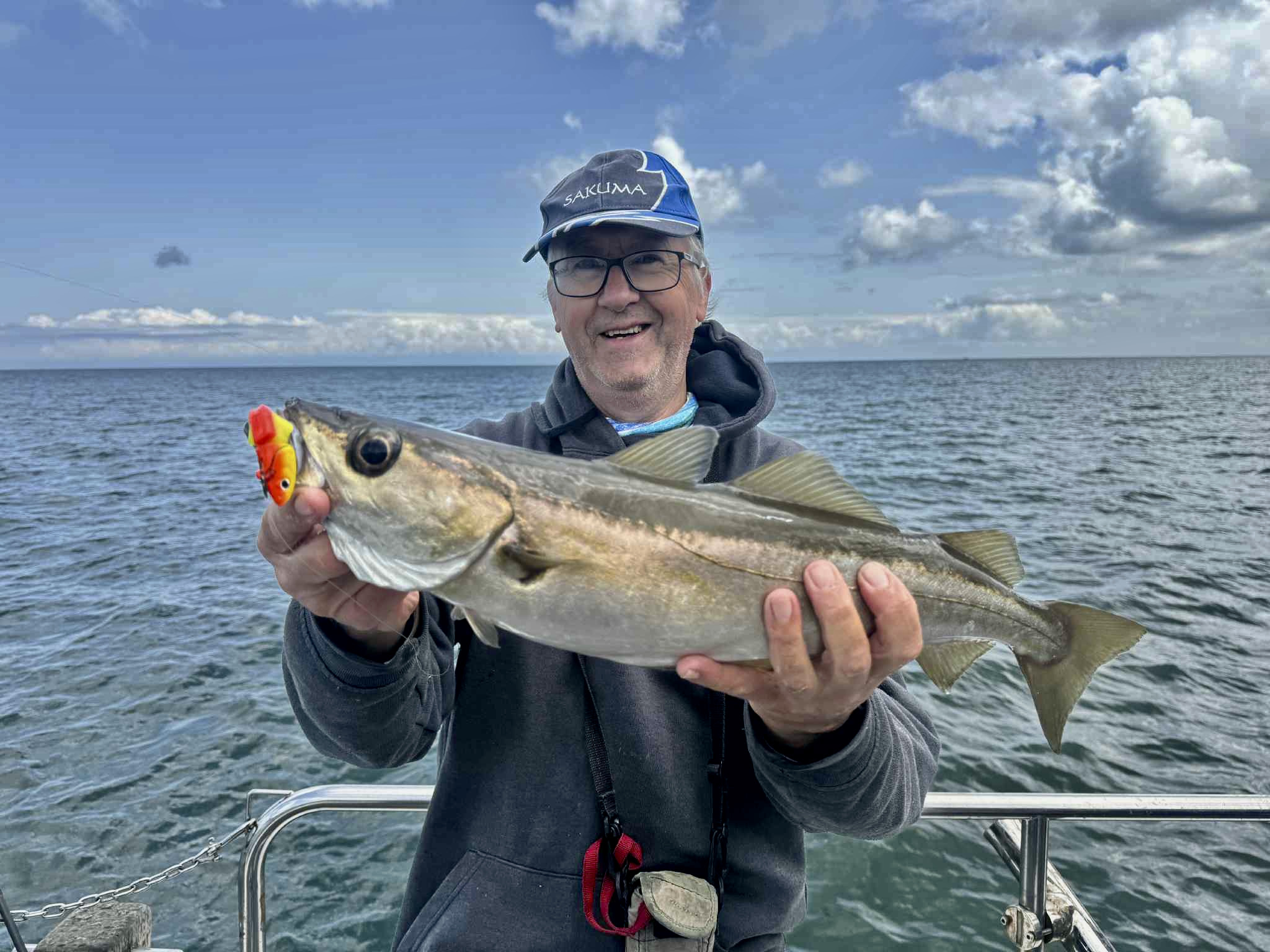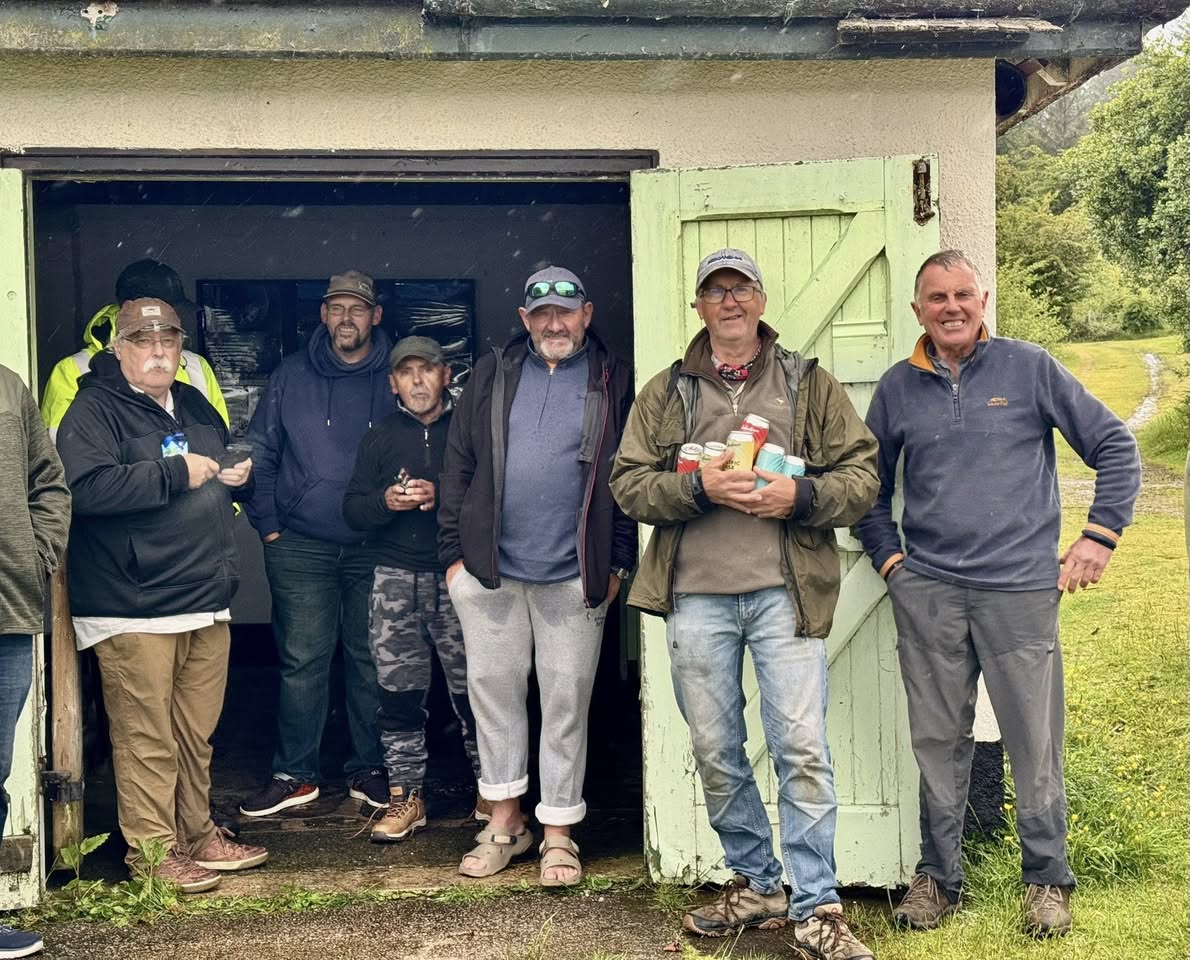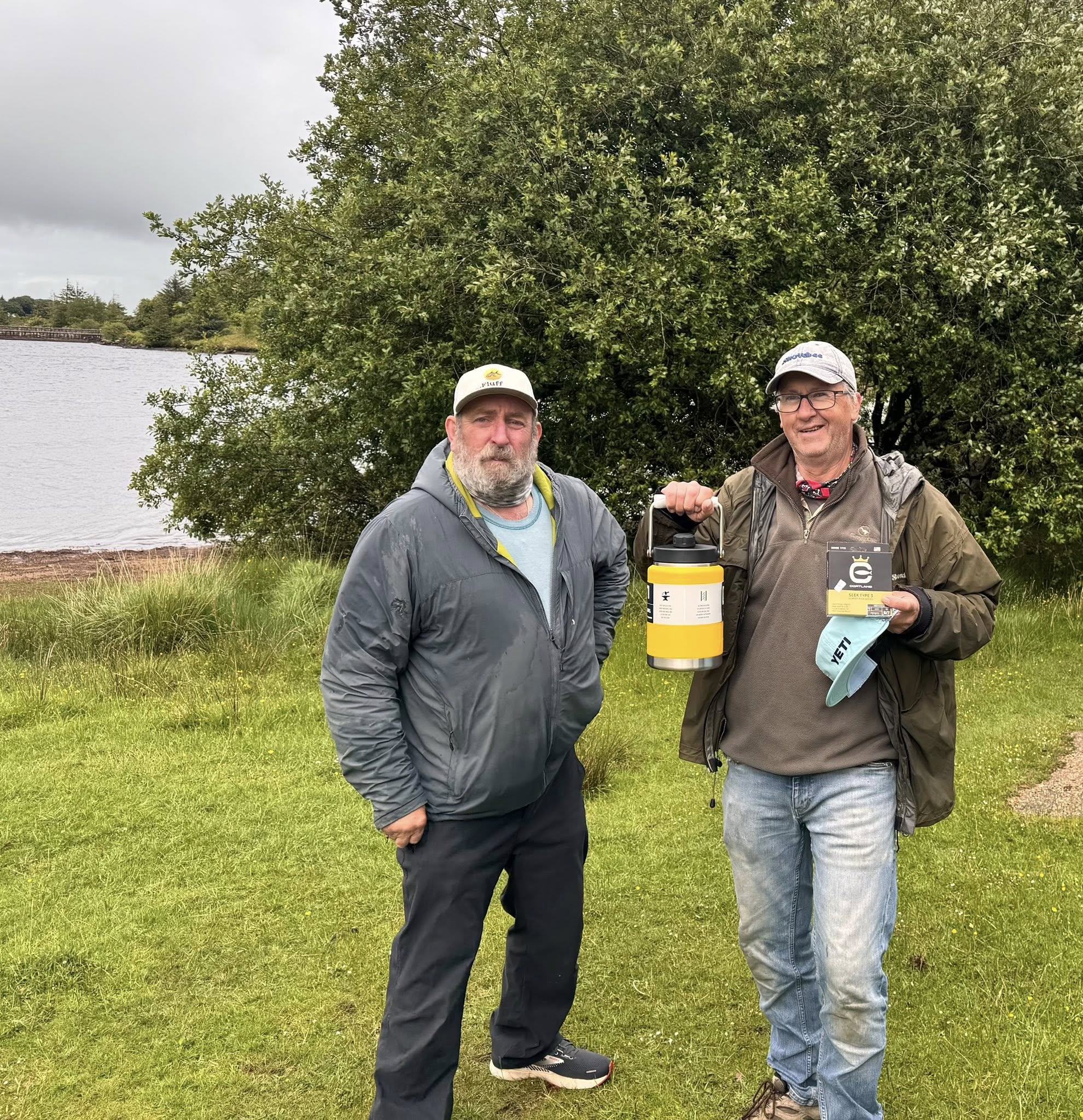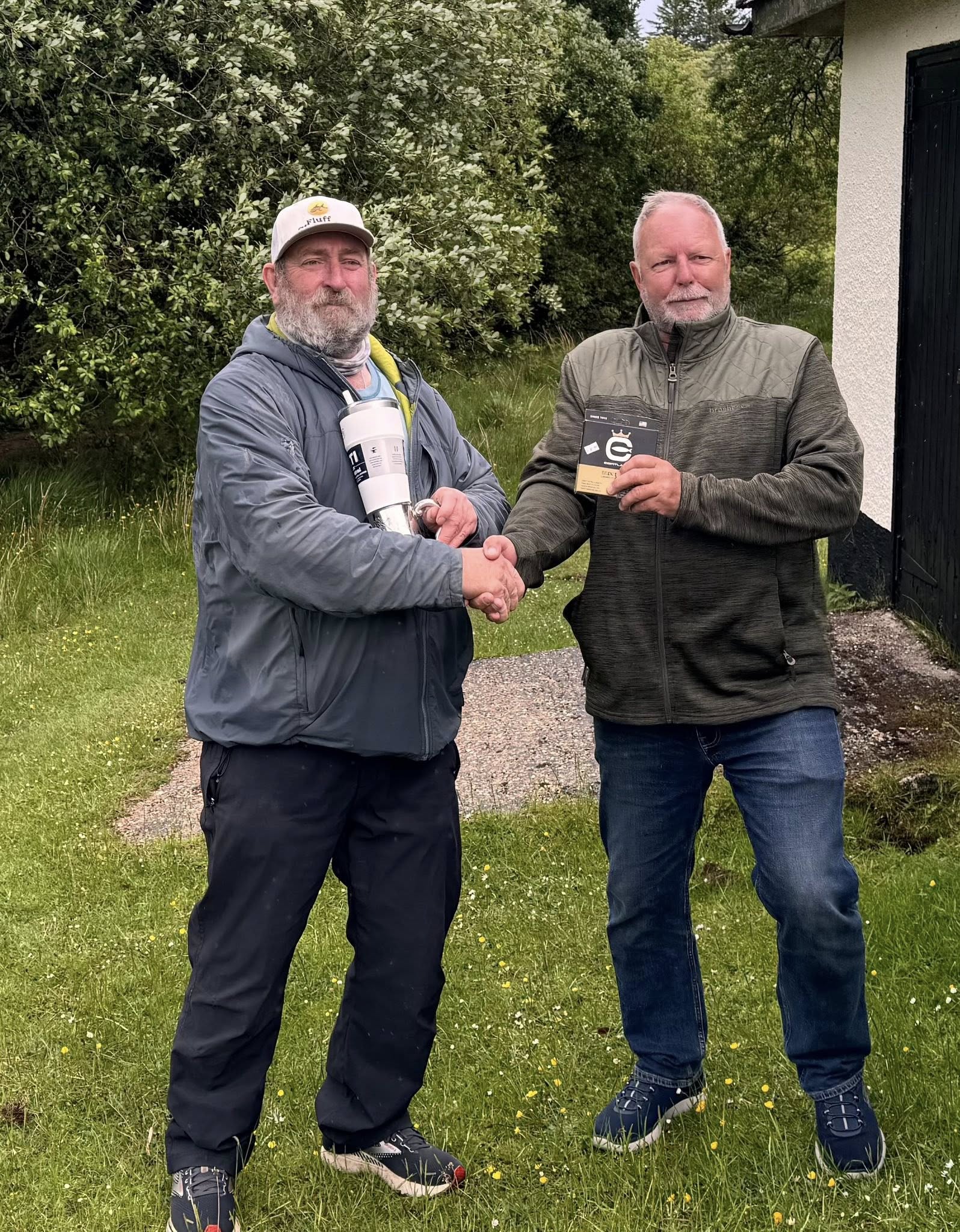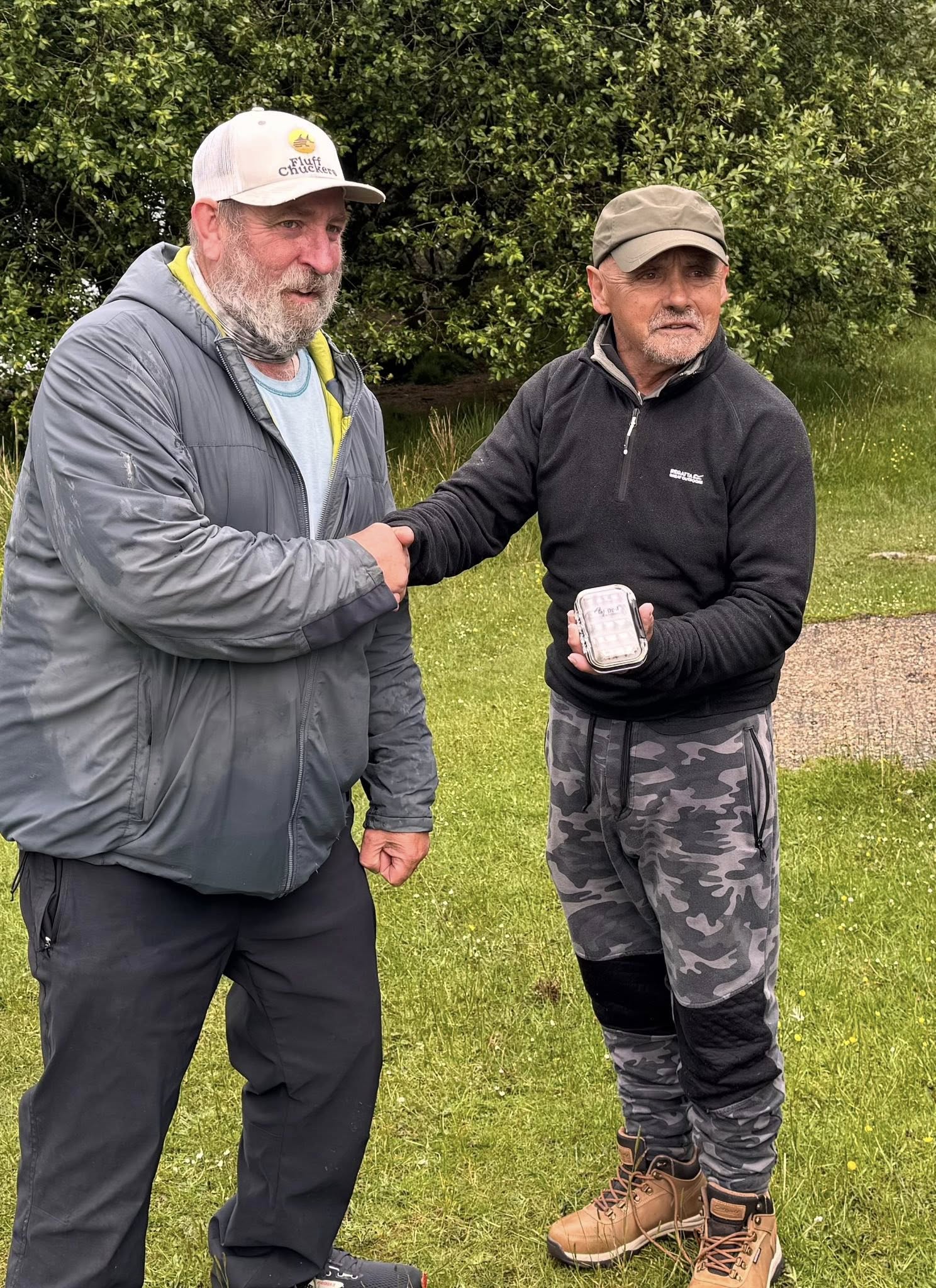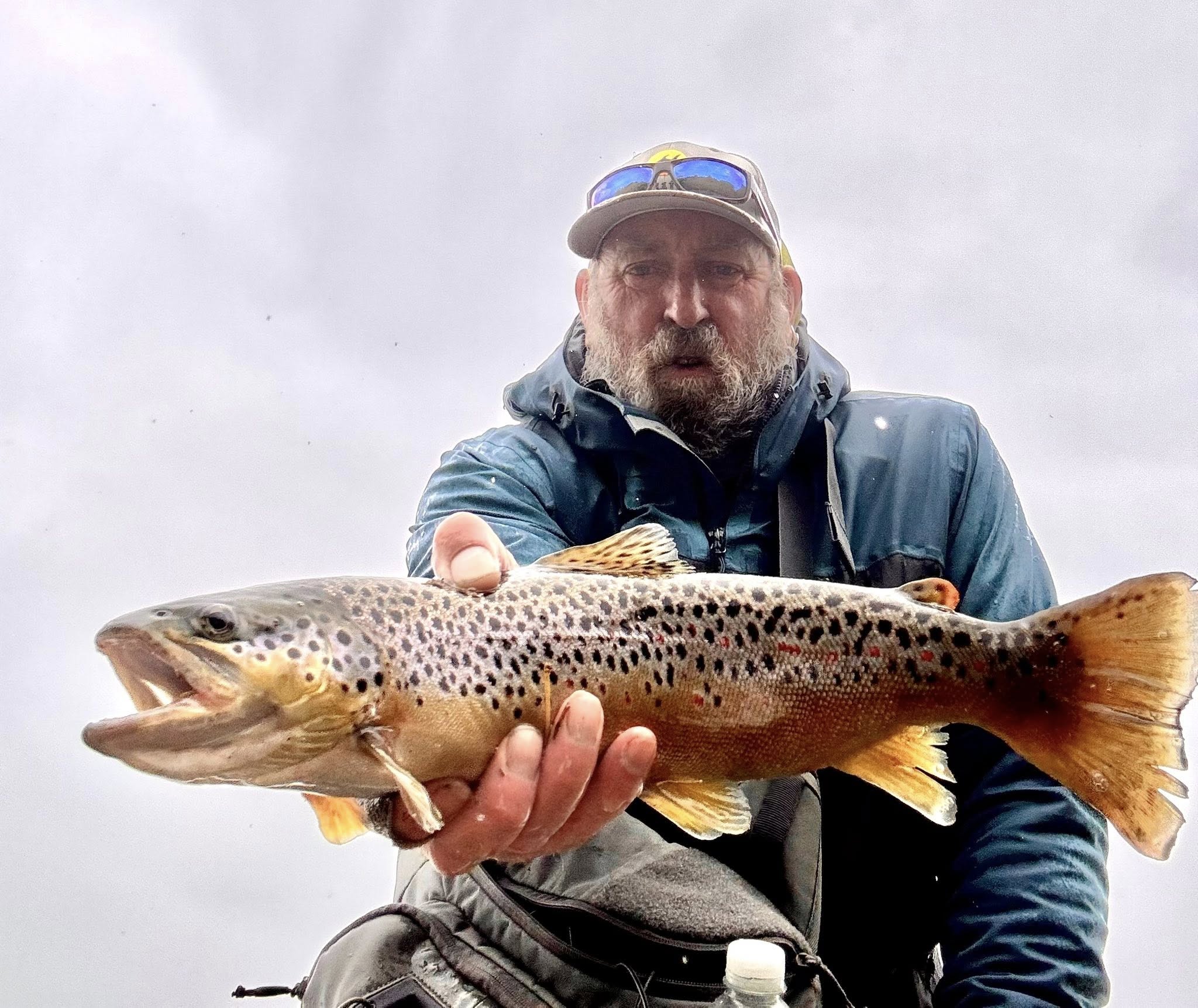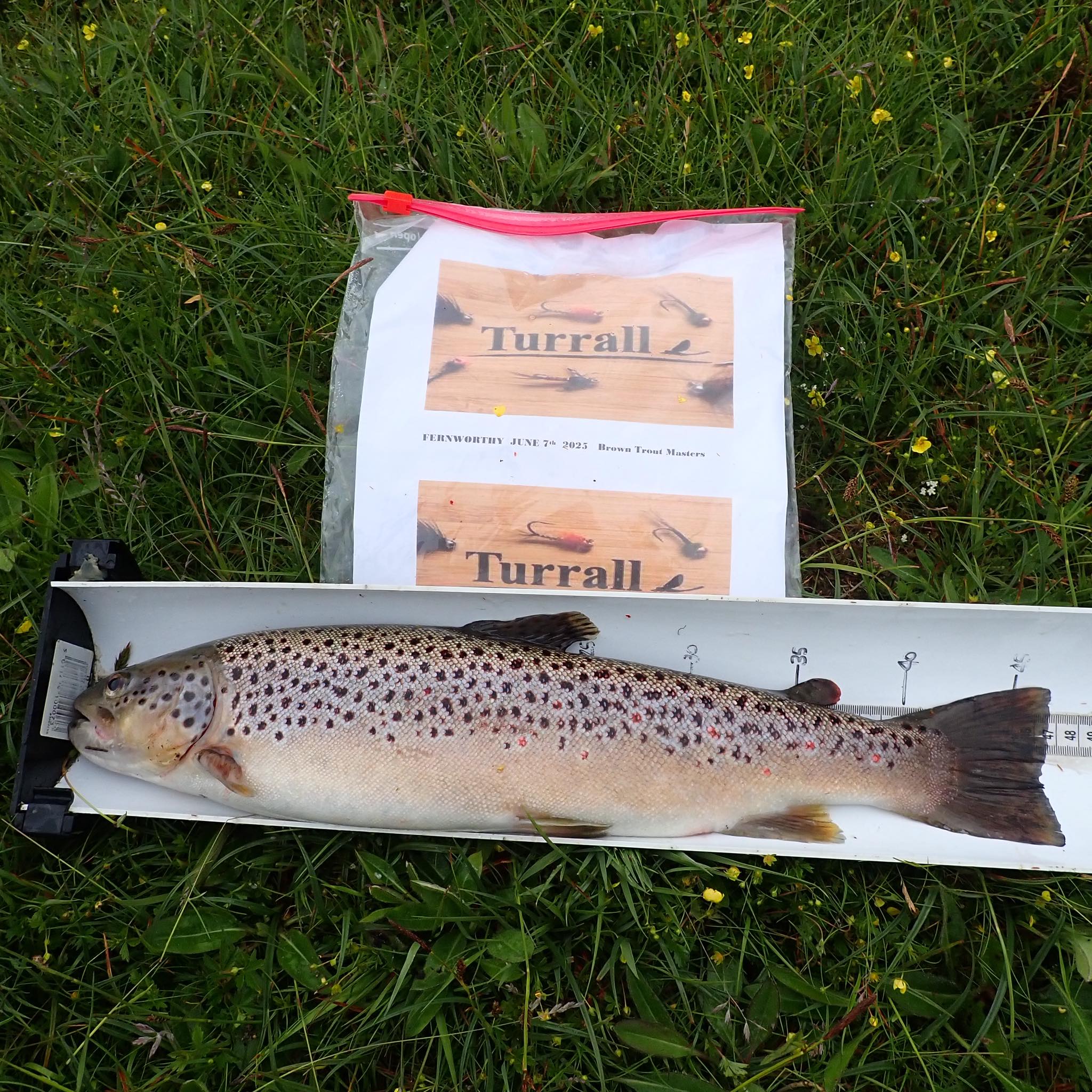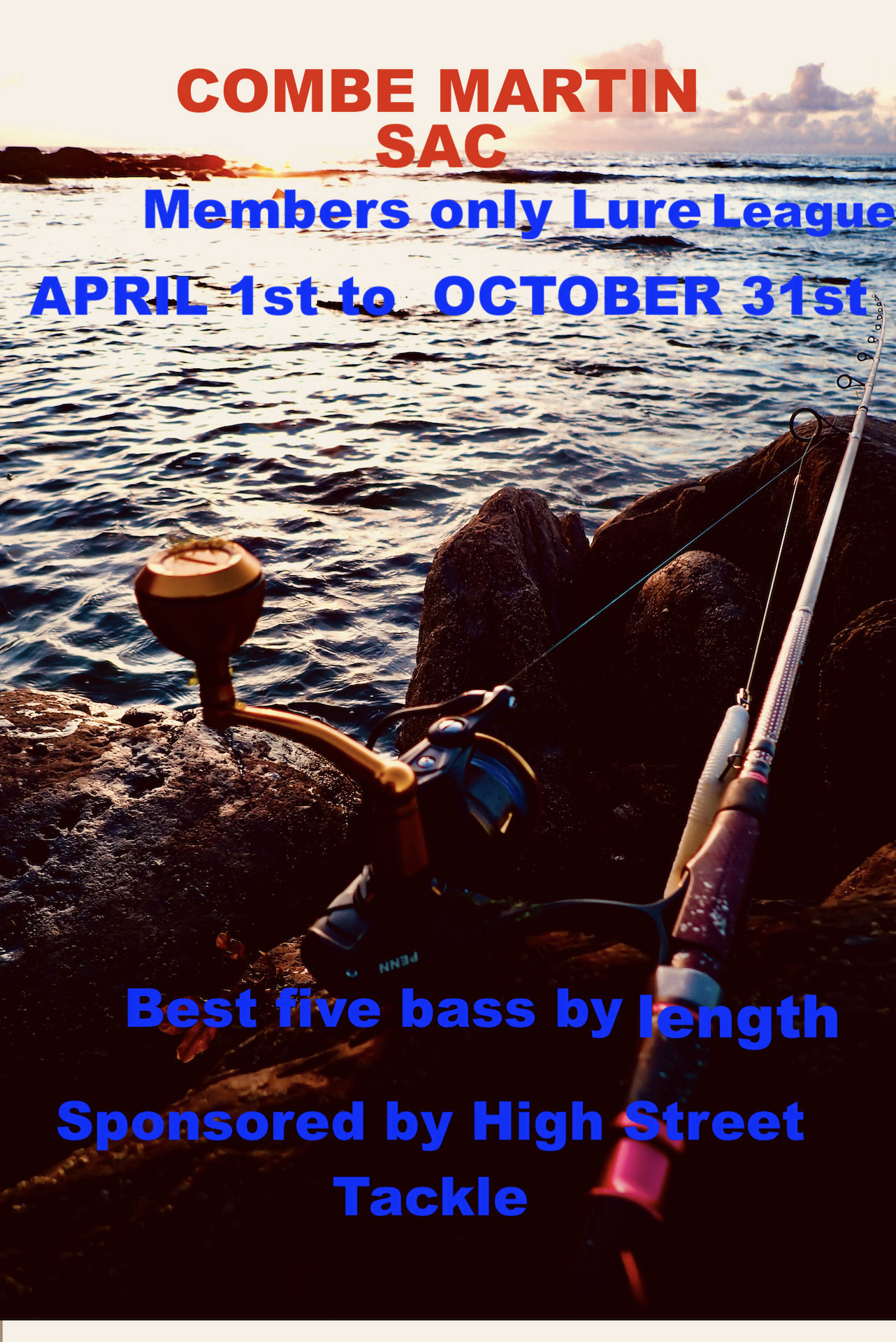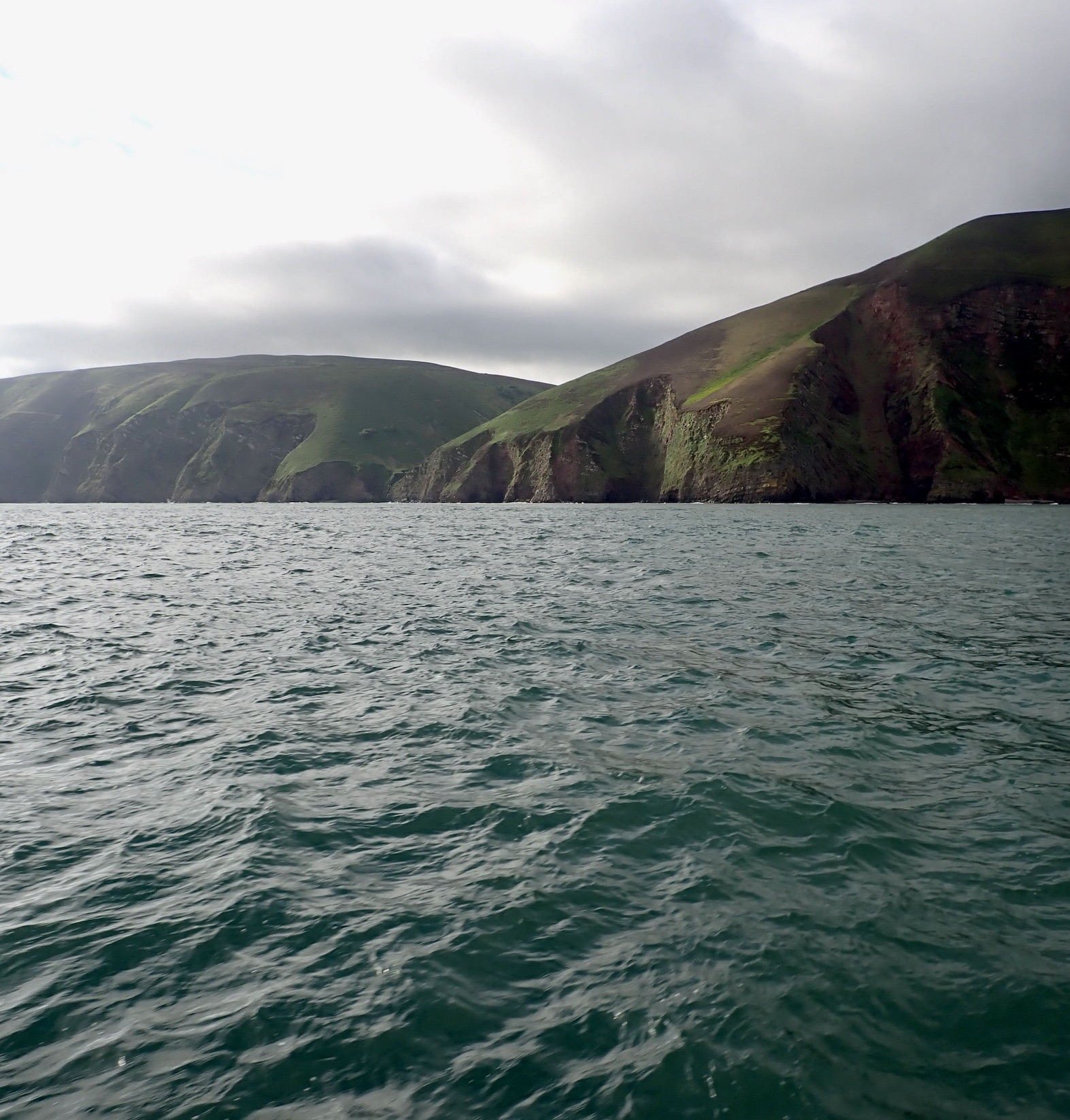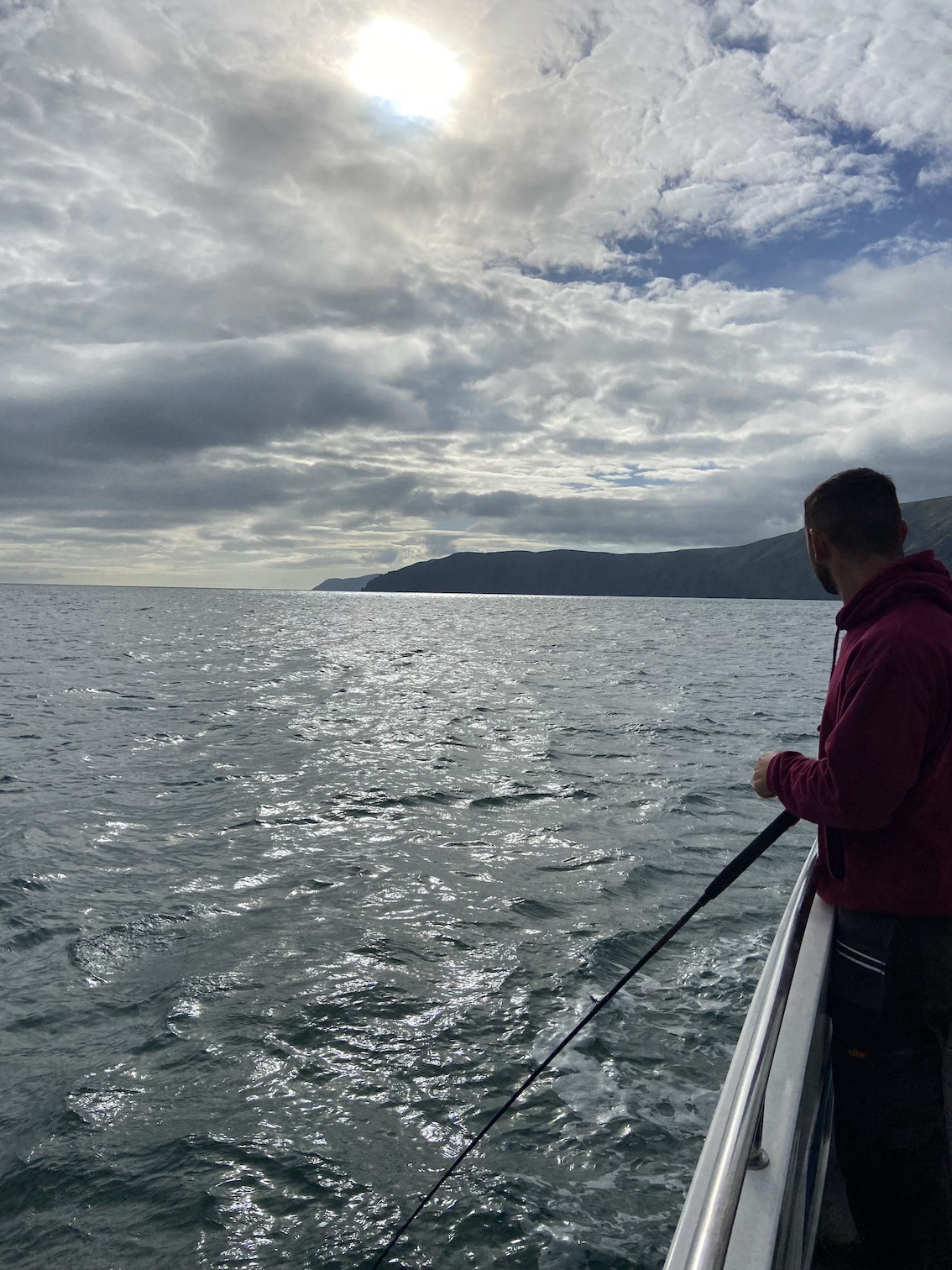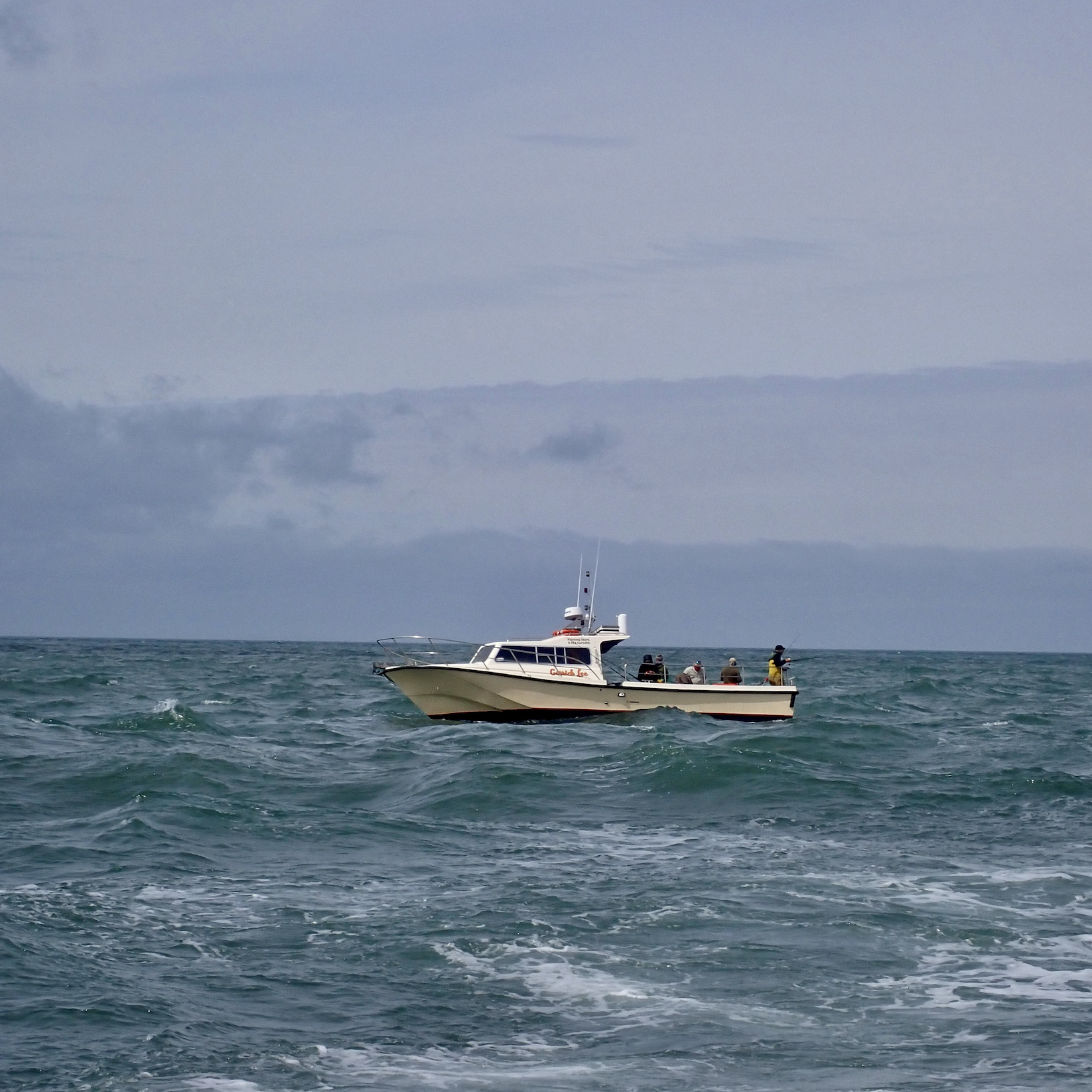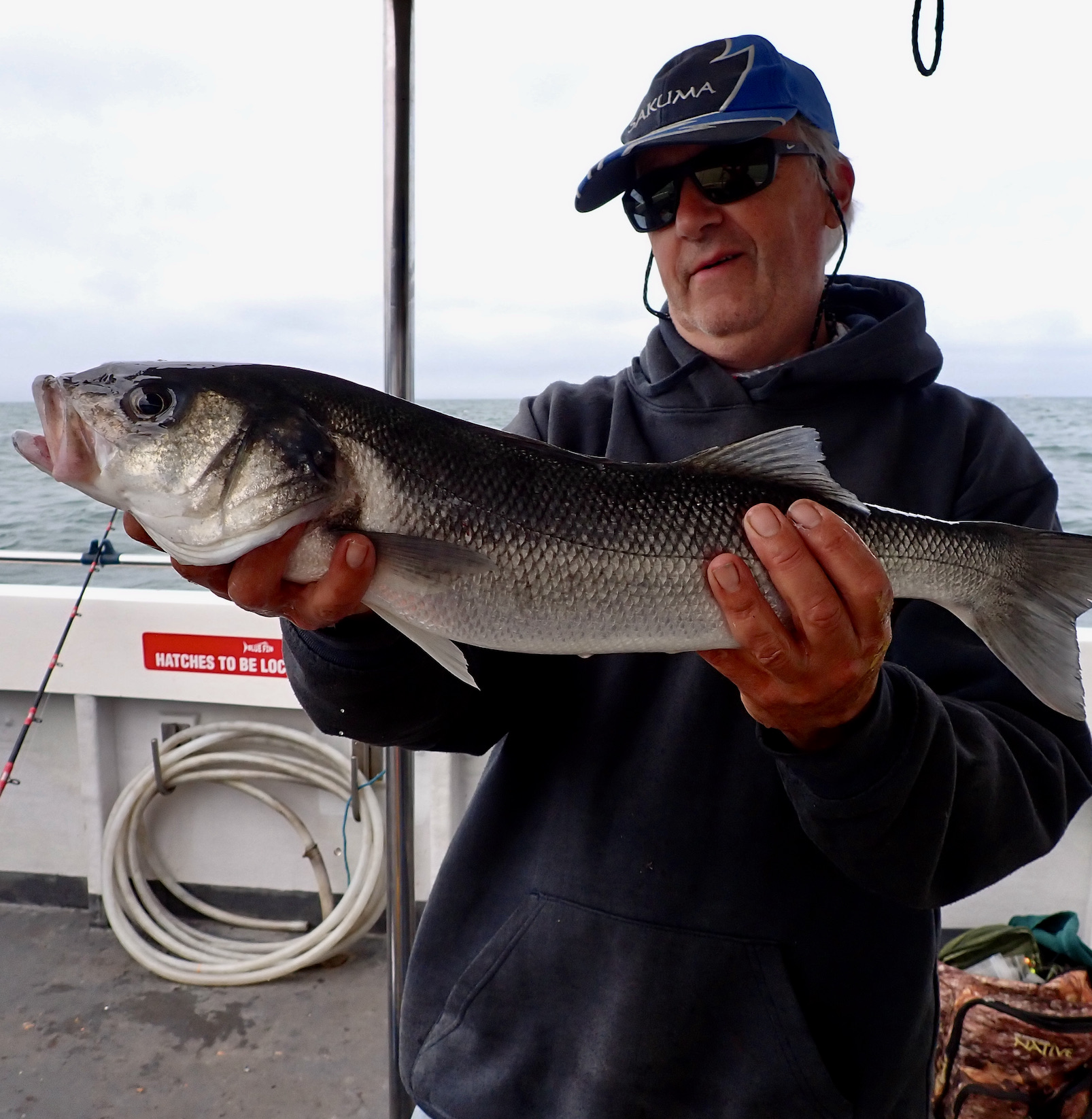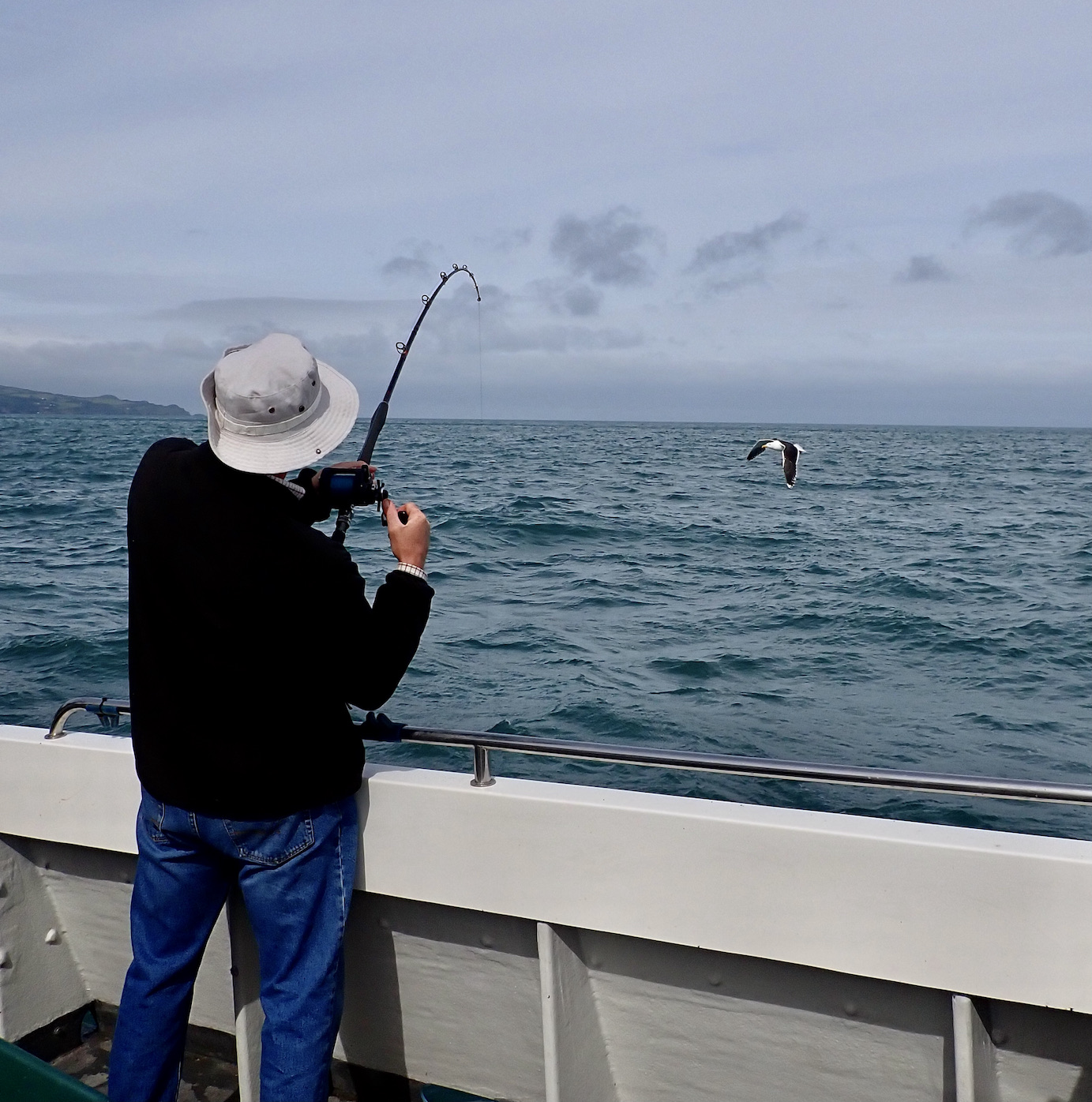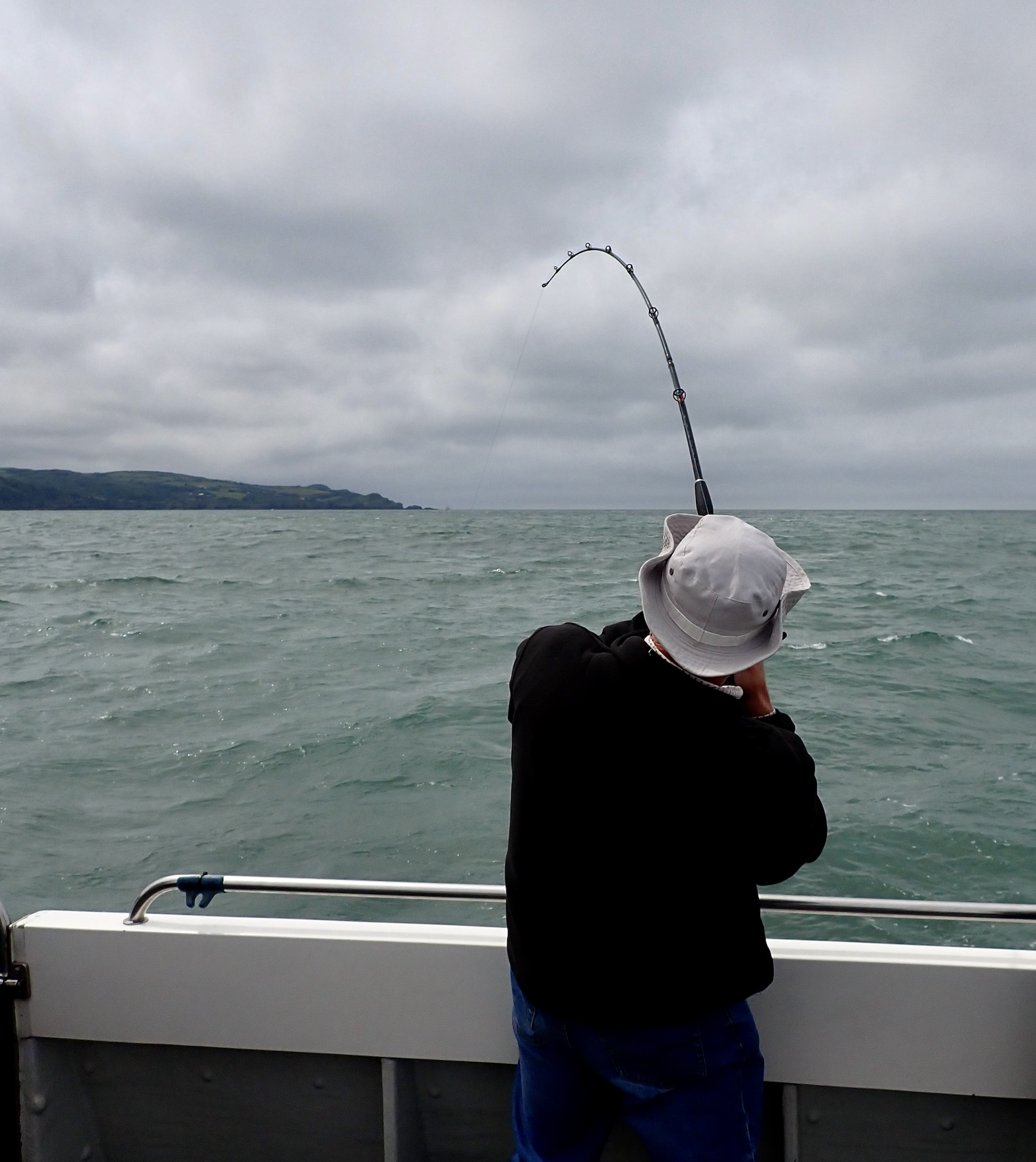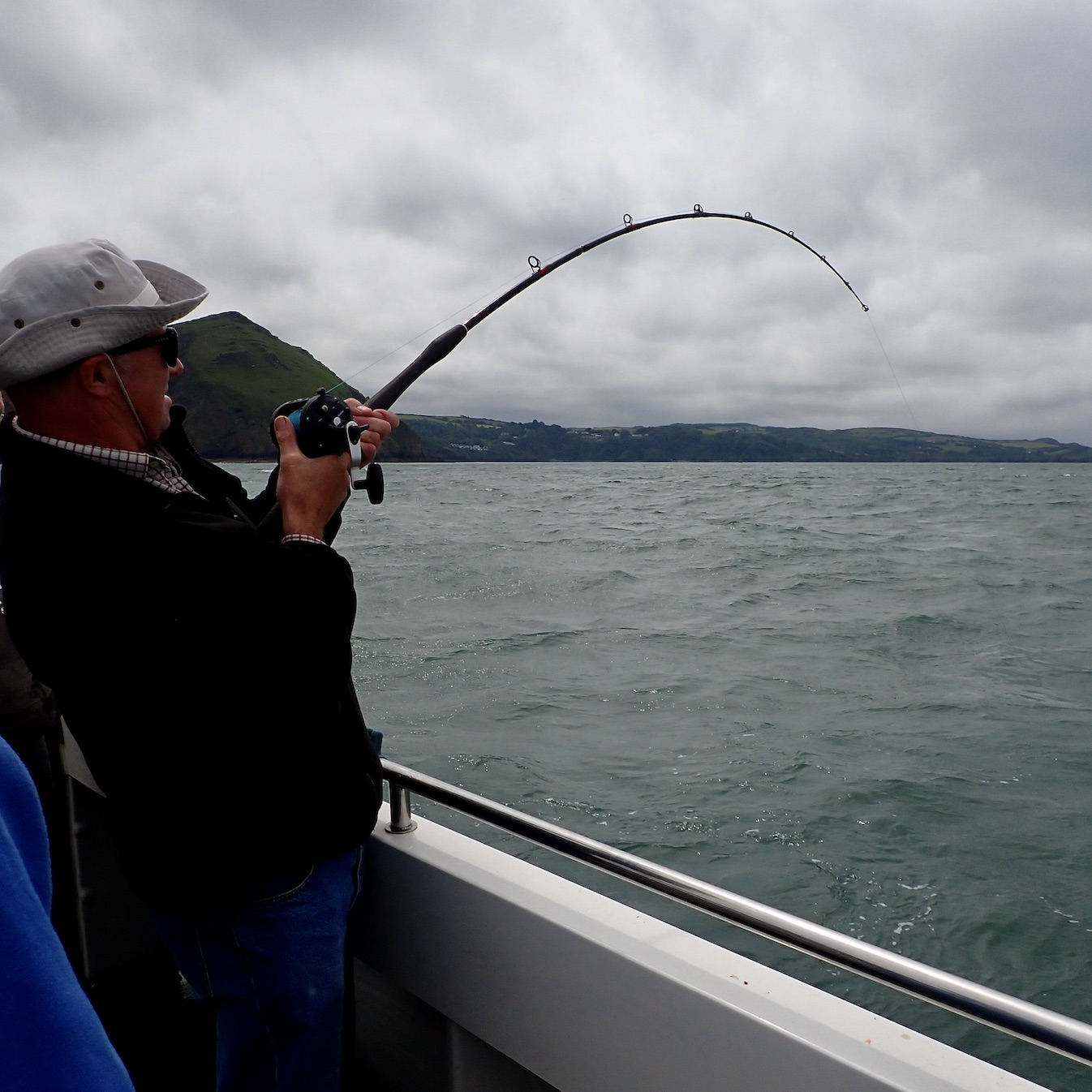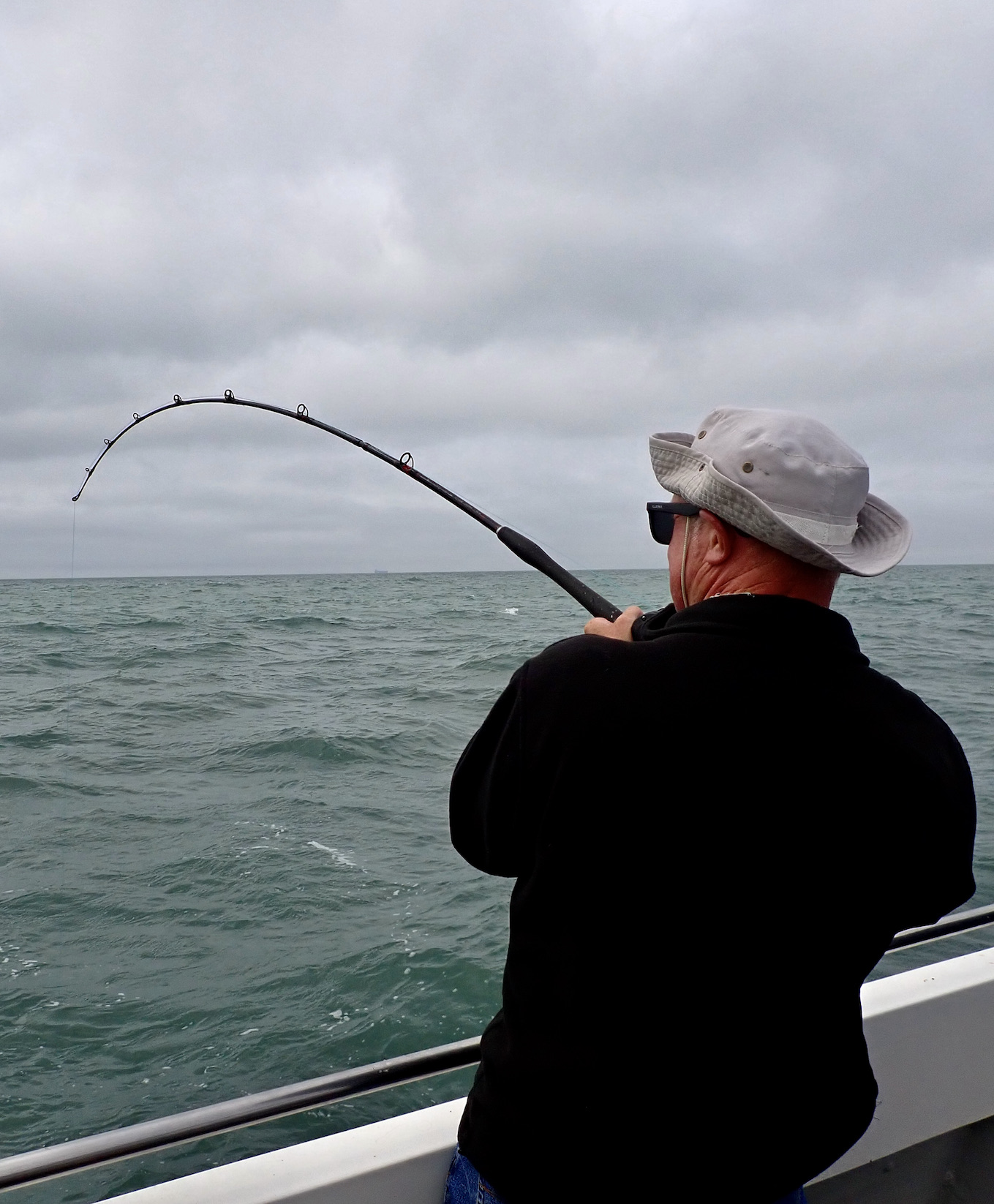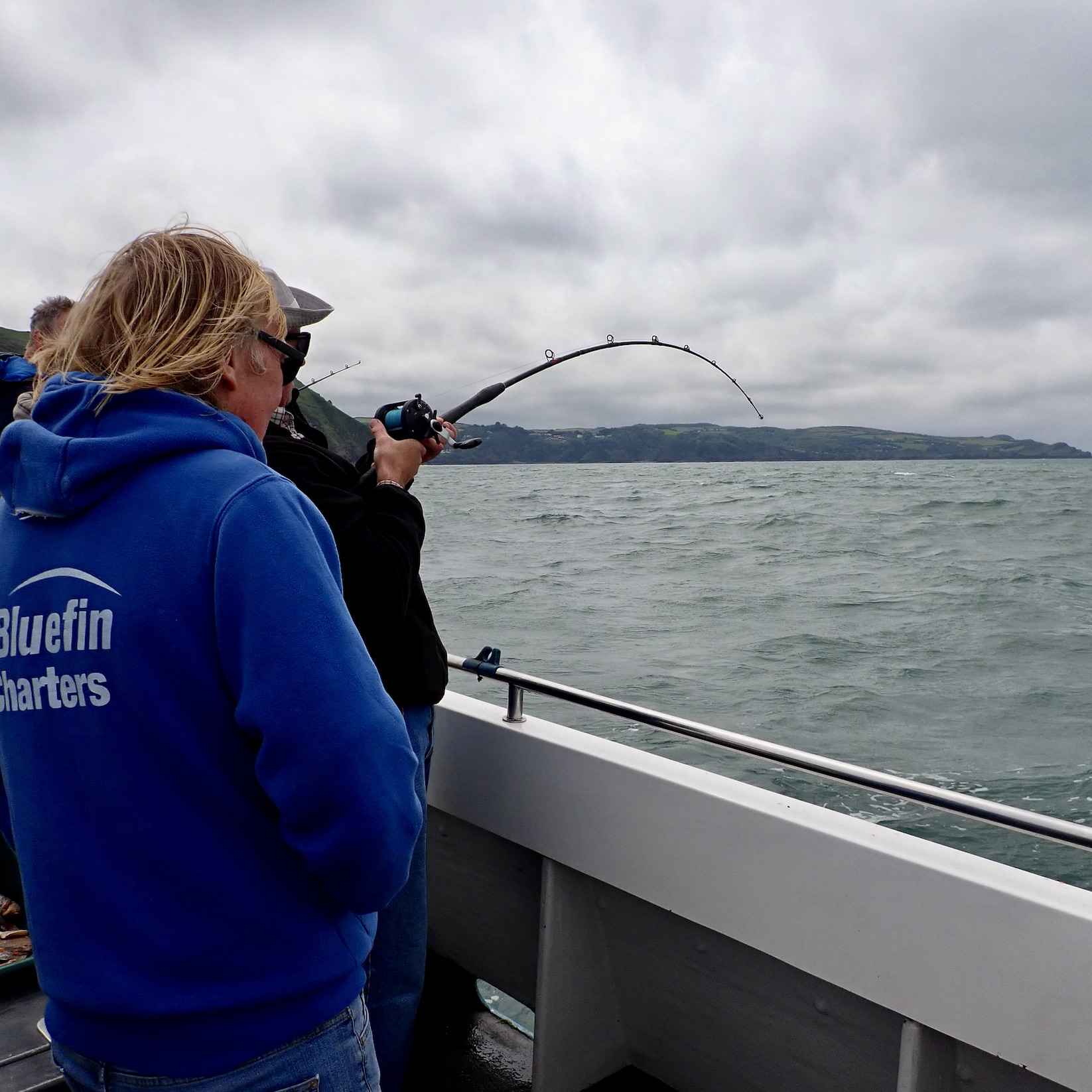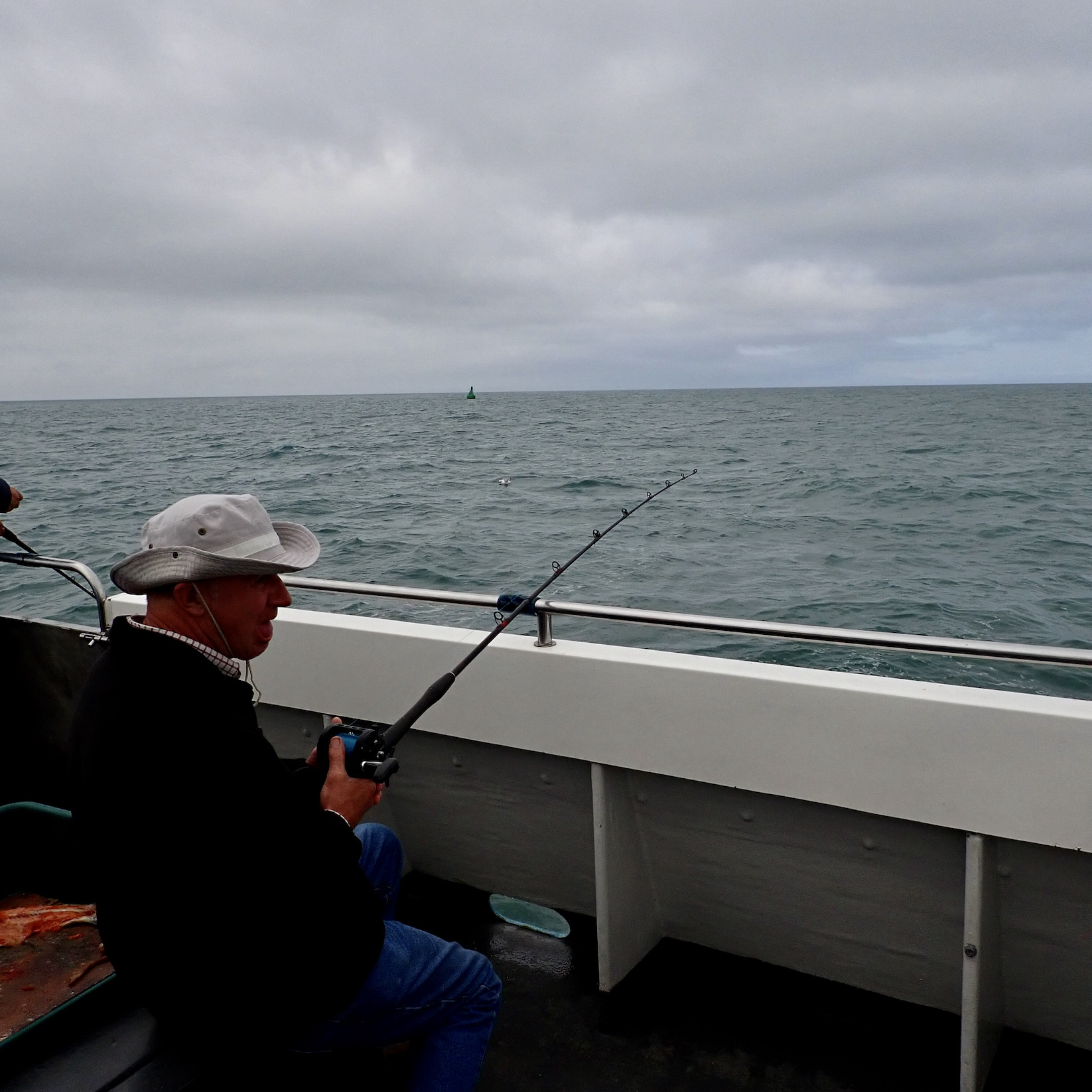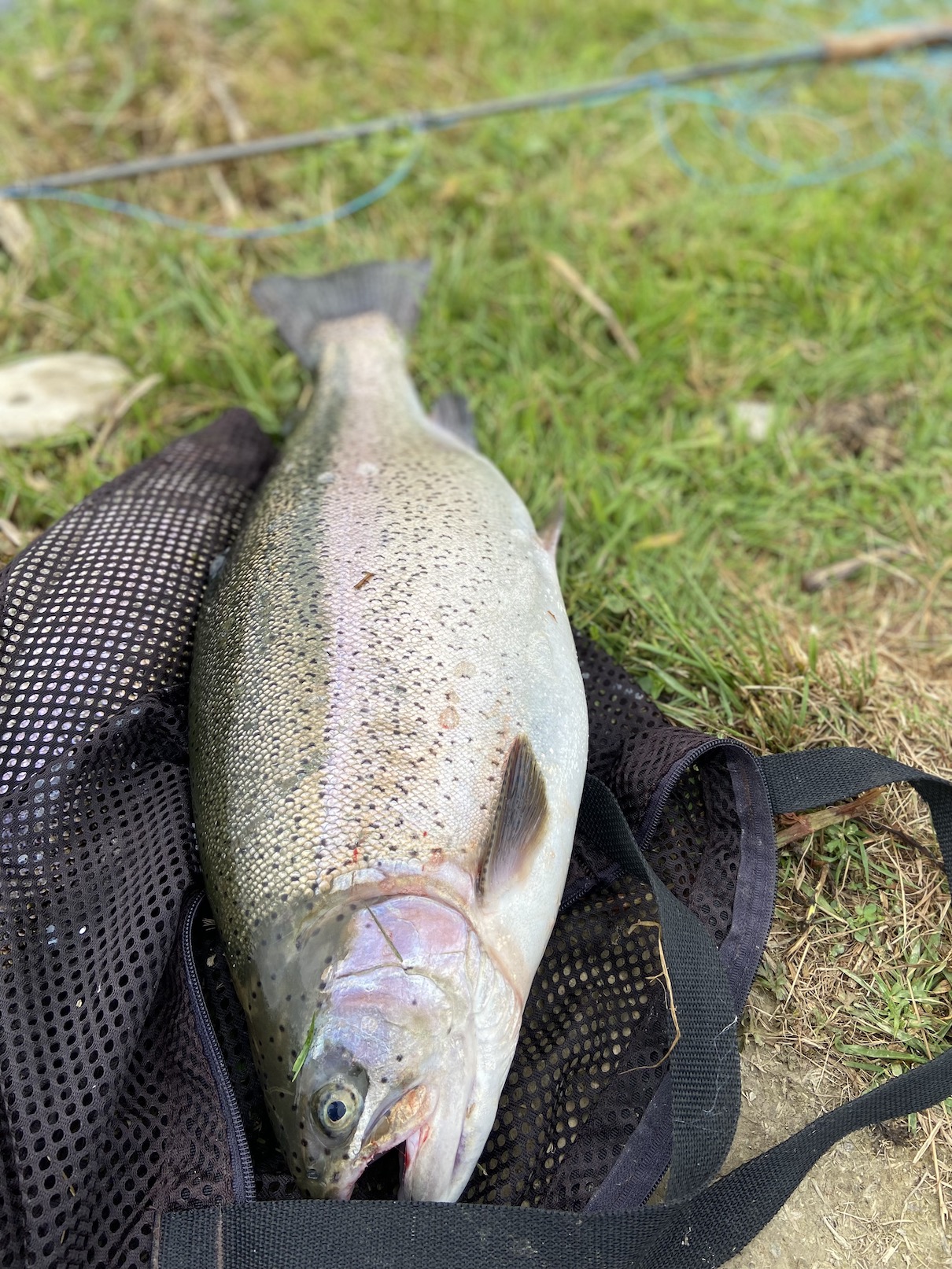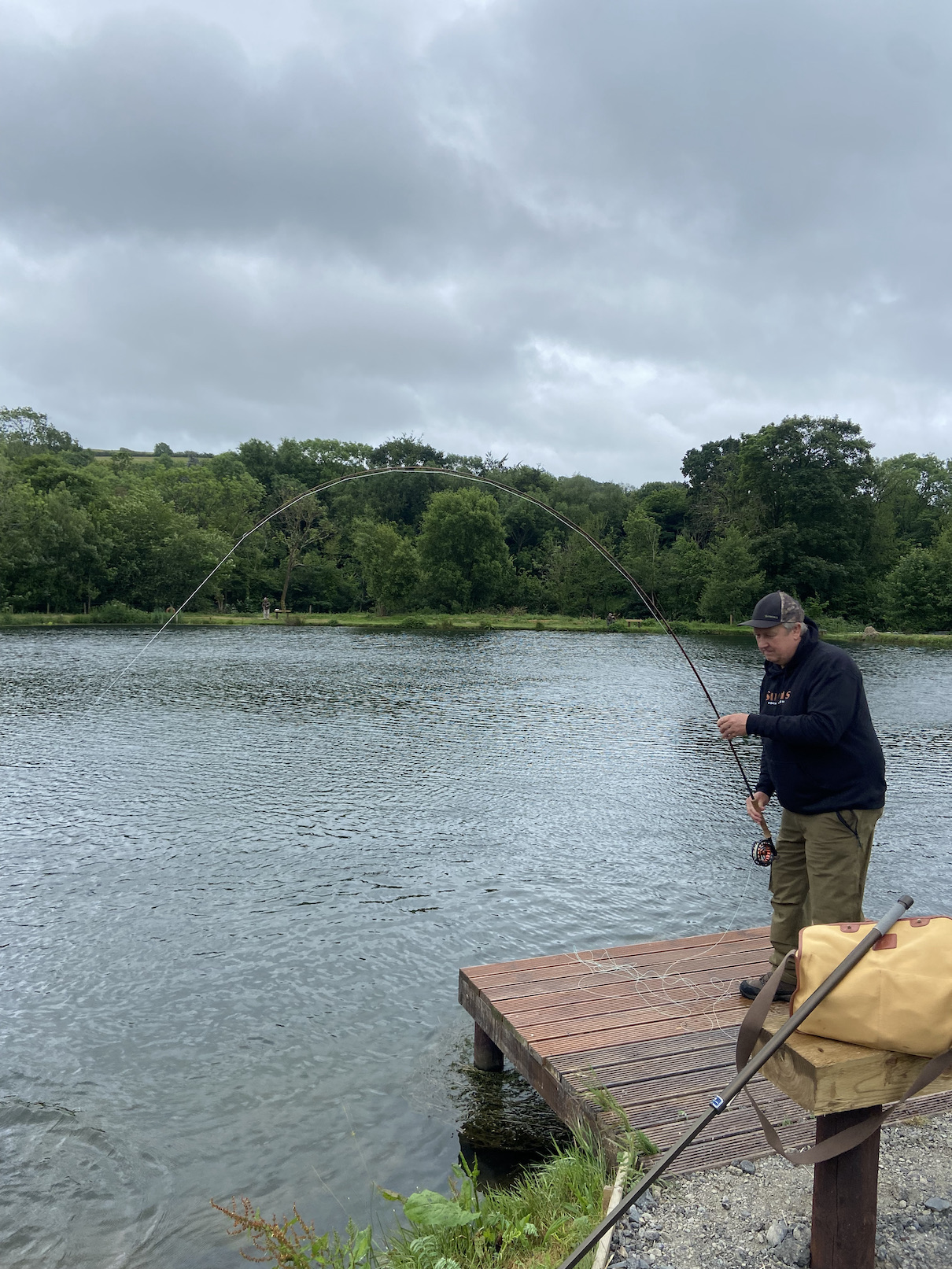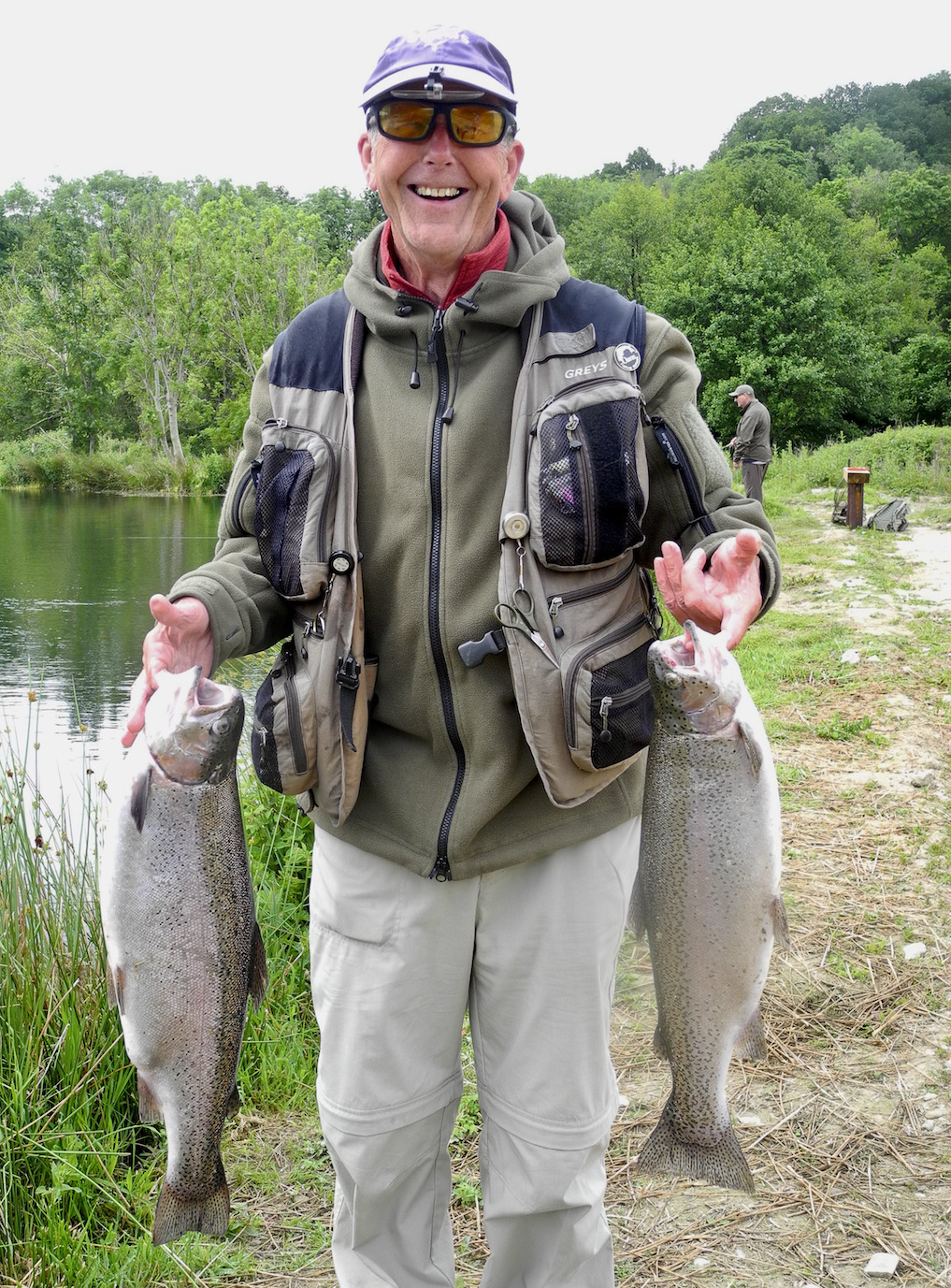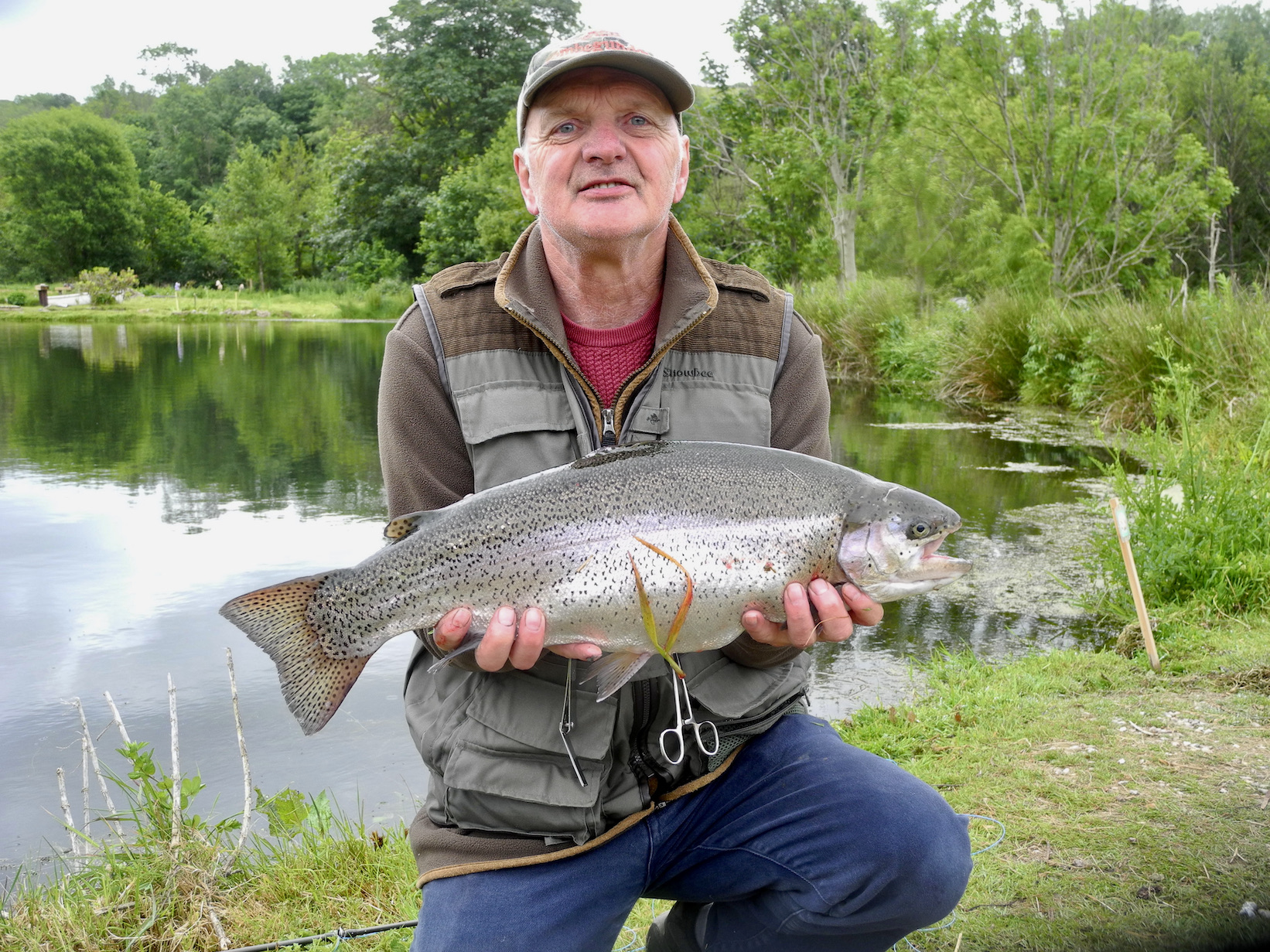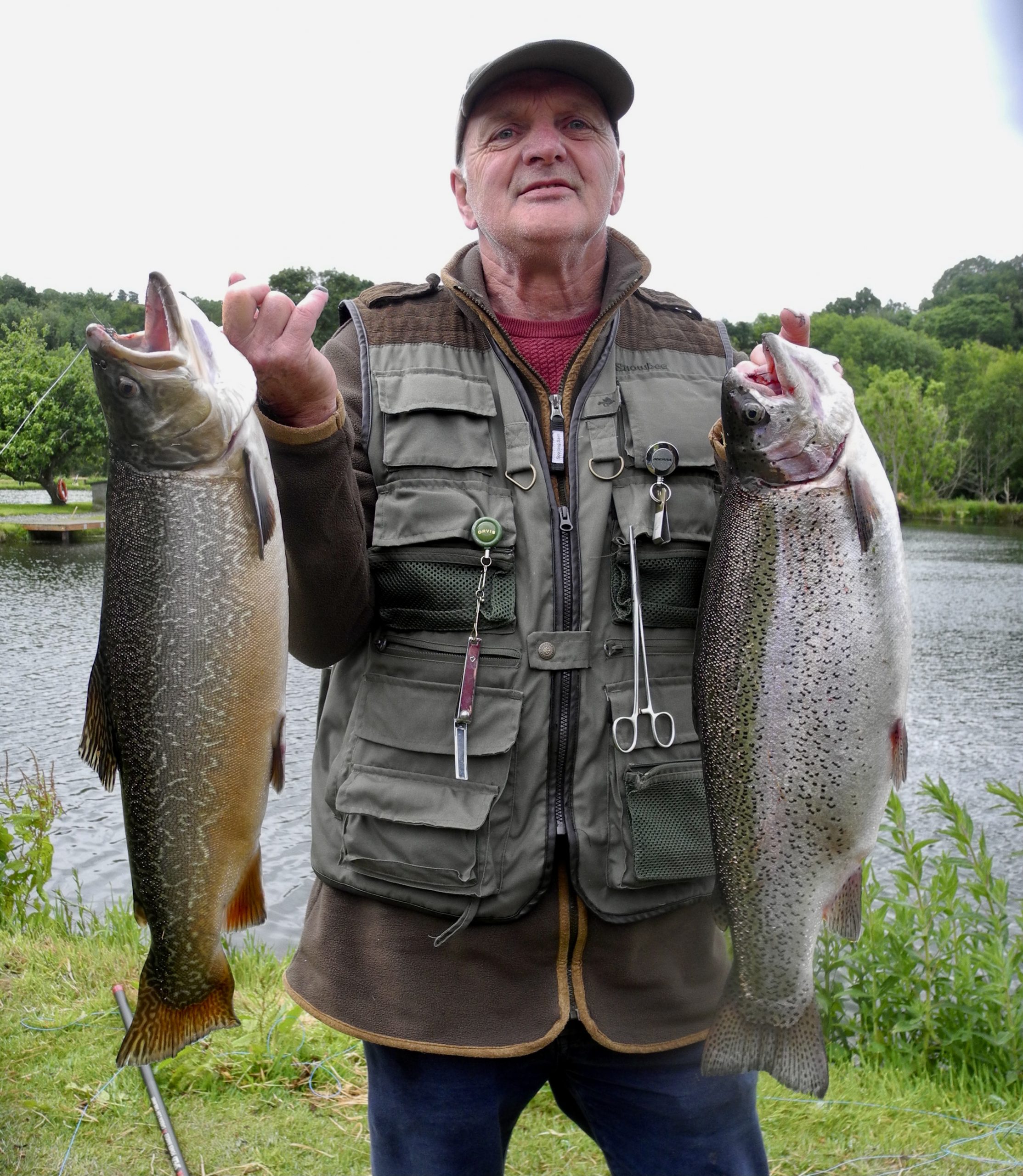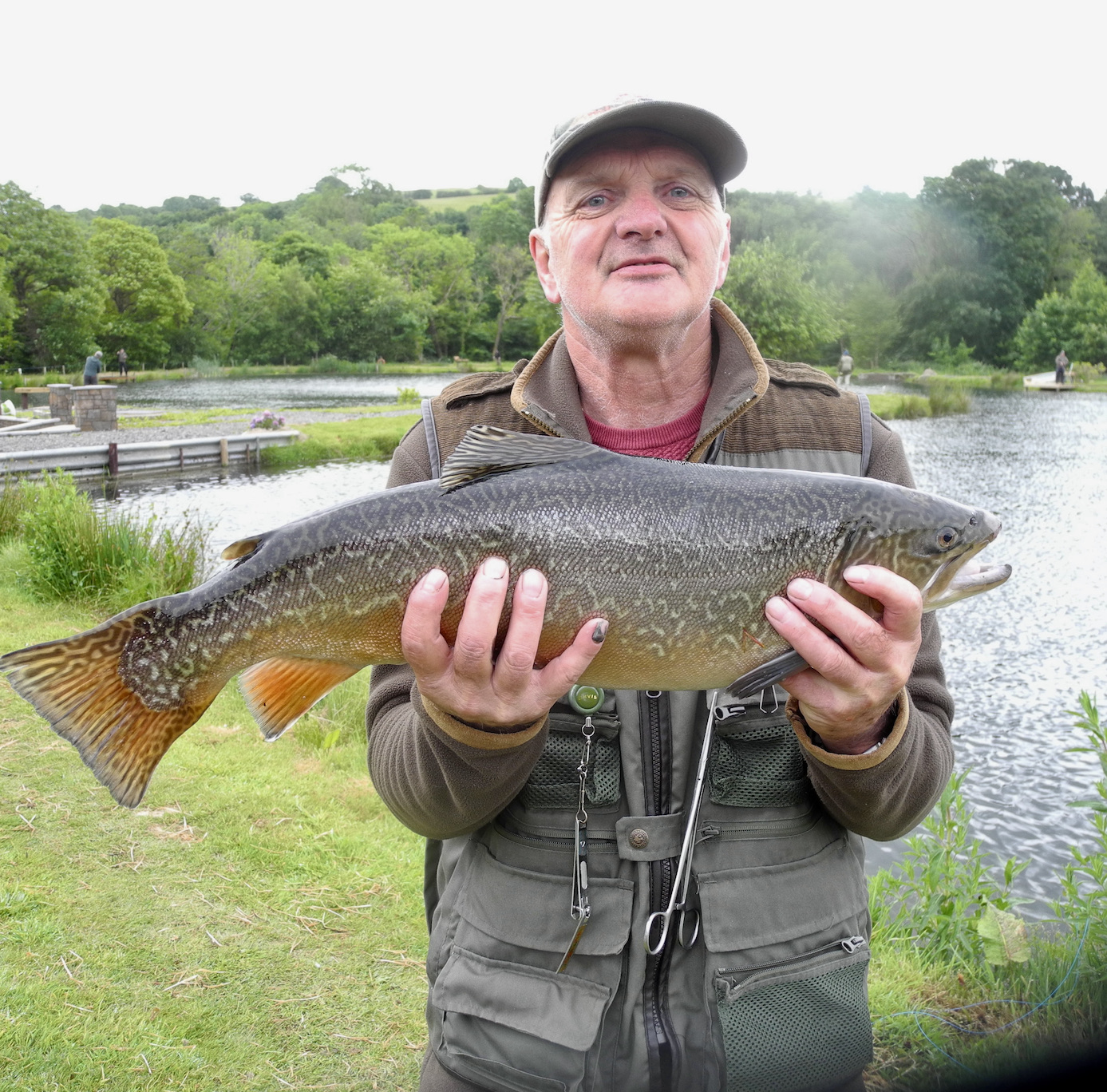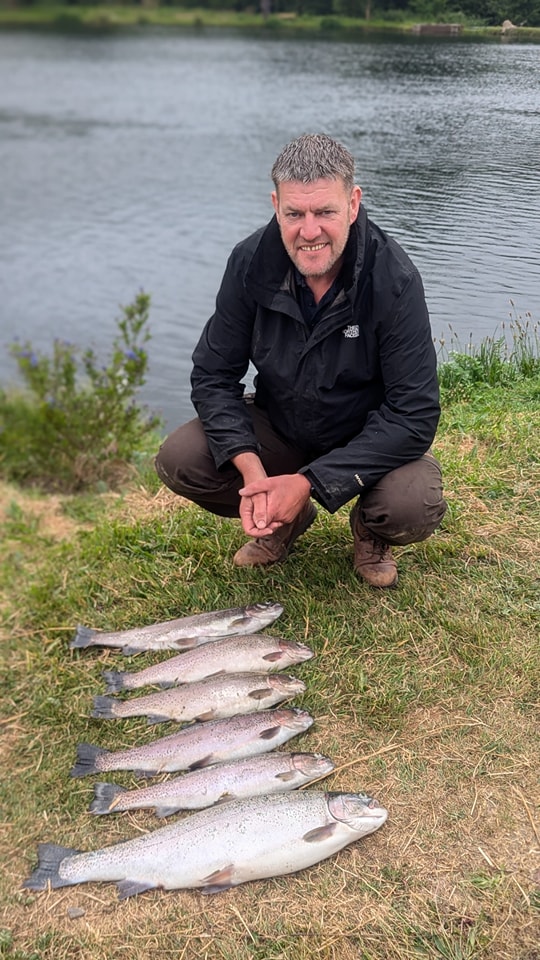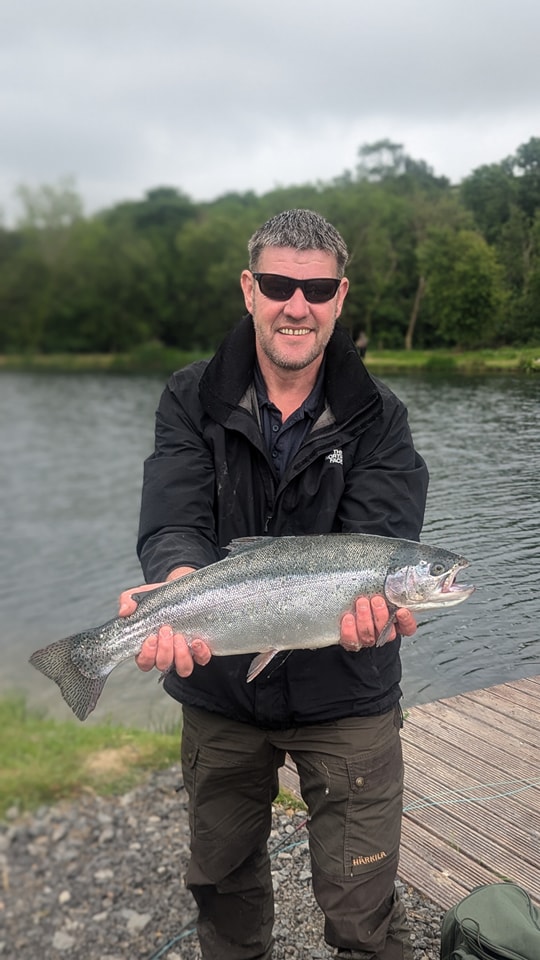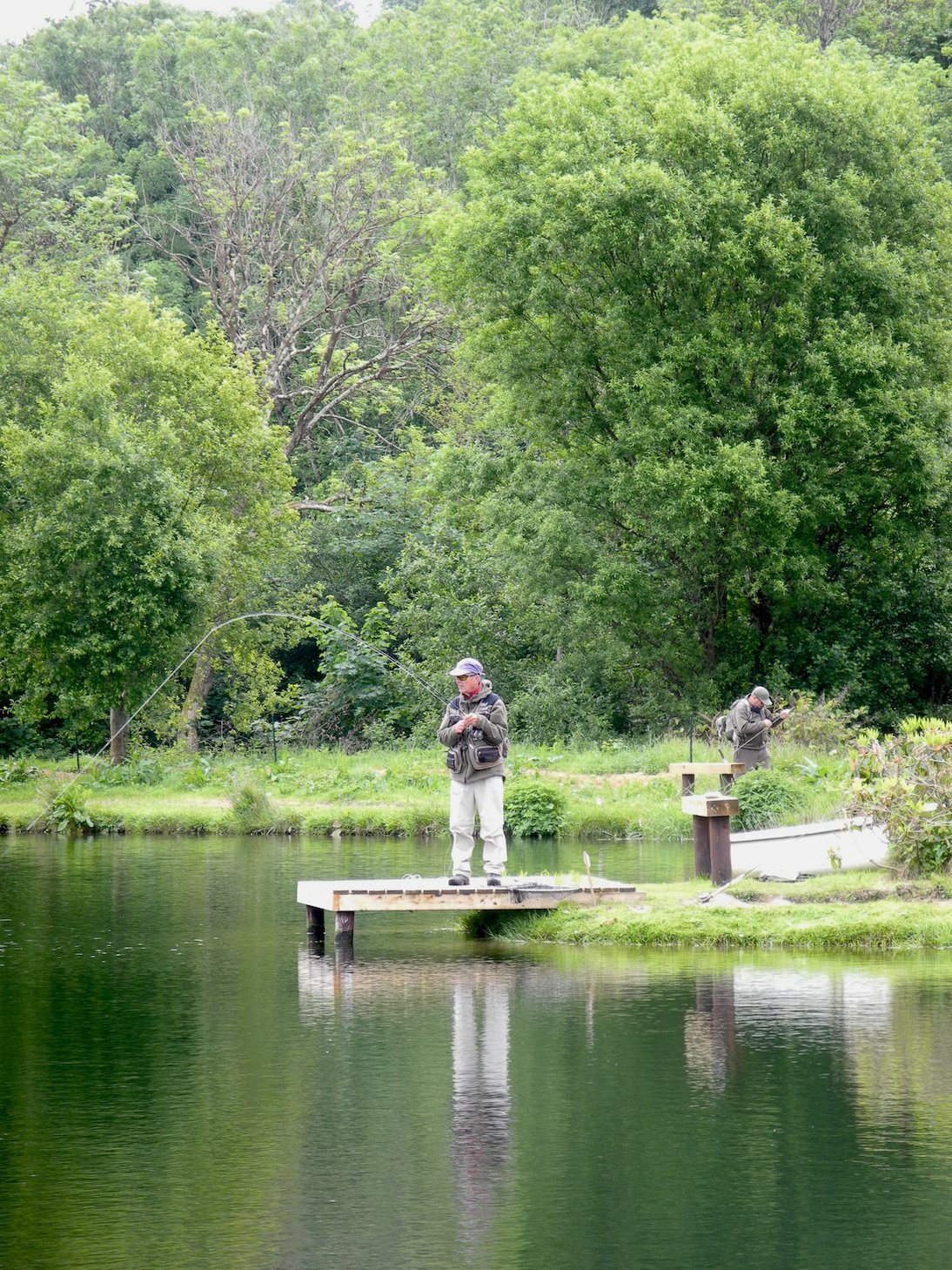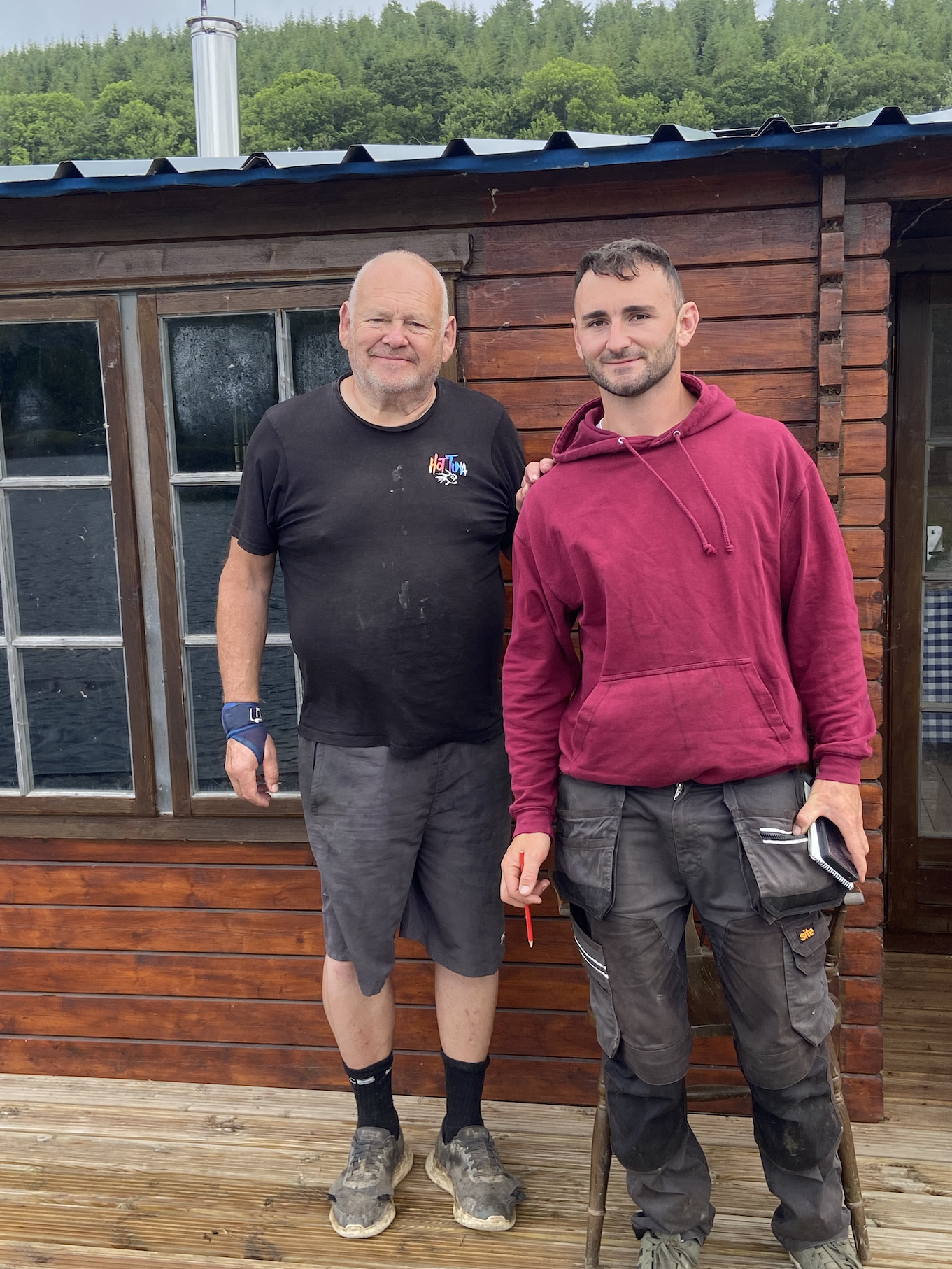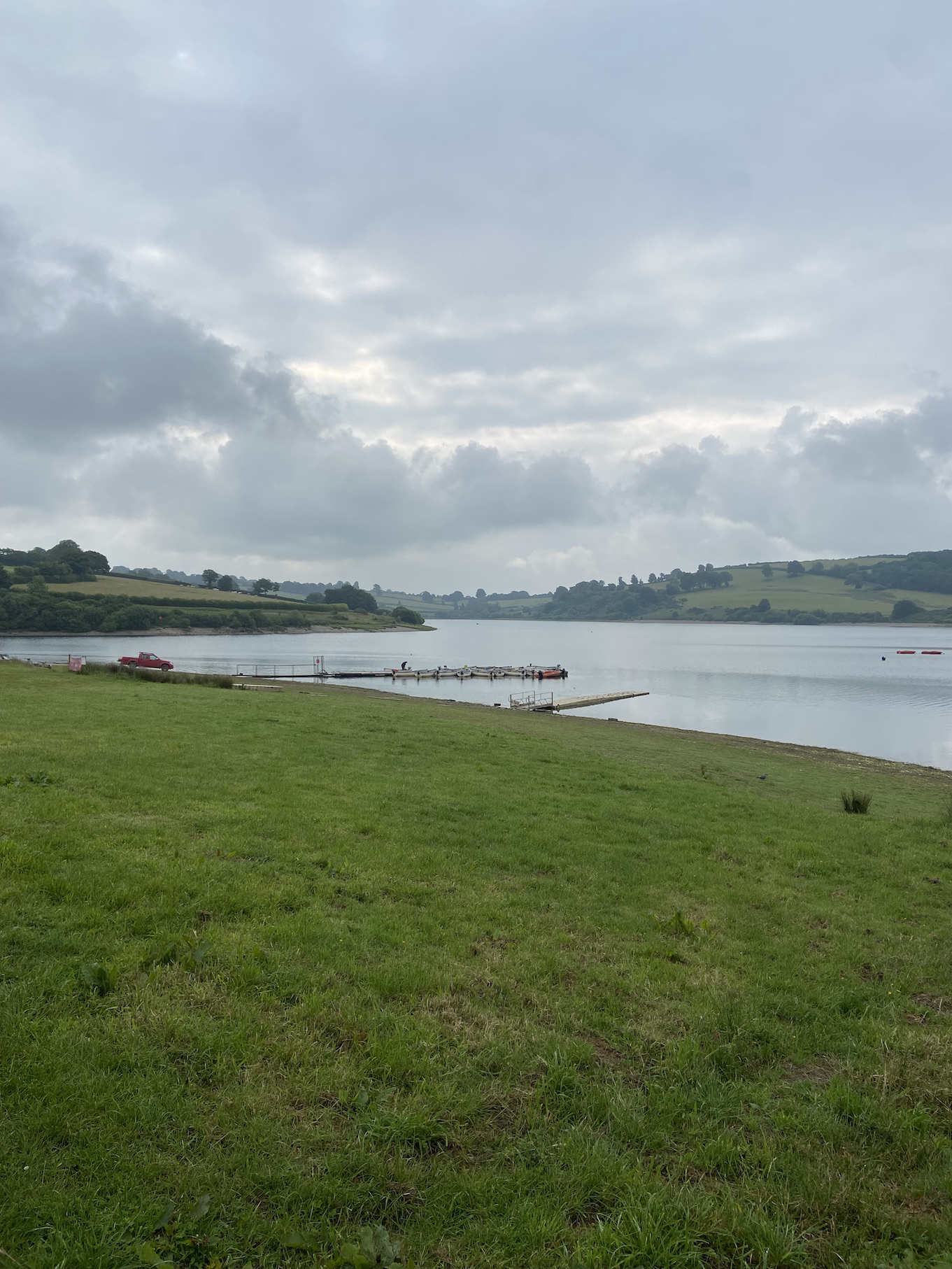

I always relish my trips to Wimbleball savouring each day at this wonderful fishery located deep in the heart of Exmoor. Early to mid-June is undoubtedly one of the best times to visit with Exmoor’s valleys alive with the vibrancy of early summer. Hedgerows and trees that wonderful verdant green that lasts all too briefly before taking on the darker hues of July and August.
I arrived at the boat launching pontoons shortly after 8.00am and set up a pair of rods and tackle before pouring a coffee from my flask and enjoyed the view whilst I waited for my good friend and fellow Snowbee Ambassador Jeff Pearce to arrive.
It was a mellow cloudy morning with a gentle breeze blowing from the West and there was the chance of sunny spells as the day progressed. Perfect conditions I thought but Jeff cautioned my optimism as catch returns reflected that the fishing had not been easy despite a very high stocking campaign.
We were fishing from a boat giving the freedom to search for the fish across the lakes 370 acres. After a cheery greeting Jeff and I discussed our plan for the day. It was hoped that the beetles would be on the water as good numbers of fish had been tempted when conditions were right as the trout feasted upon this annual glut of food.
We decided to commence activities in the deeply wooded Upton Arm an area that has a unique atmosphere with its steep wooded banks flanking the water. Far up at the head of the arm all was calm as bird song drifted through the air. We made our first casts searching the water as we drifted slowly.
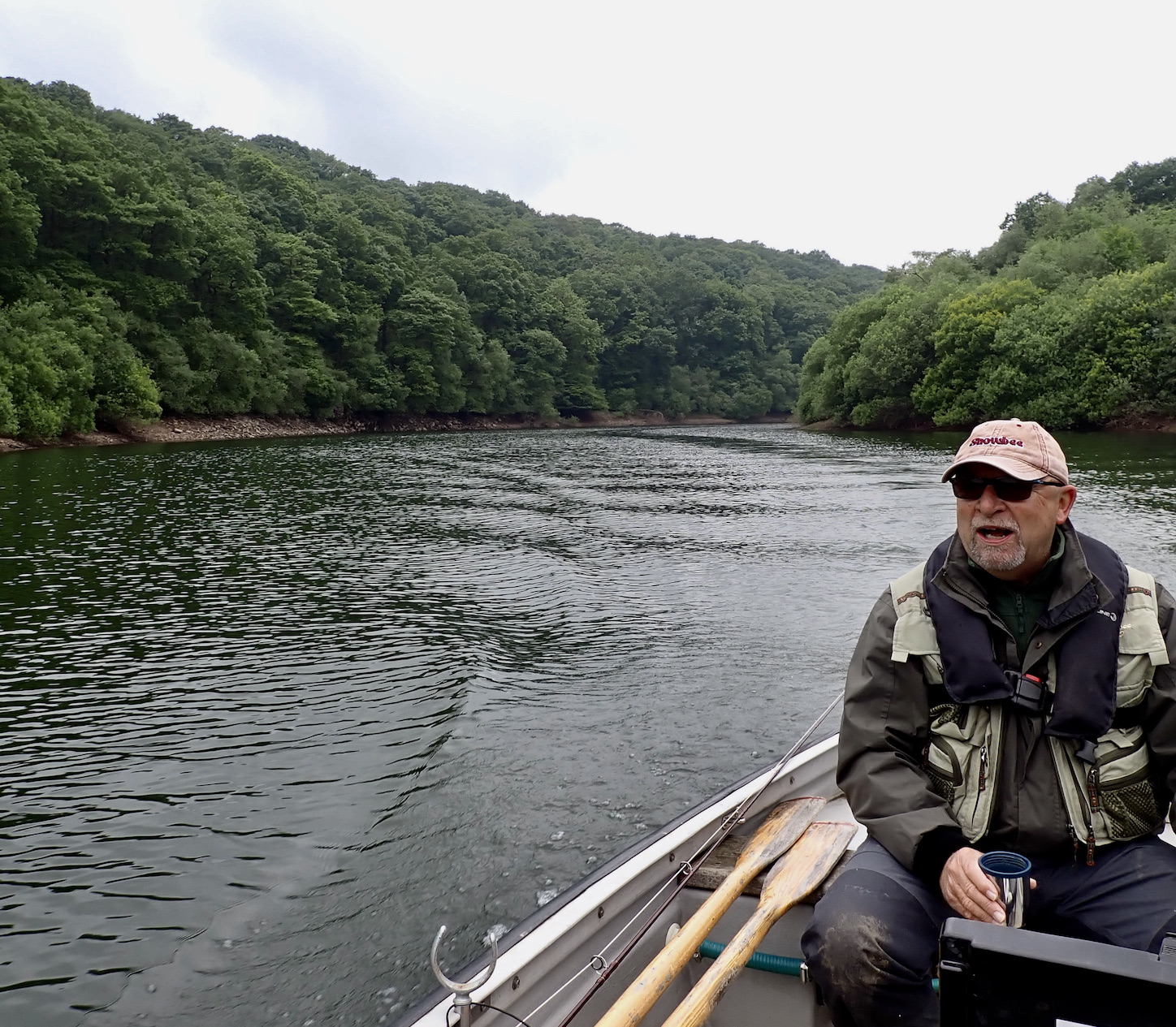
After fifteen minutes or so we moved to the middle area of the arm and resumed our search. I glimpsed a couple of good sized rainbows and made contact with a wild brown trout that shed the hook after an all too brief tussle.
A second drift brought no action and so we headed for the deep water off the dam that seems to produce fish on a regular basis throughout the year.
I was now using a fast sinking line with my favourite olive damsel on the point and a cormorant on a dropper. I was confident of success and seeing very little surface activity assumed the fish were deep. Jeff however persisted with a floating line and a more subtle imitative approach.
We drifted slowly adjacent to the dam area rope cordon and I scanned the water as I always do with my polarised glasses giving a glimpse into the water through the surface glare.
Two good sized rainbows swam purposely through the clear water. I immediately swapped over from the sinking line and lure set up to a floating line with a foam beetle pattern on the point and a larger foam hopper three feet further back.
I watched the water intently and spied another couple of trout. I placed my flies a few feet in front of the cruising fish. The trout inspected the offering but showed disdain. Jeffs floating beetle proved more appetising and was slurped down by a hard fighting rainbow of around 2lb.
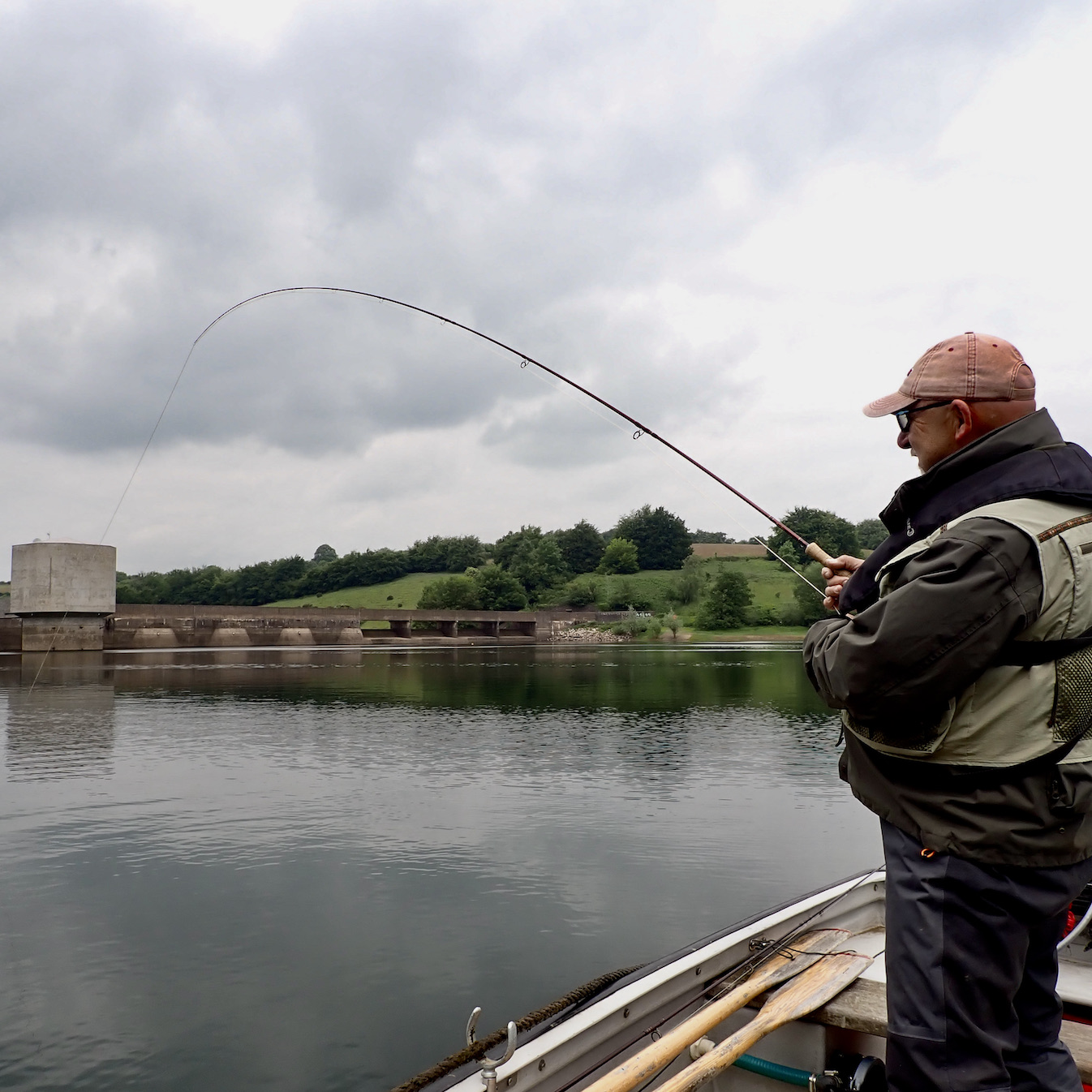
This was exciting fishing and my turn soon came as I dropped my flies in front of a trout that gave a good account on my 5-wt set up before shedding the hook.
It was obvious that the trout were on the look out for surface food as close study of the water revealed plenty of cruising fish.
There are often defining moments in a day’s fishing that can live long in the memory. One such moment came on this day as I watched a good sized rainbow cruising just beneath the surface. I extended my Snowbee Thistledown line and dropped my fly’s five feet in front of the trout.
I watched with anticipation as the trout converged upon my offering. I gave Jeff a running commentary as the trout paused and inspected my offering circling warily before slurping the beetle from the surface in a delightful ring of deception upon the calm water.
I lifted the rod to feel that thrilling moment of connection. The trout powered away the light rod taking on a steep curve and the trusted Snowbee Fly reel singing as line was ripped off at a rate of knots. This was undoubtedly a good fish and considerably larger than my initial estimate as I had seen it take my fly. After several powerful runs the fish dived deep stripping line from the reel as I put as much strain on the 6lb b.s point as I dared.
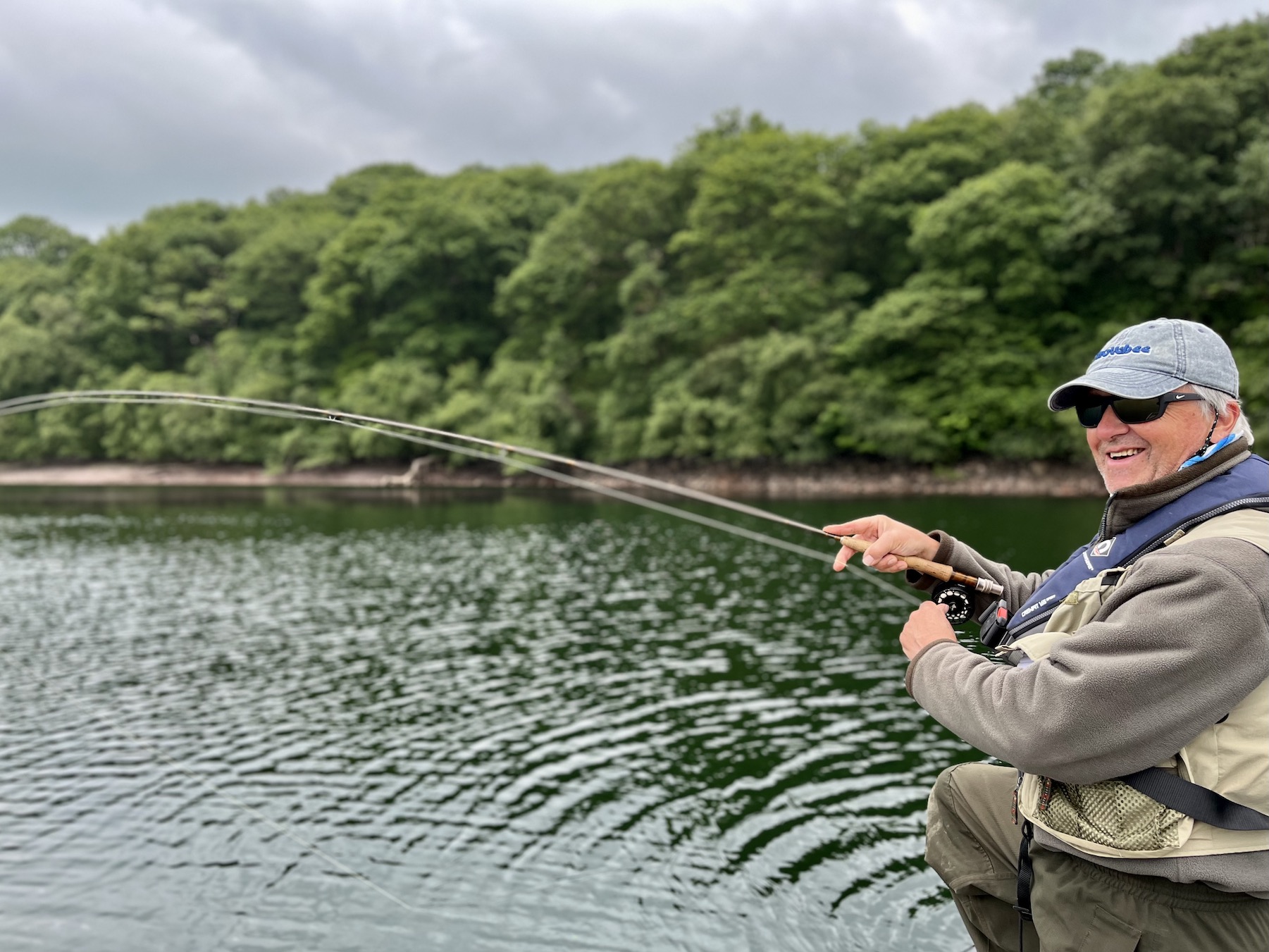
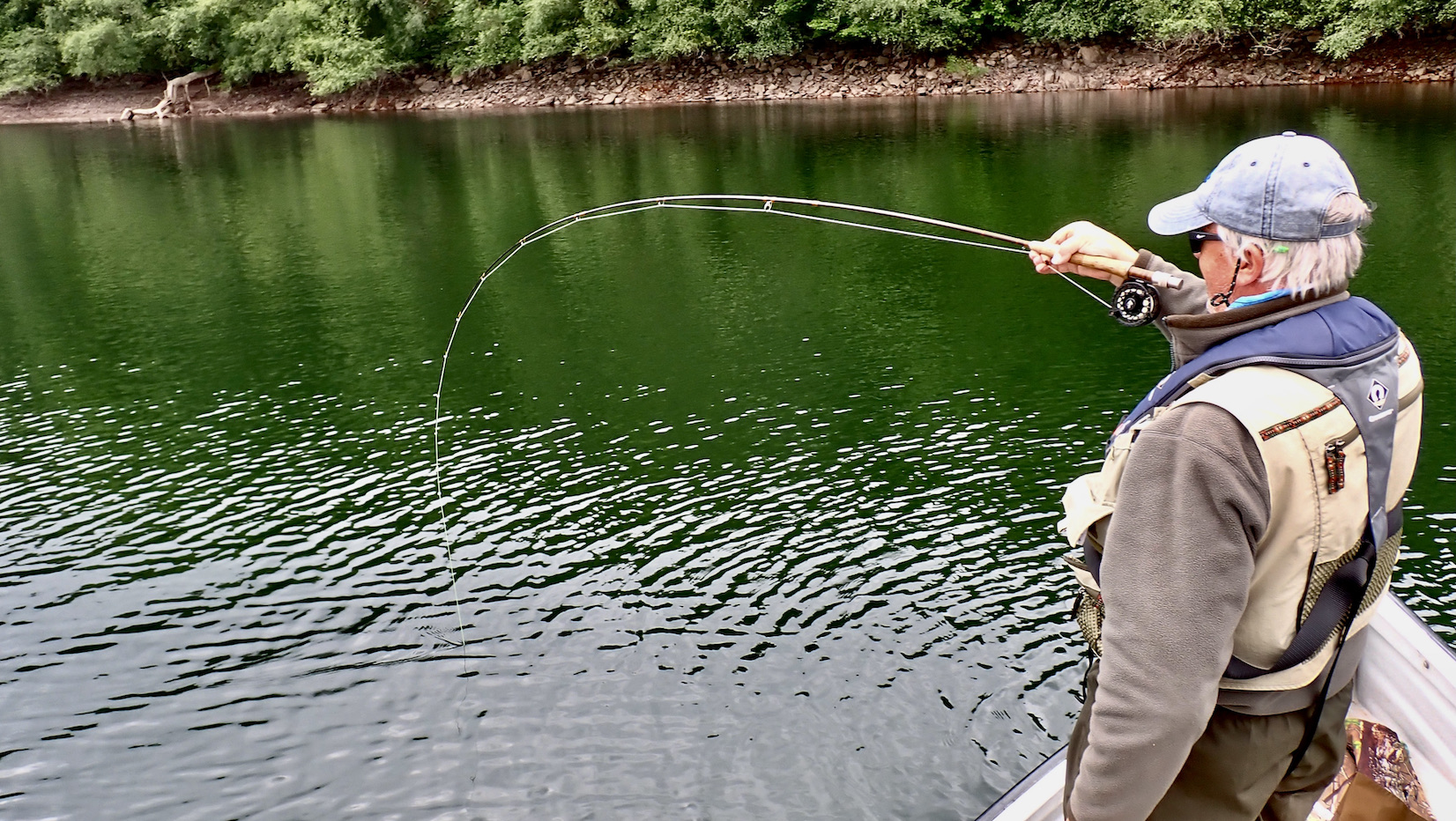
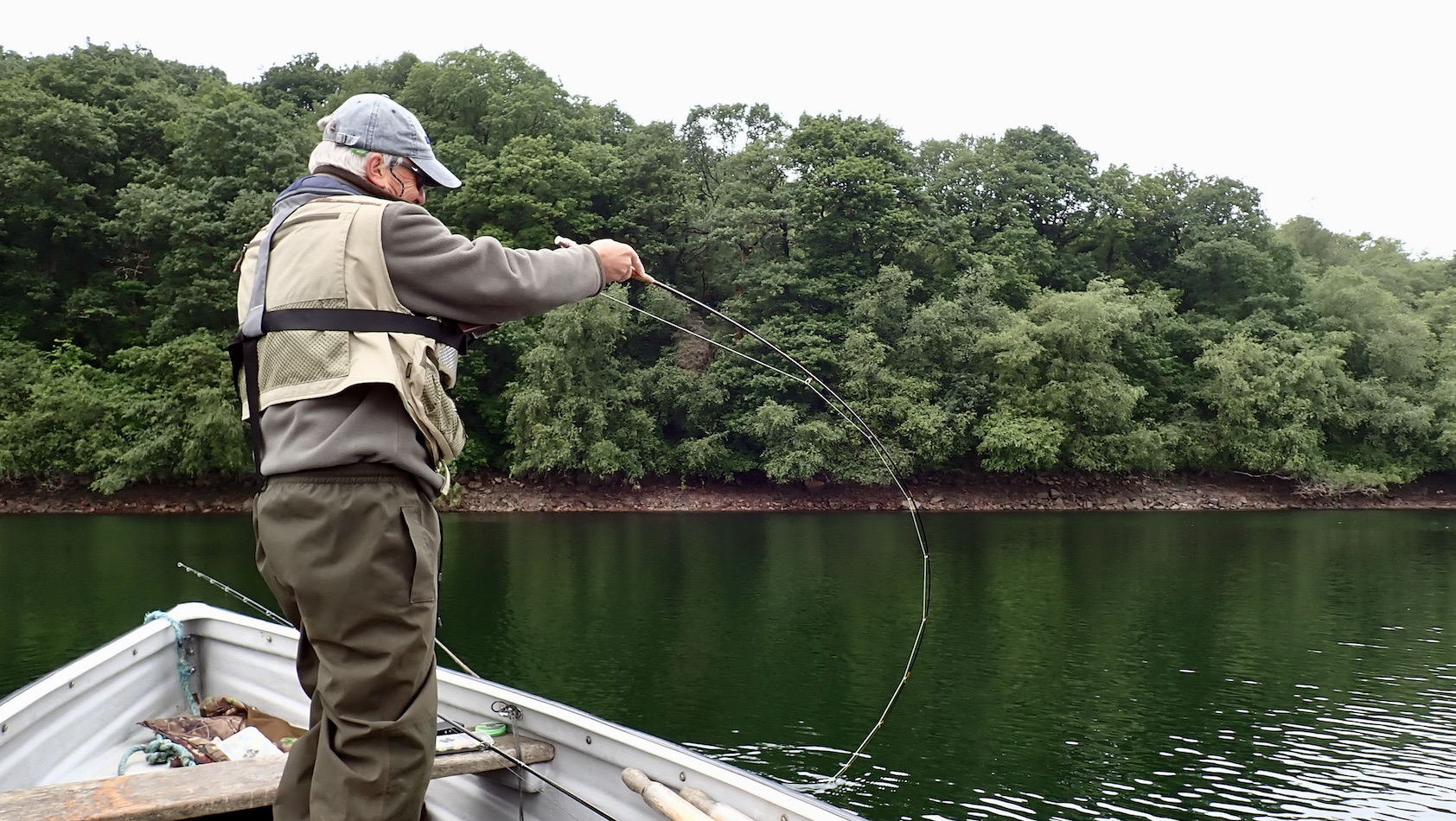
The 10ft 5-Wt rod was well hooped over as I relished the opportunity to test my tackle as the fish shook its head far below the boat in over 60ft of water. The fish held its position deep down the rod absorbing each lunge as for a few moments it was stalemate. Maximum pressure was applied and slowly the fish came up in the clear water and we glimpsed a deep silver flank. I readied the net; Jeff exclaimed that it was probably a double and I breathed a sigh of relief when the rainbow was safely within the folds of the net.
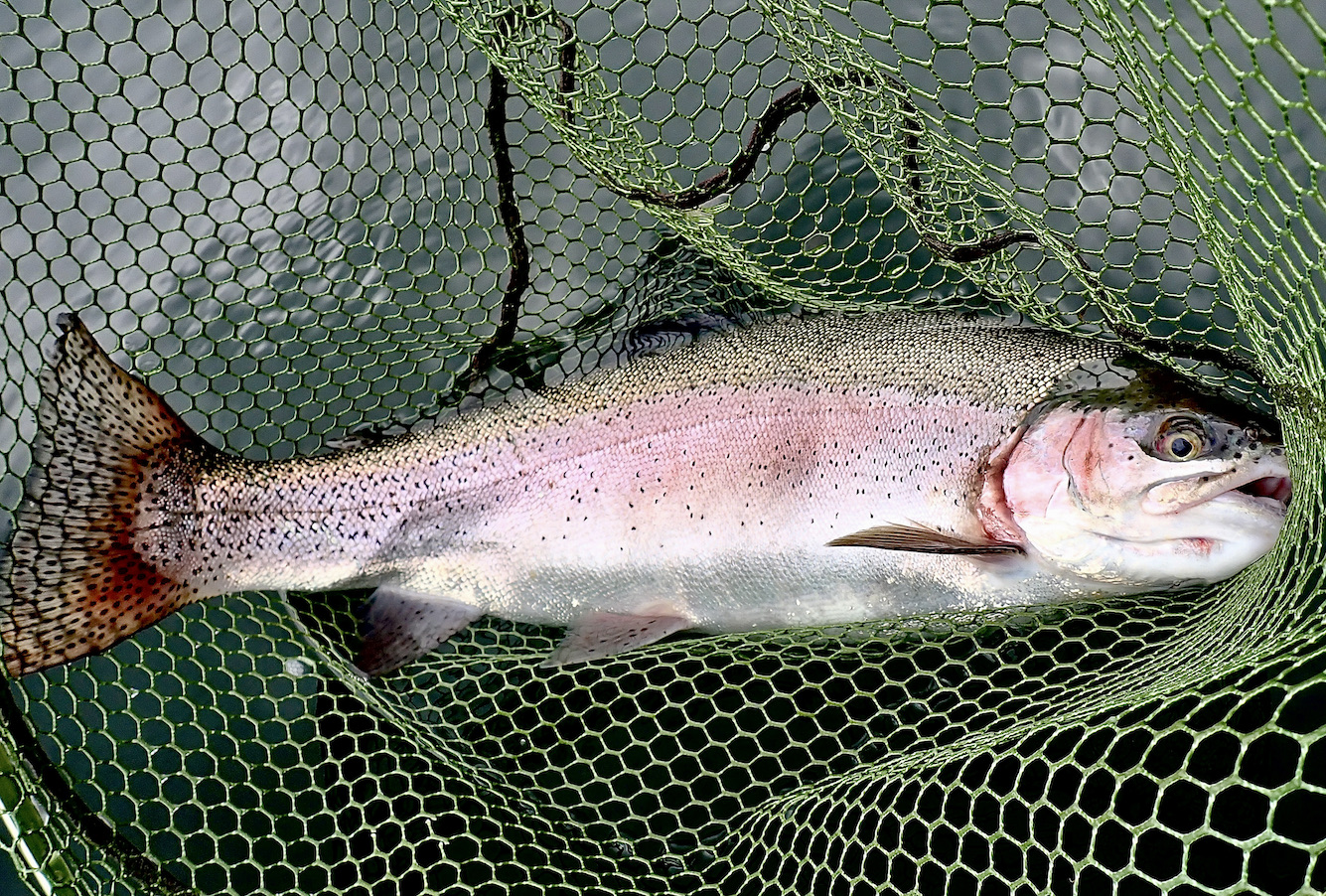
The fish was in splendid condition with deep flanks and wide spade like tail. I slipped the small barbless hook from its jaws. Held it in the net for several minutes and lifted it from the water for a quick photo before slipping the fish back into the depths.
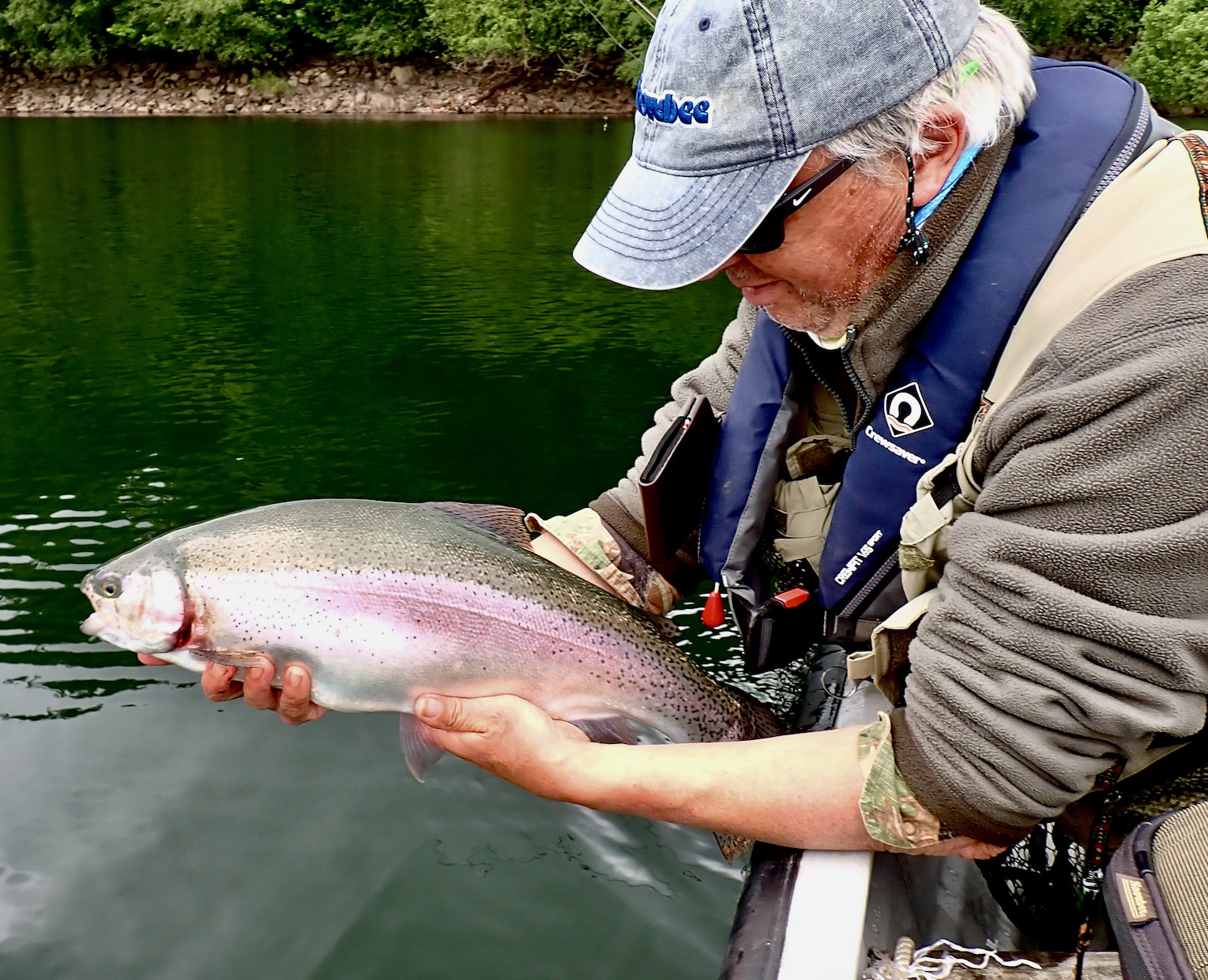
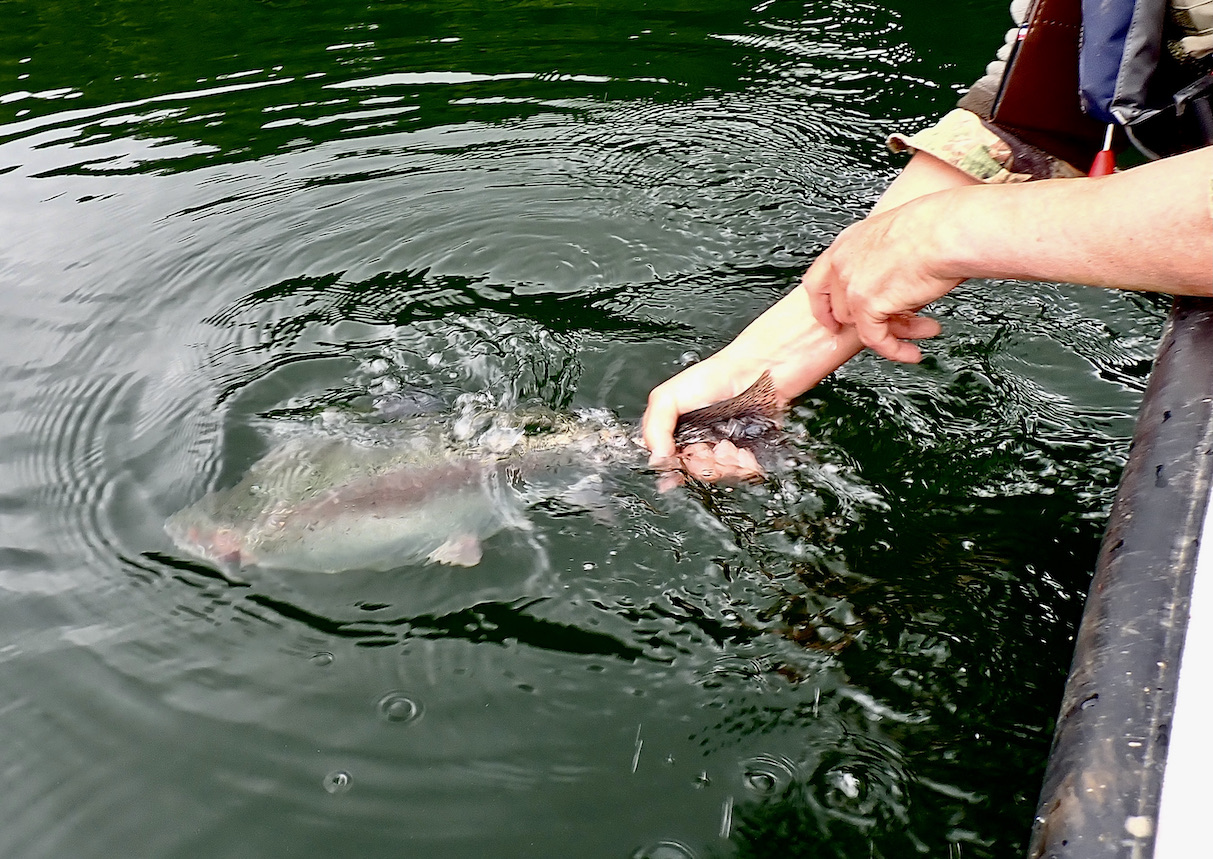
We fished on a for a while missing several fish before it went quiet and we decided to search elsewhere. We headed to the far end of the lake to search Bessom’s and the shallower water. Several bank anglers were enjoying good sport in the area.
There were no fish visibly rising so I decided to try lure tactics again. Jeff wisely persisted with dry beetle pattern and soon rose a fish. Switching back to my dry fly tactics I too enjoyed success and in the next hour we added three more fish to the days tally missing numerous takes as we failed to connect with the fly that was hard to watch as the brisk breeze rippled the surface.

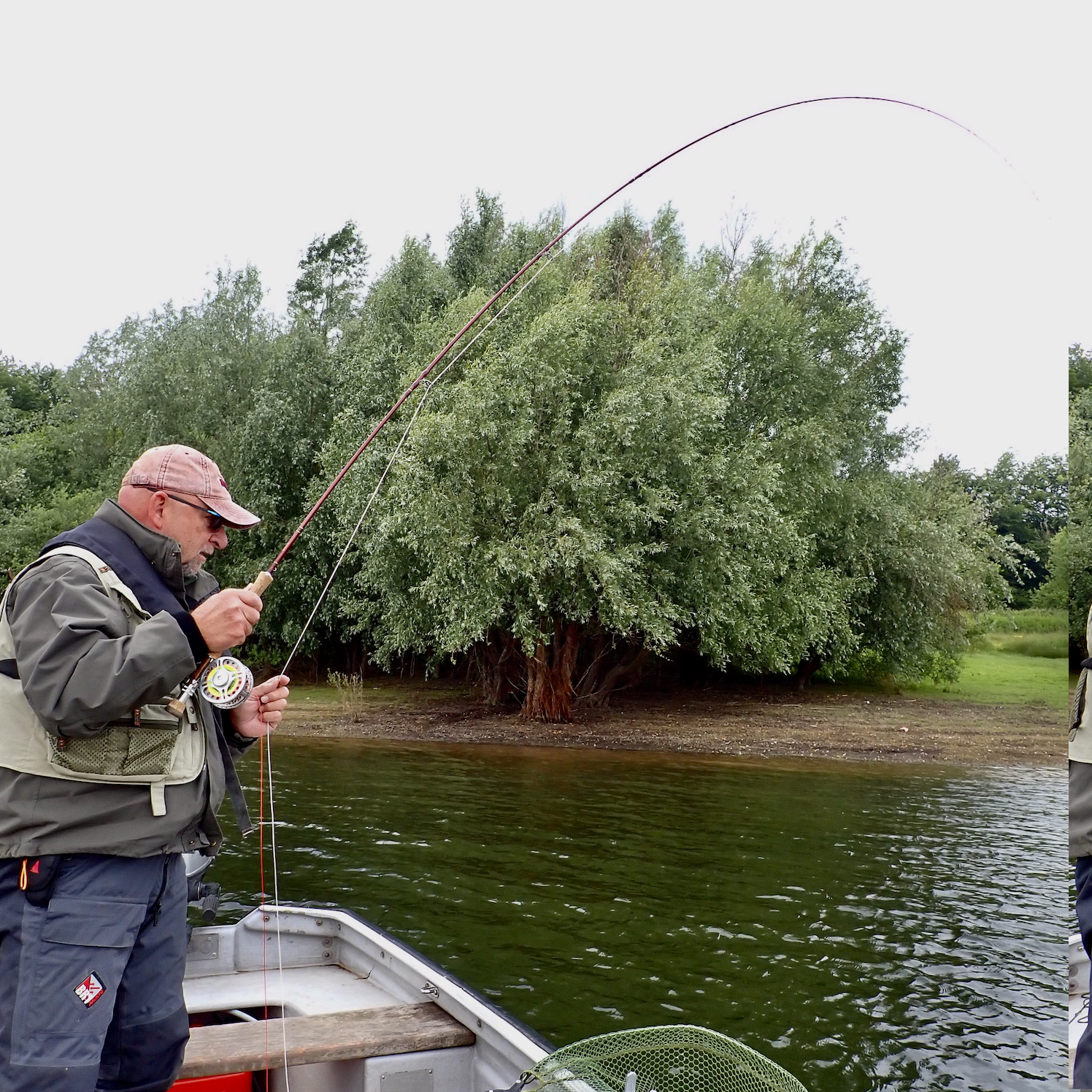
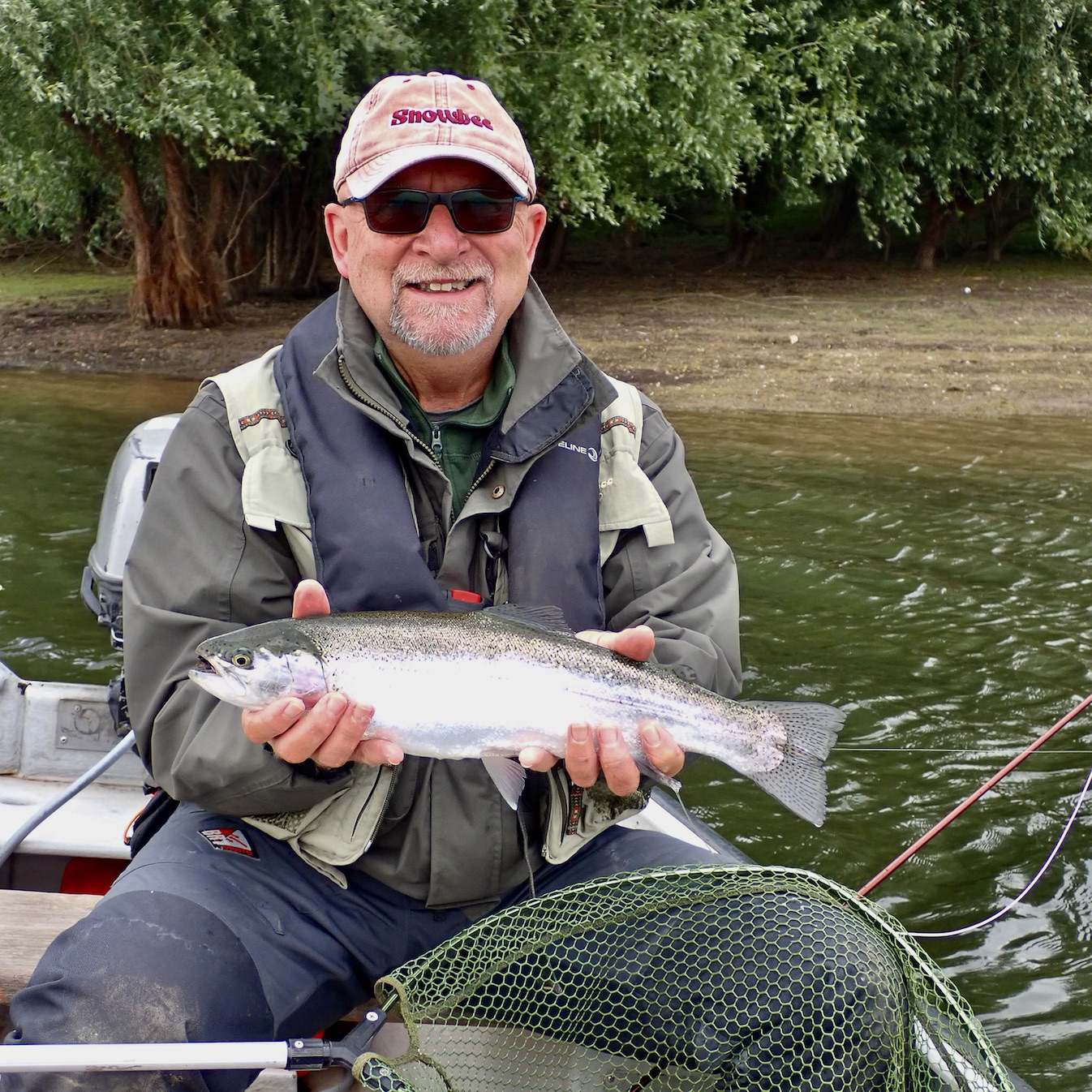
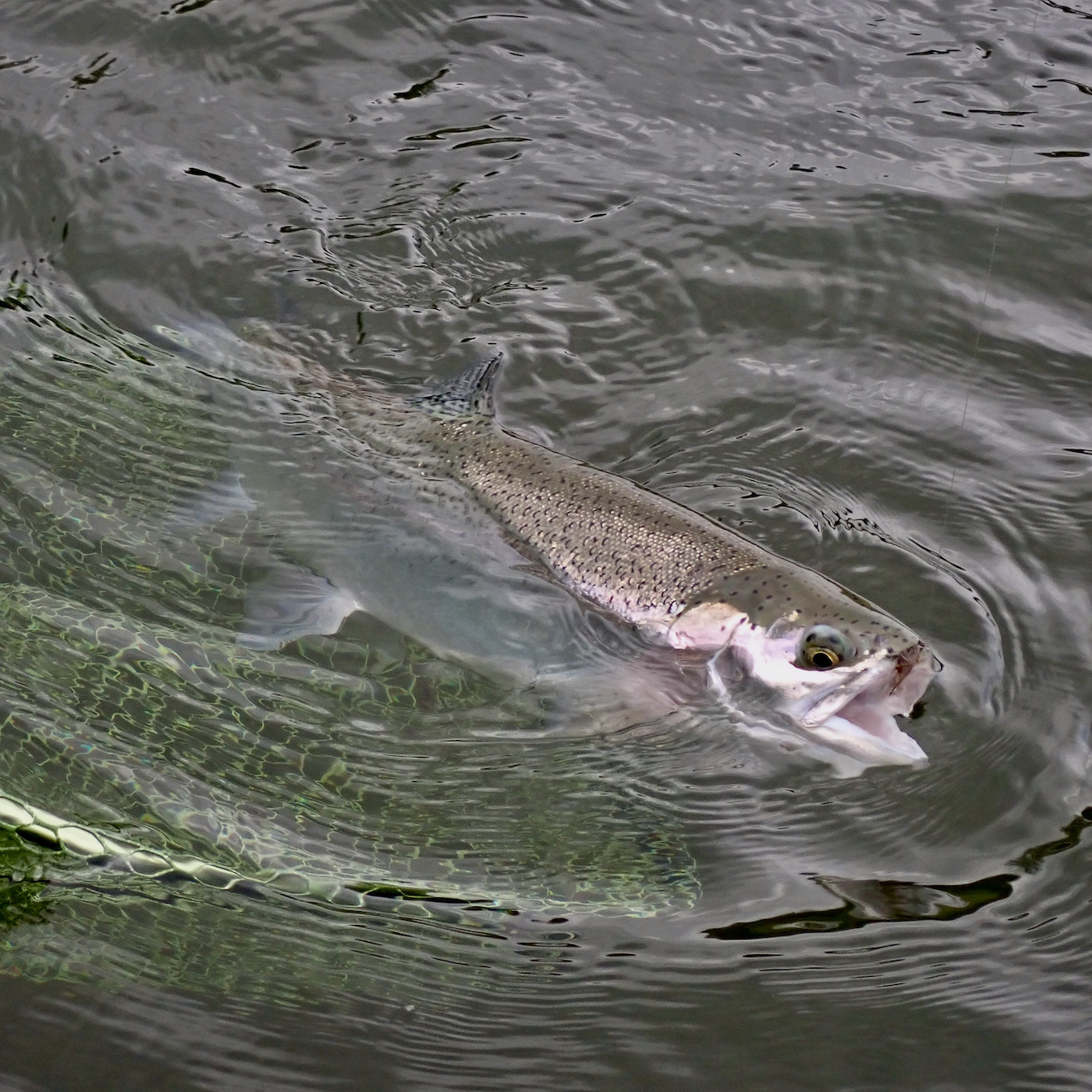
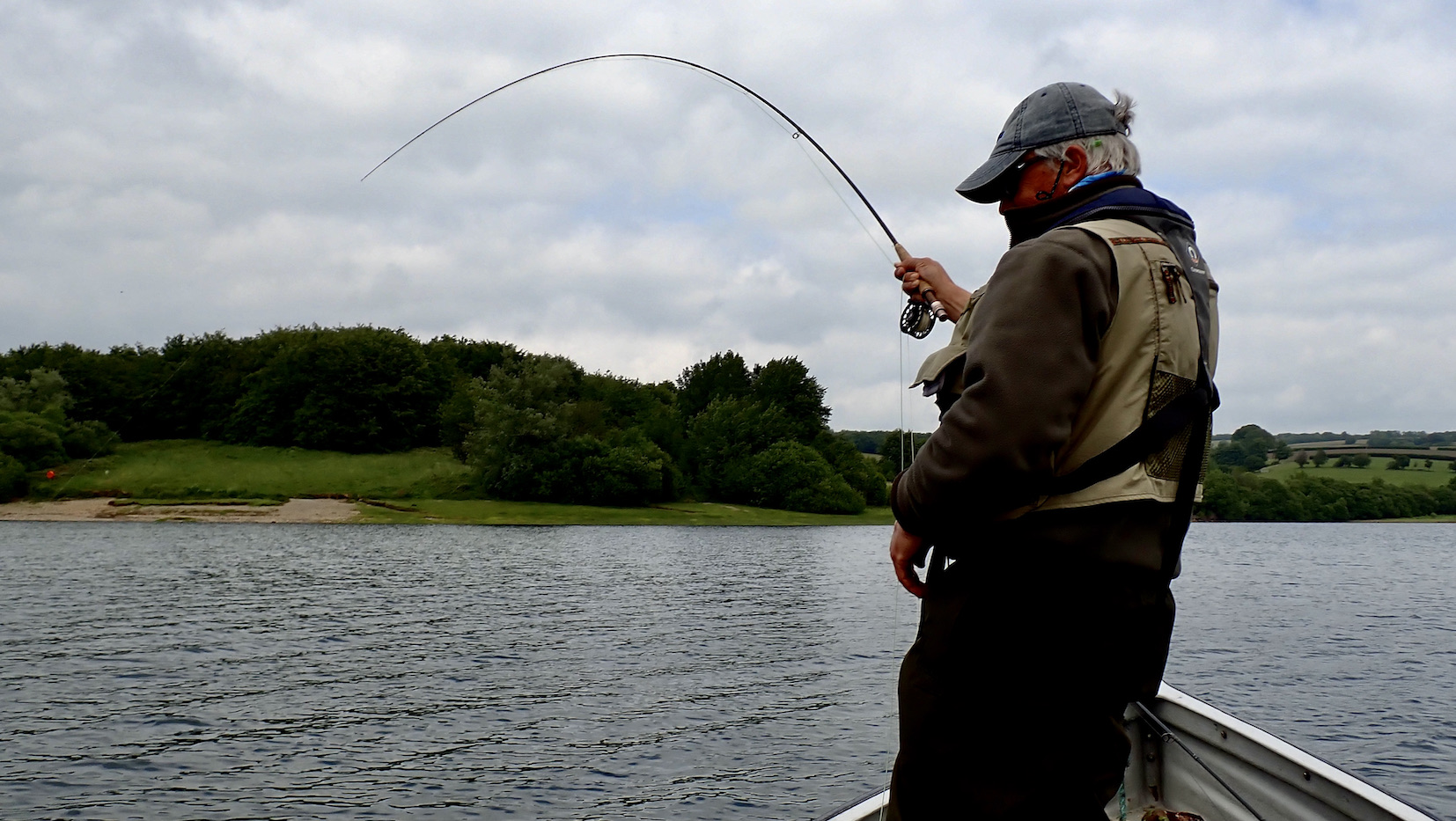
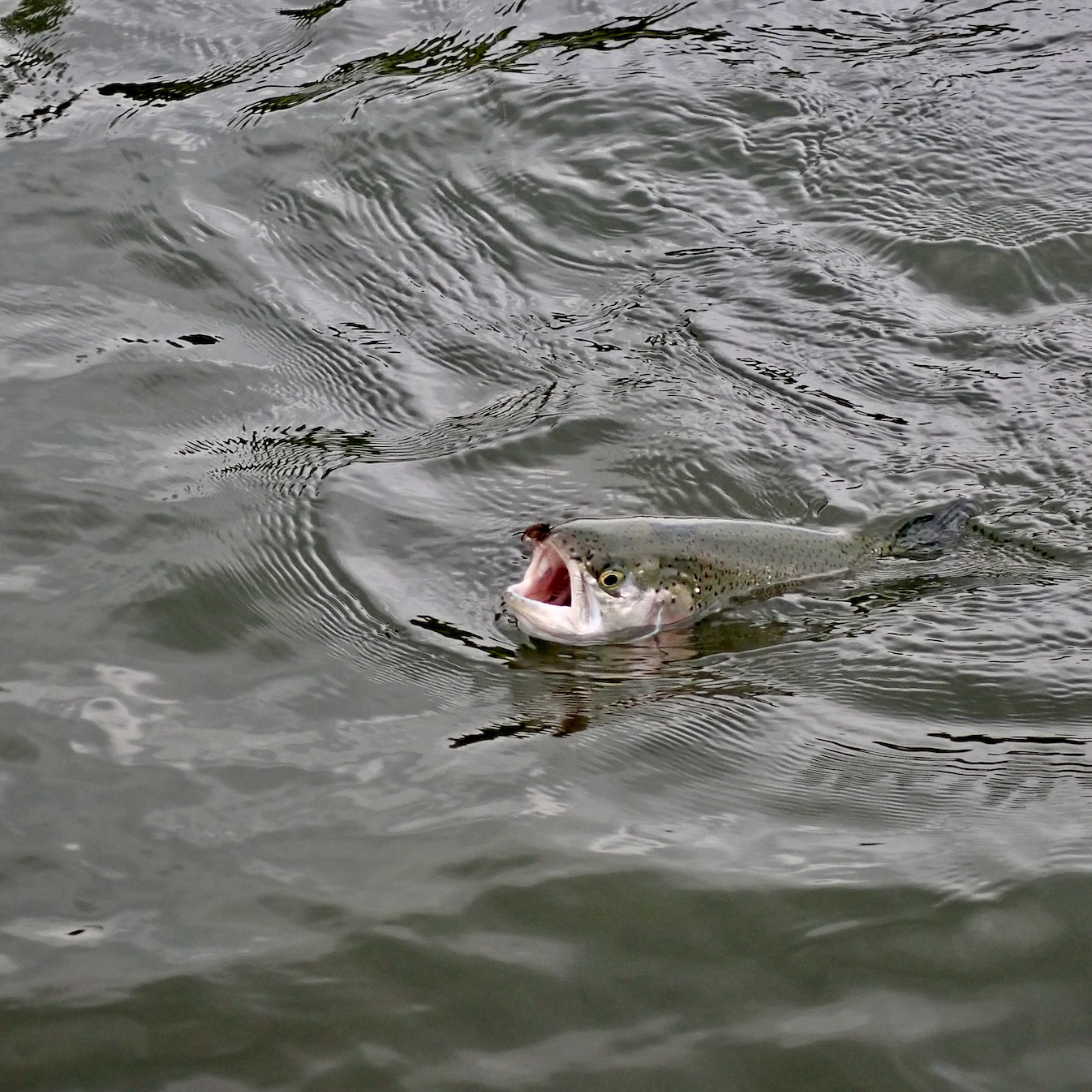
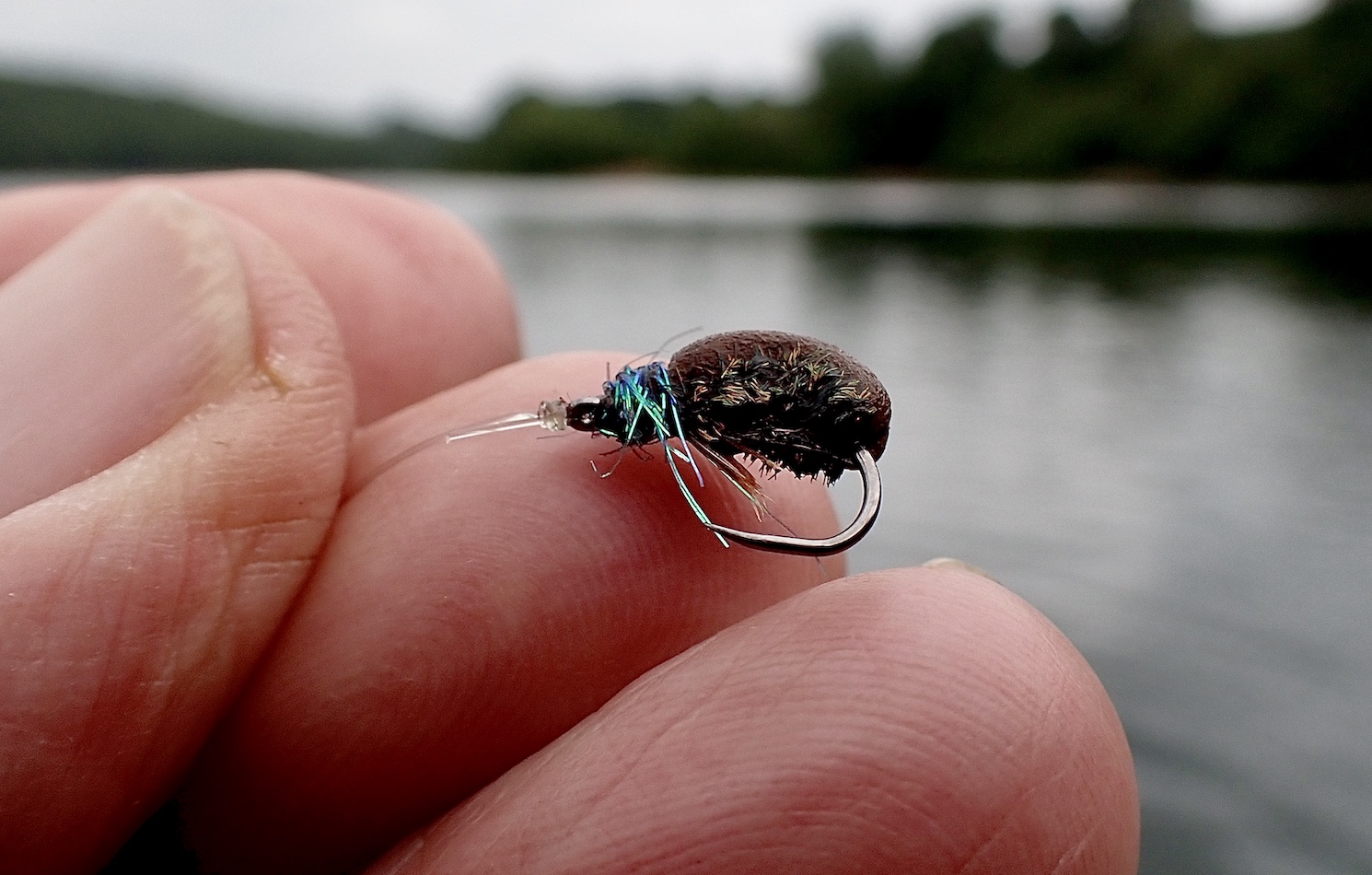
A lesson learnt was that the fish were undoubtedly looking for beetles on the surface. Whilst there were very few beetles showing the fish were still preoccupied with this food source and would intercept our artificial whilst ignoring lures.
We returned to the boat jetty shortly after 6.00pm reflecting upon a rewarding day afloat on this jewel of water high on Exmoor. It had not been an easy day and that one opportunist cast had made it another day to remember. It is always worth reflecting that it only takes one cast in the right place at the right time.

